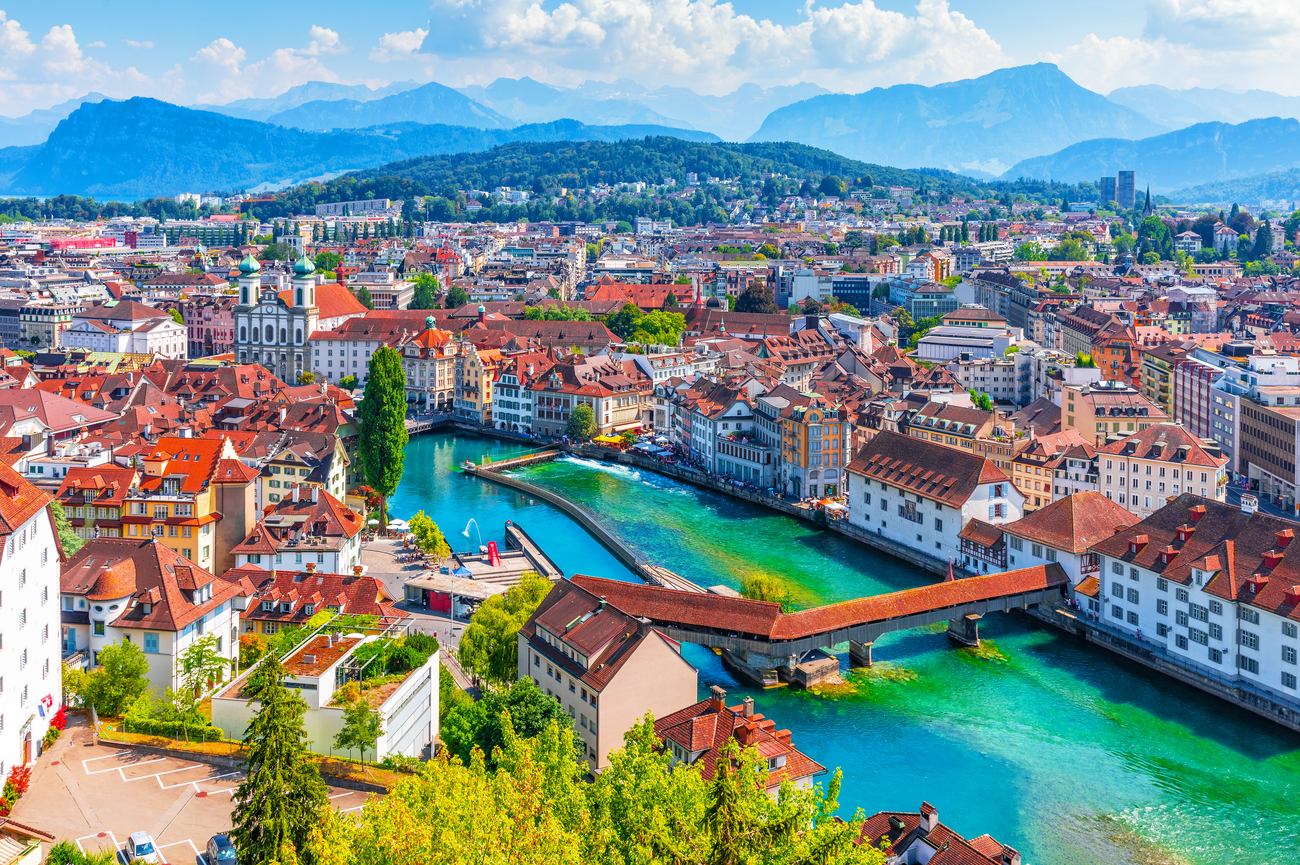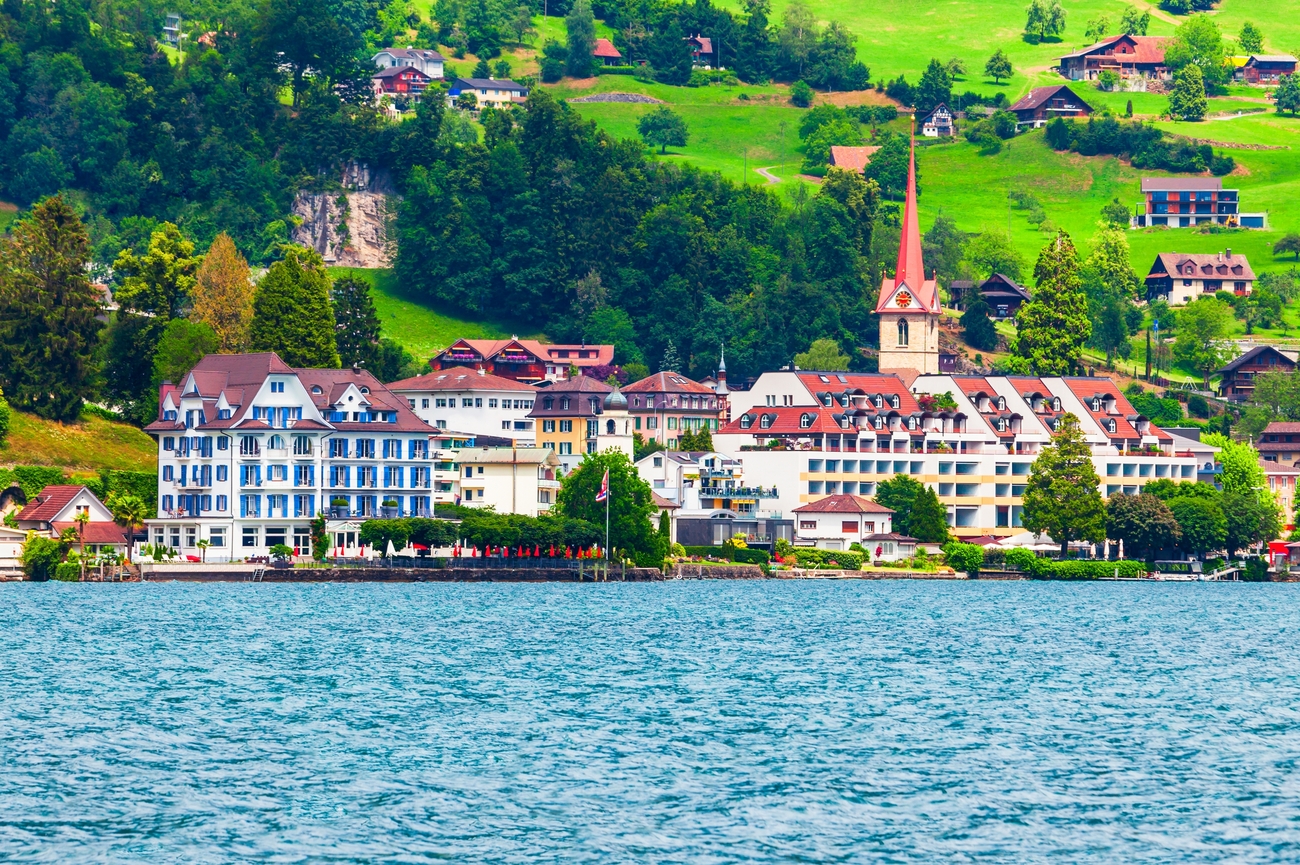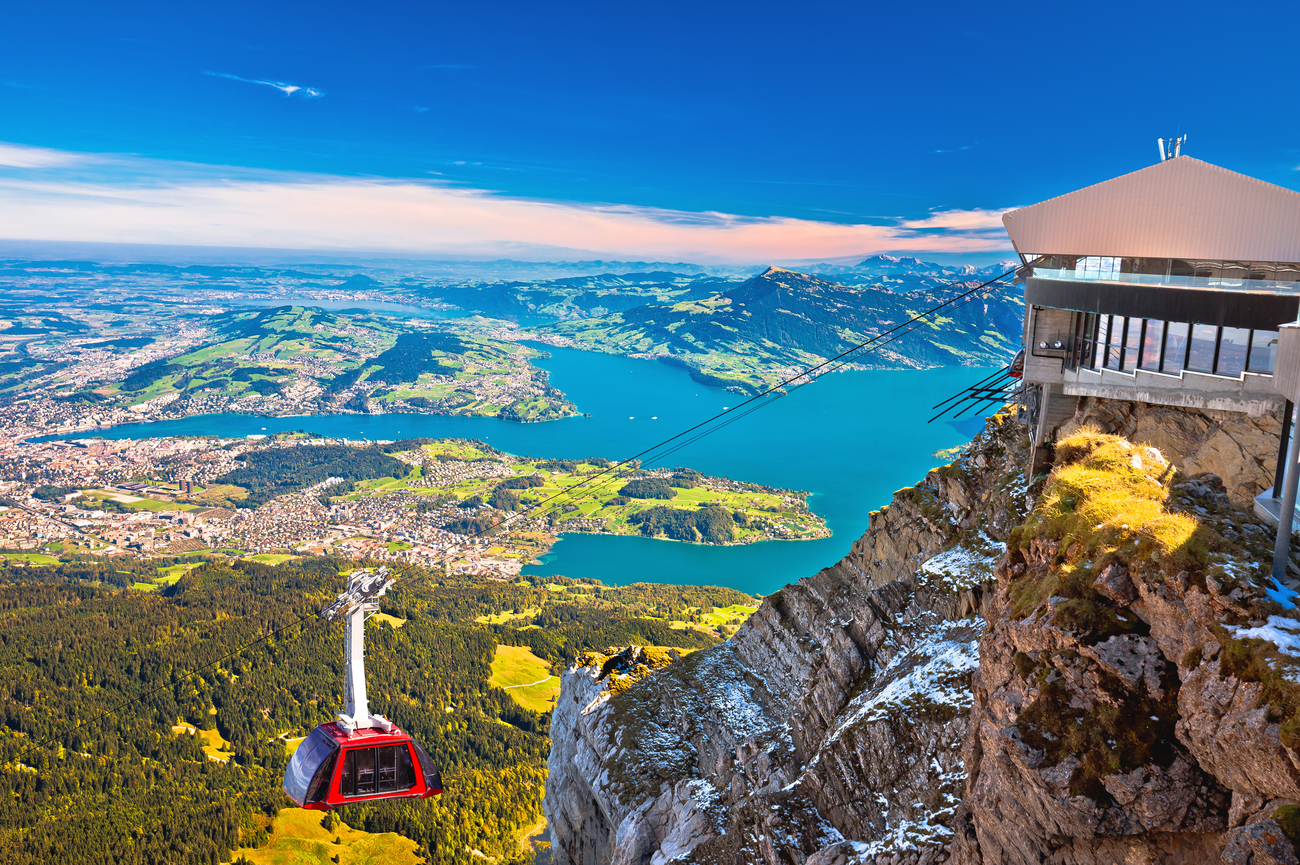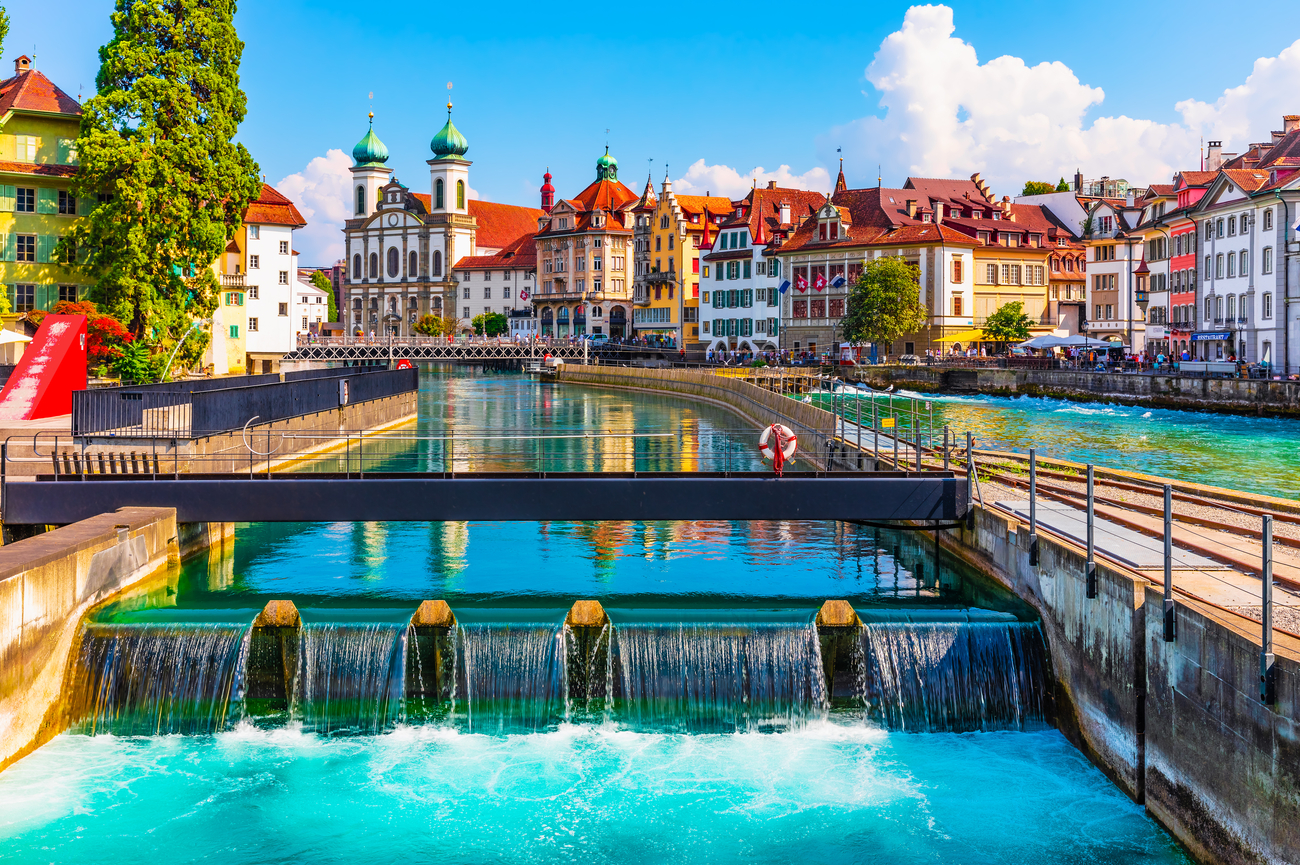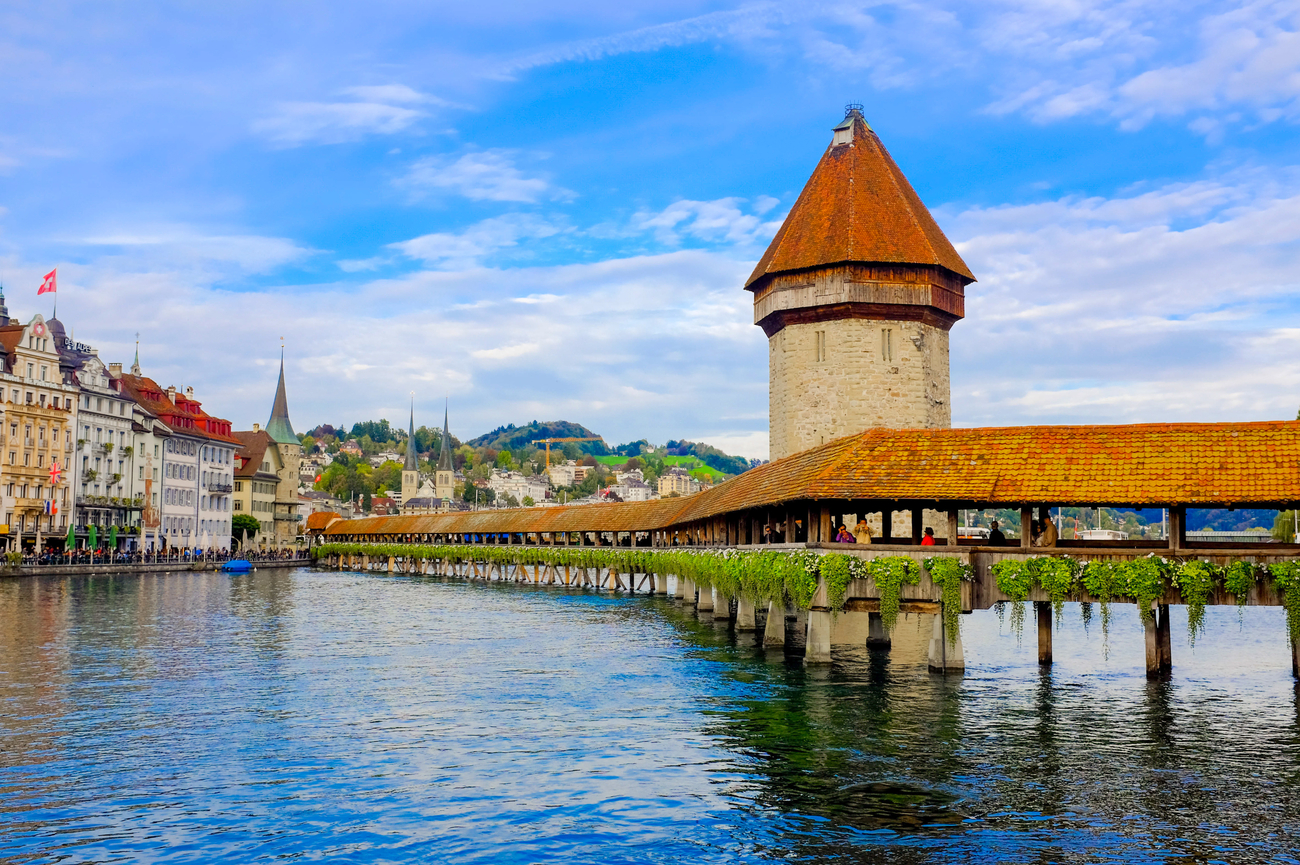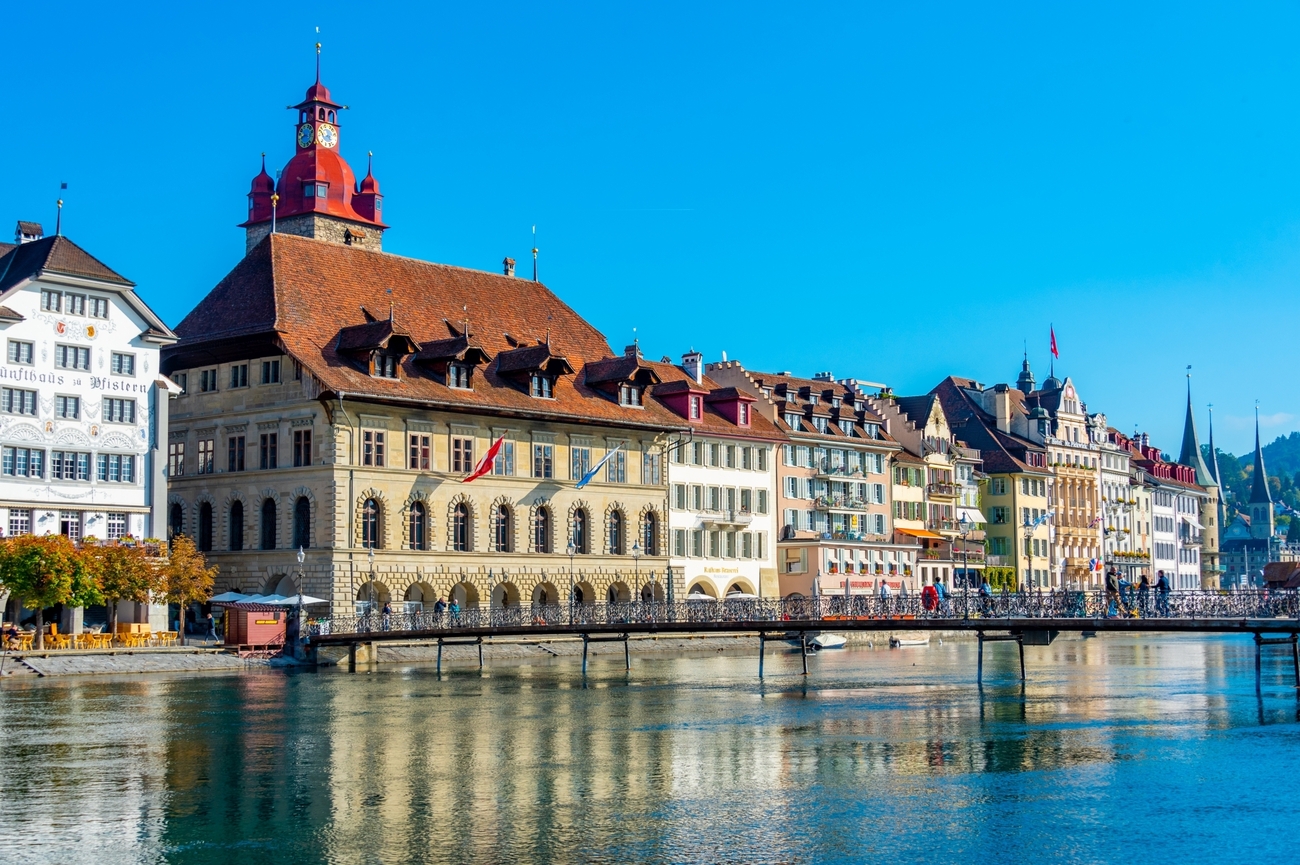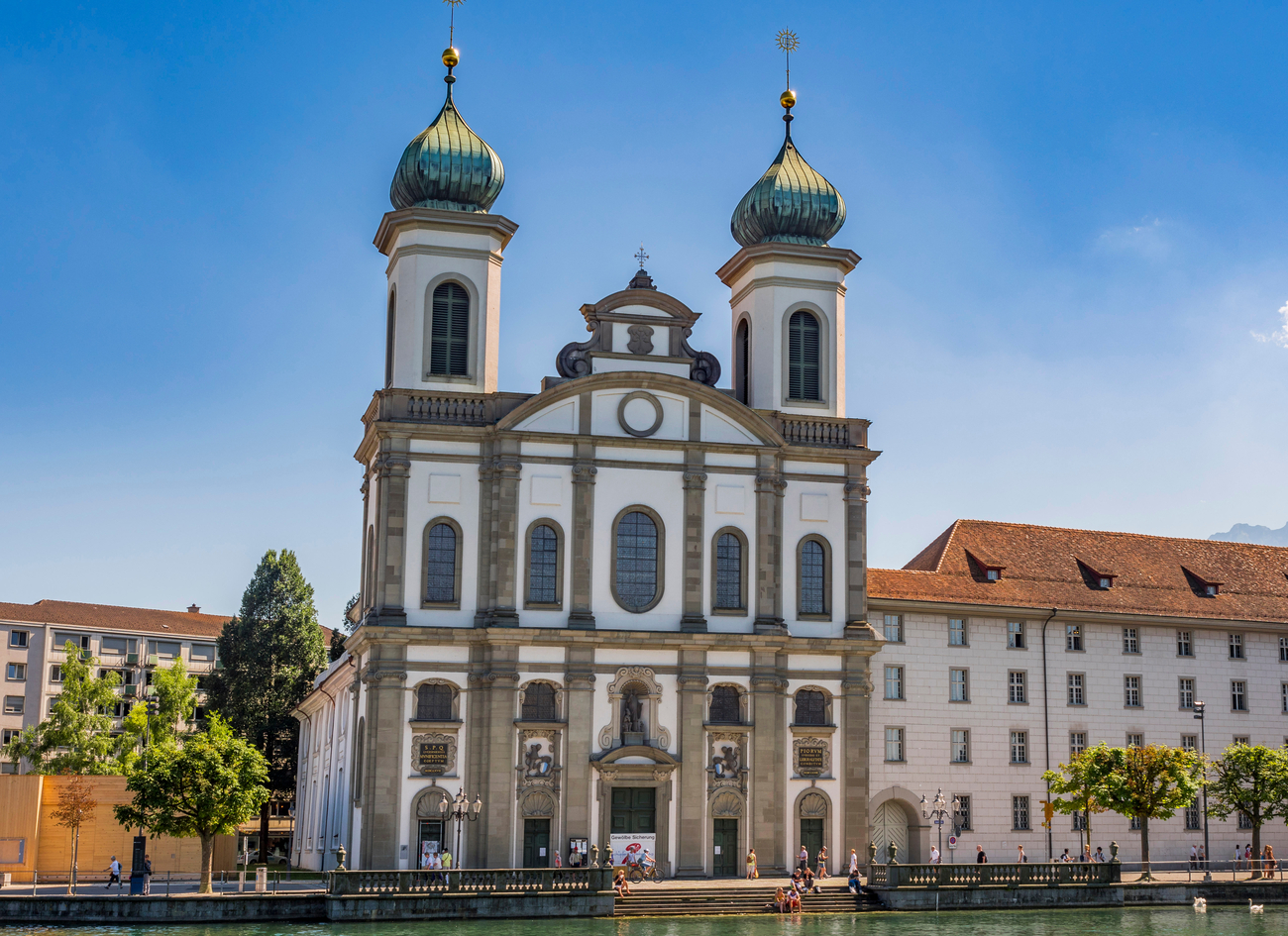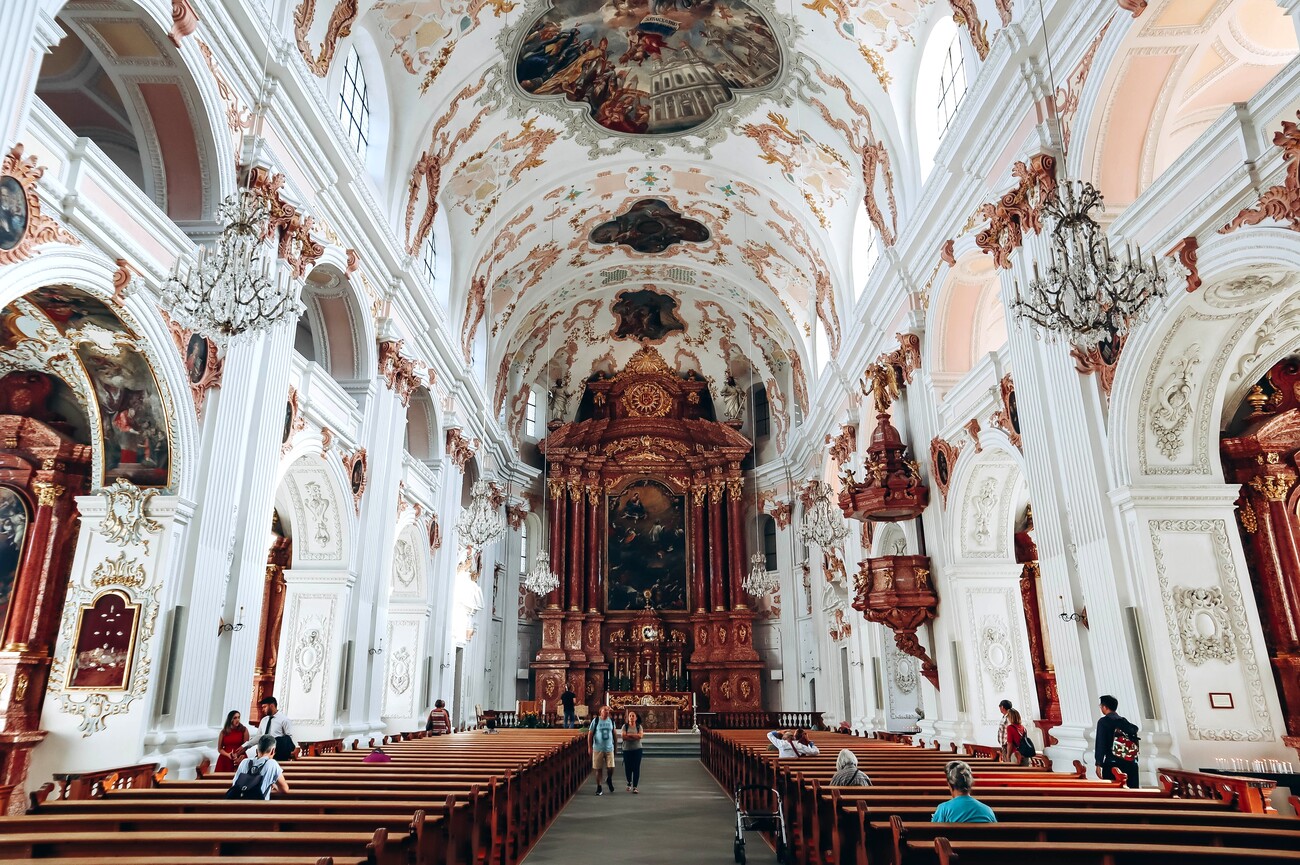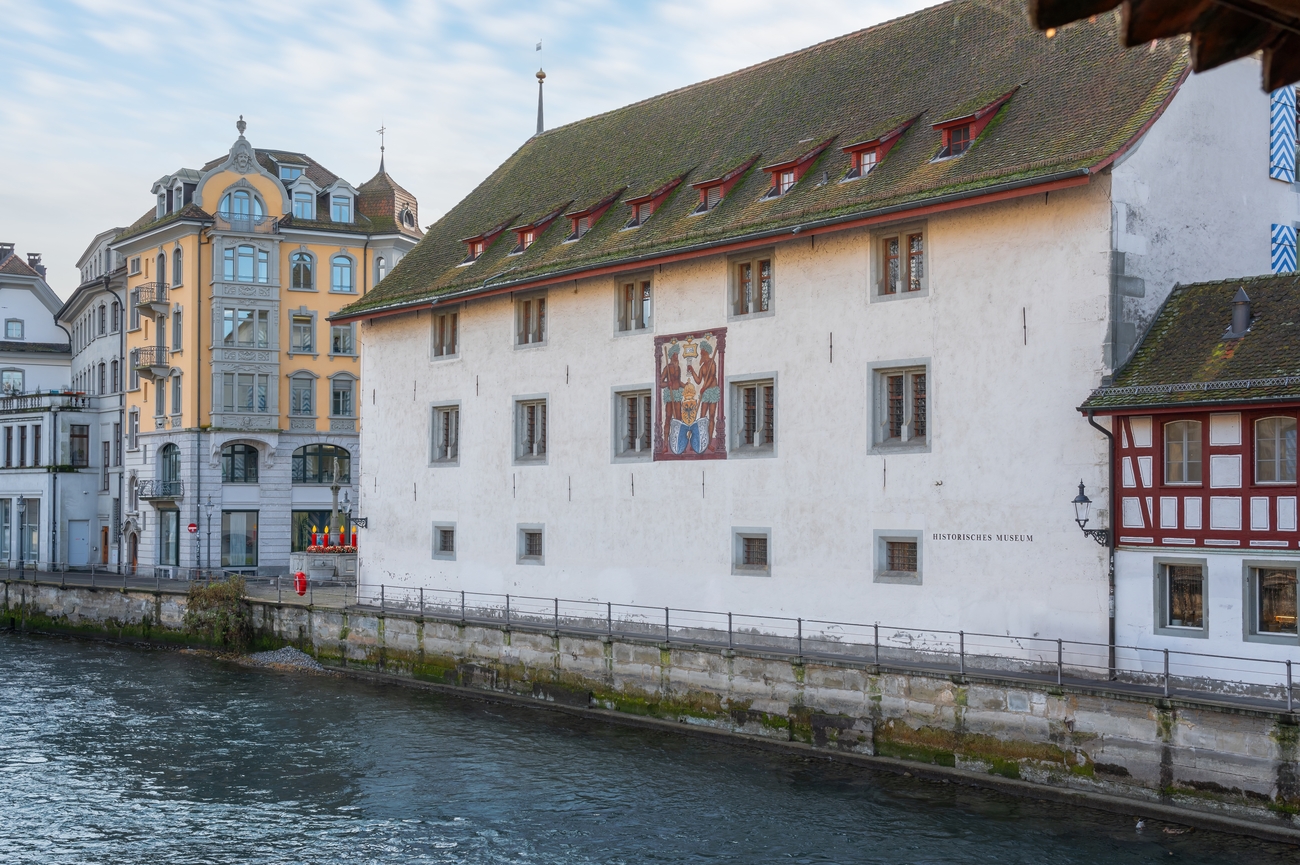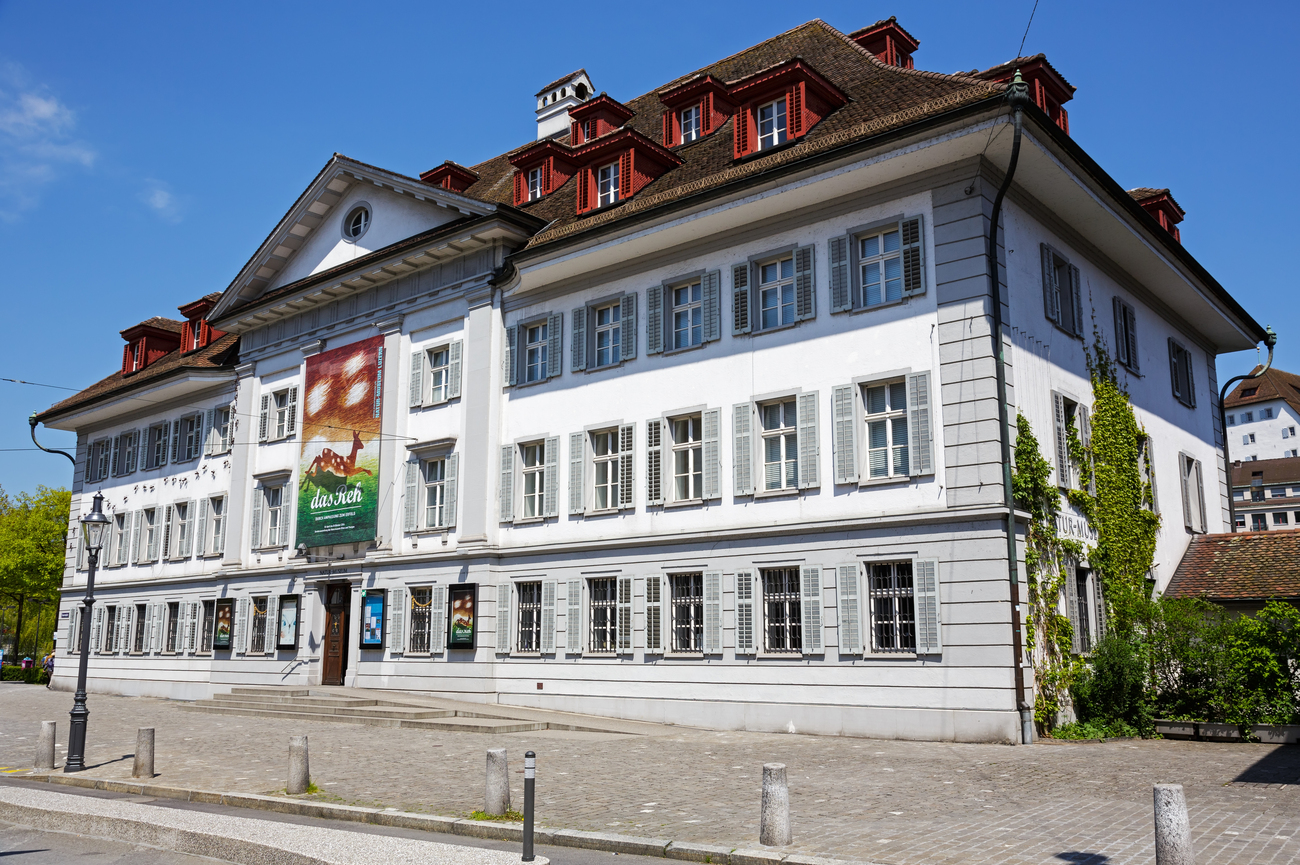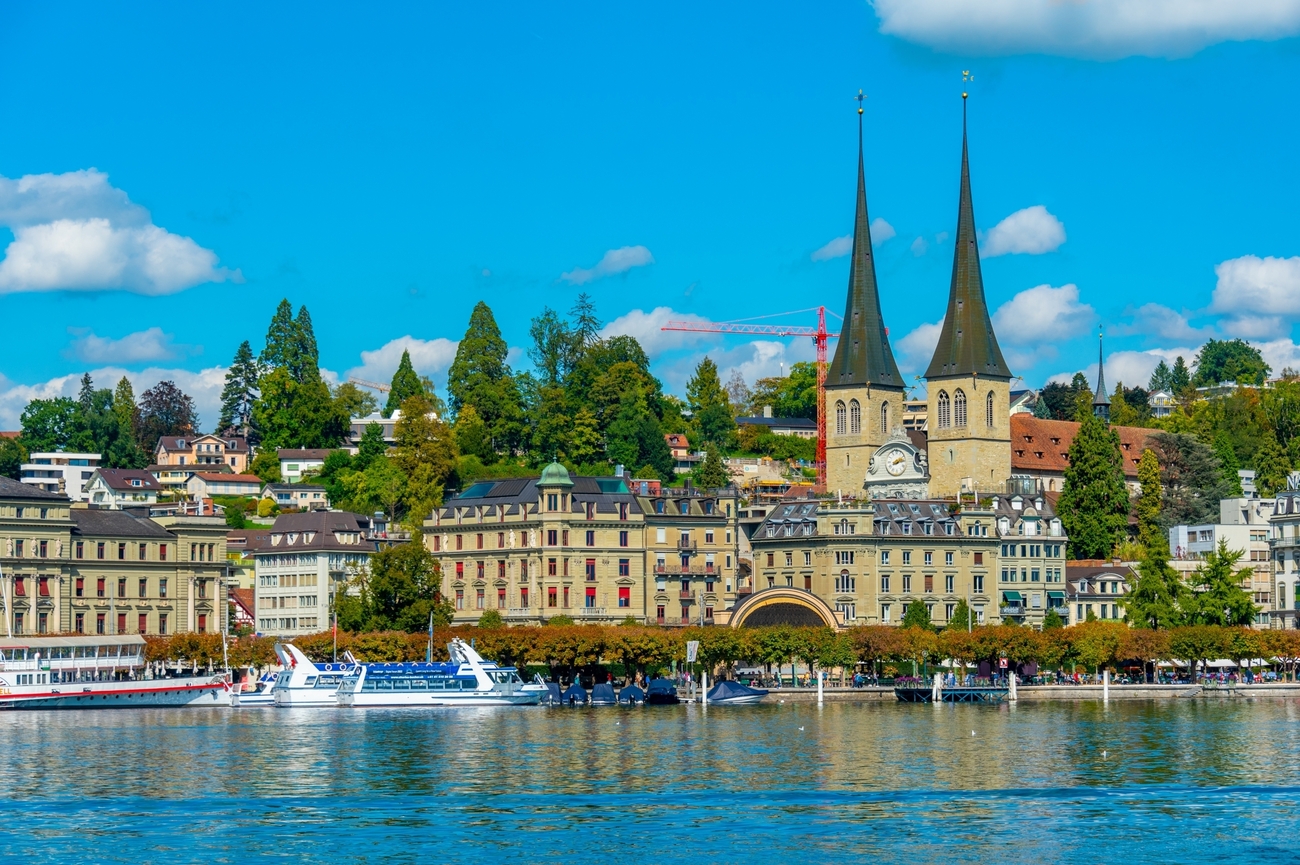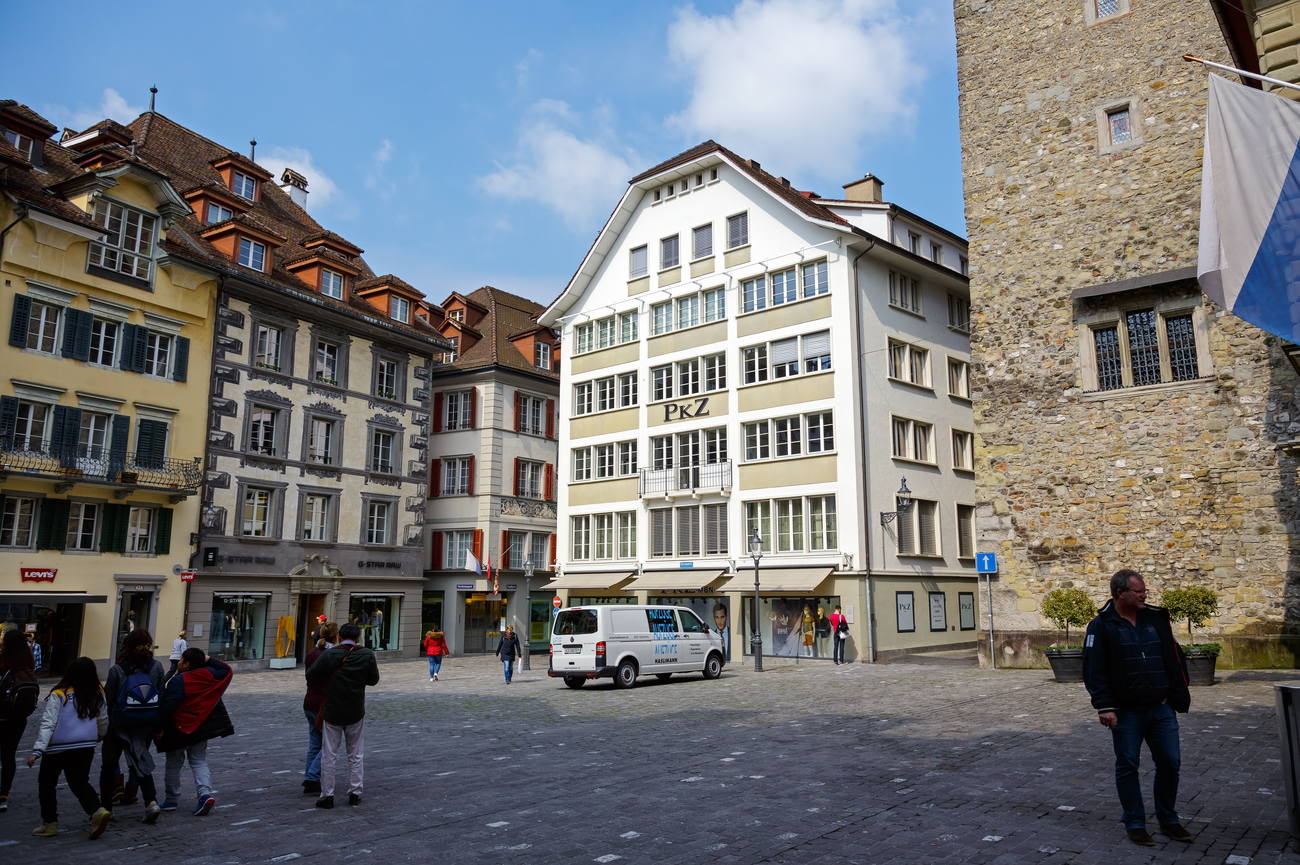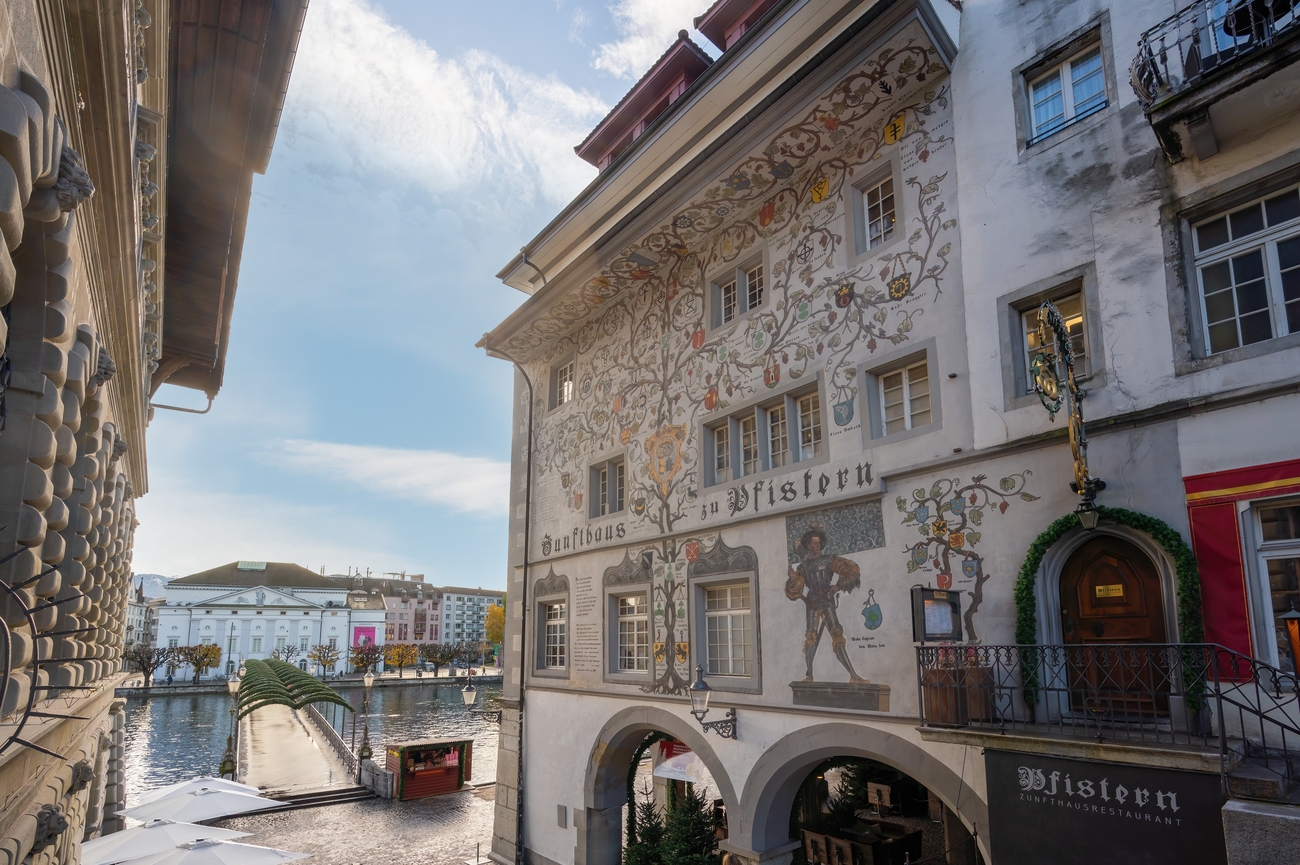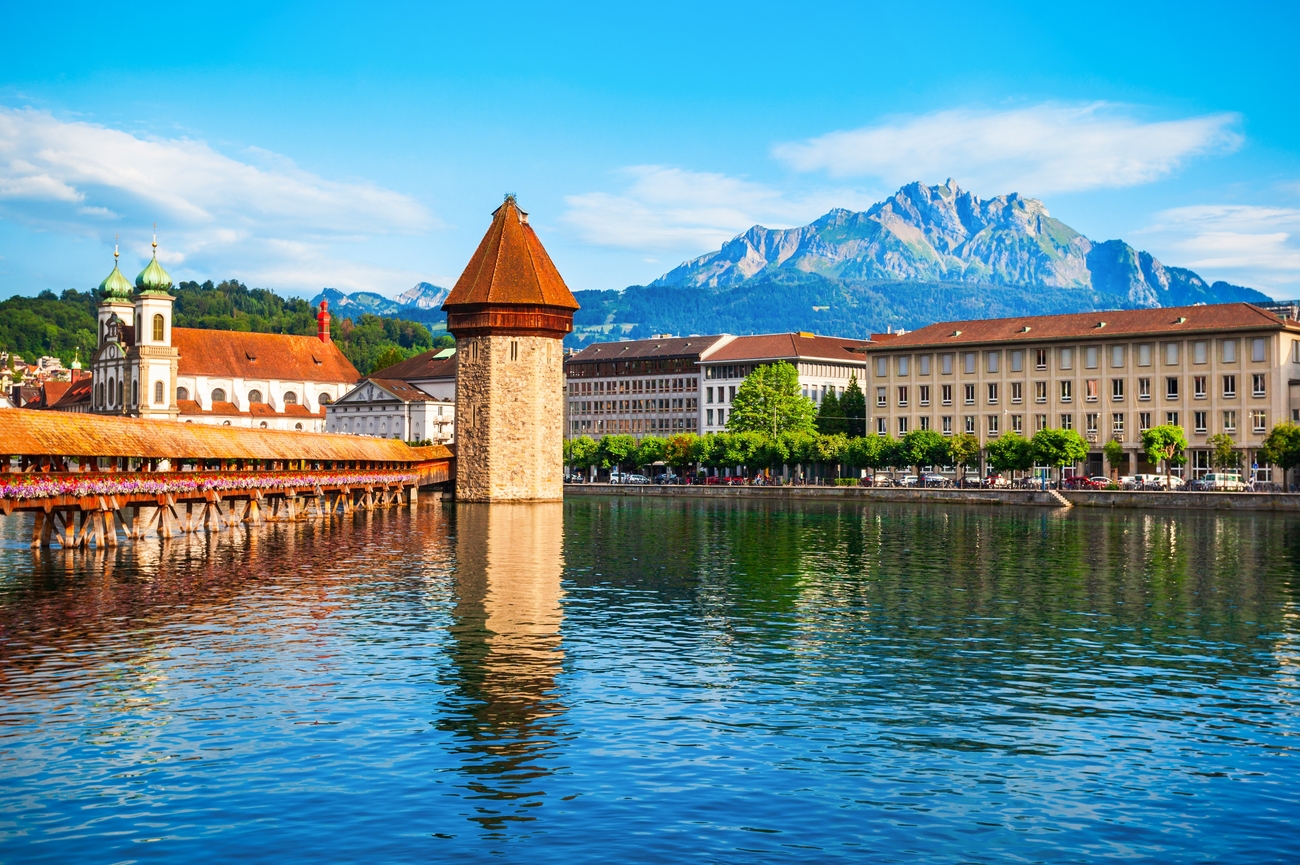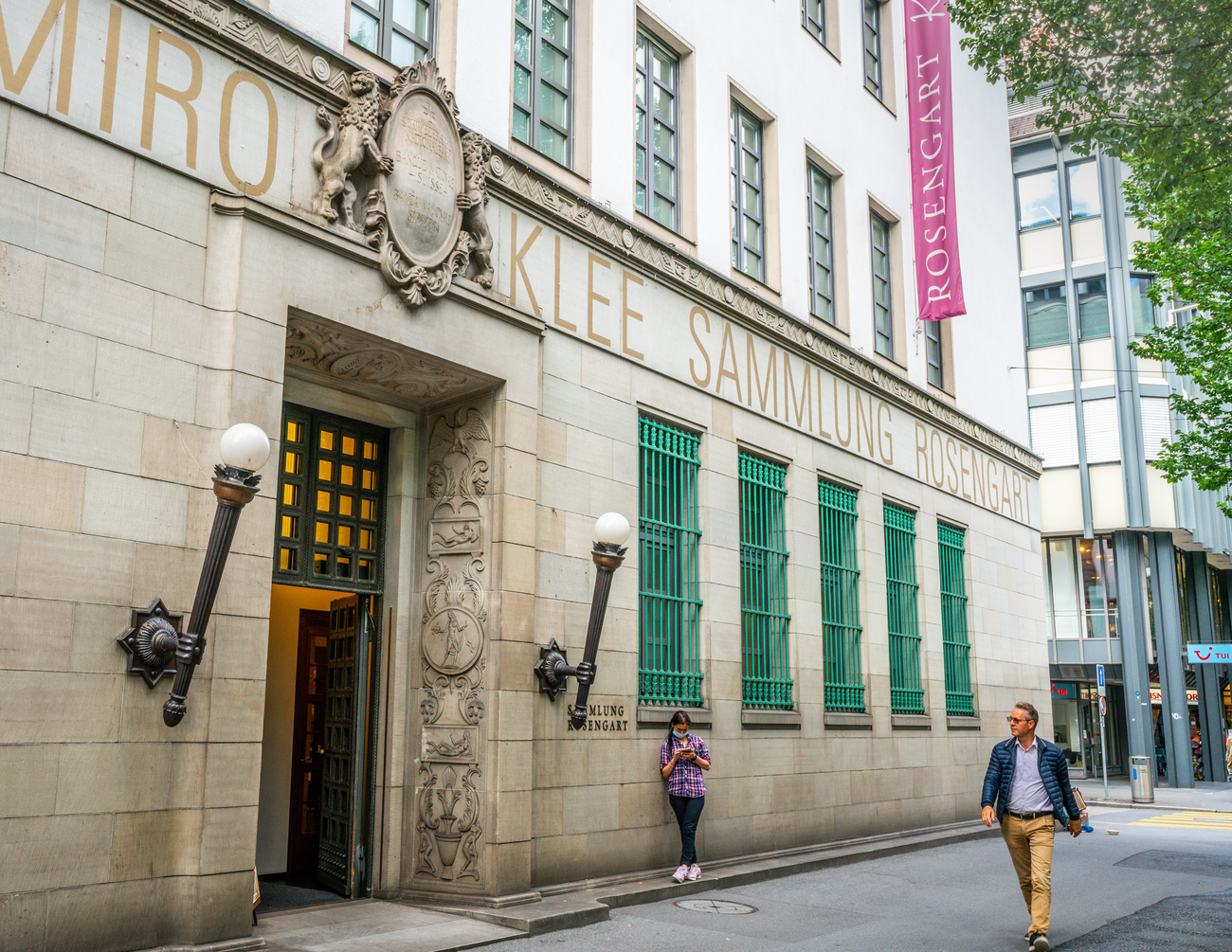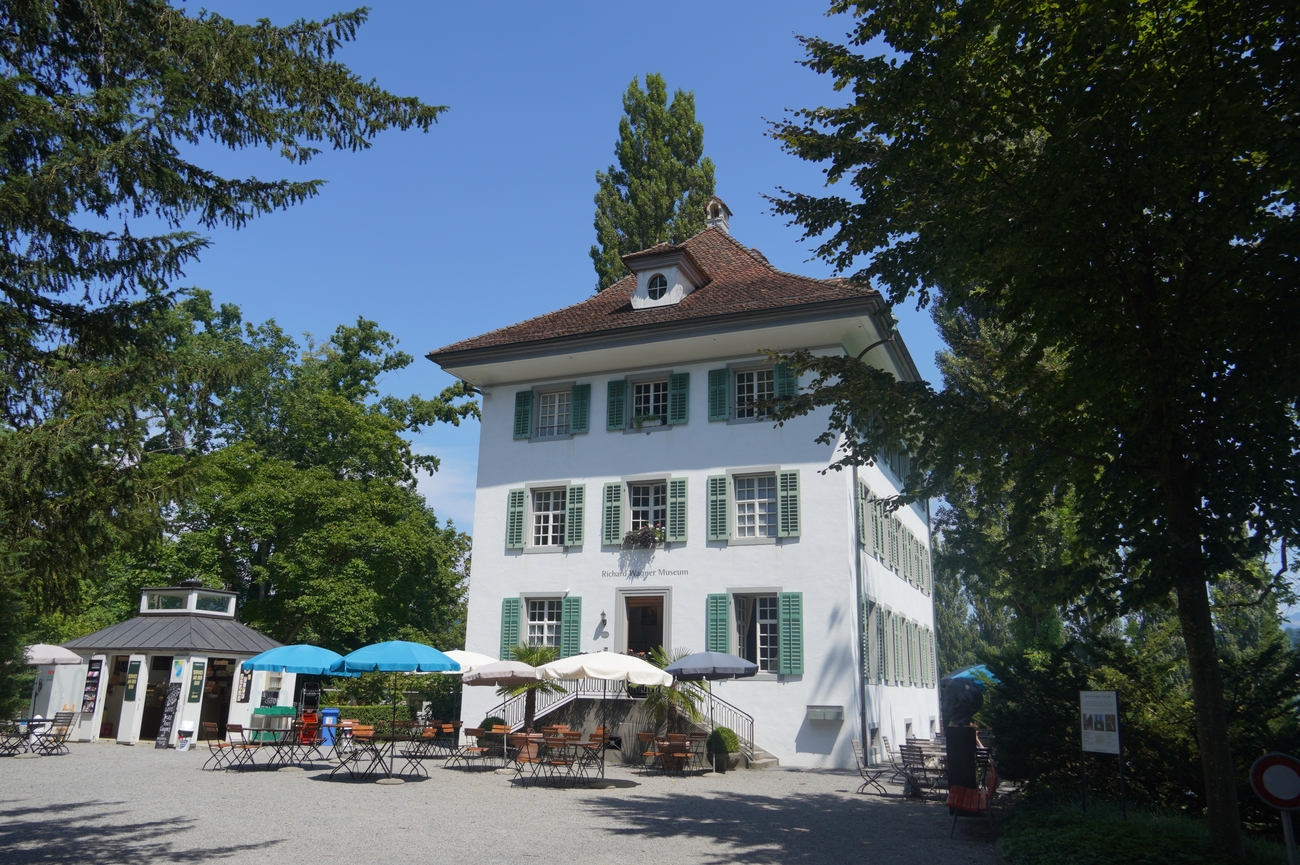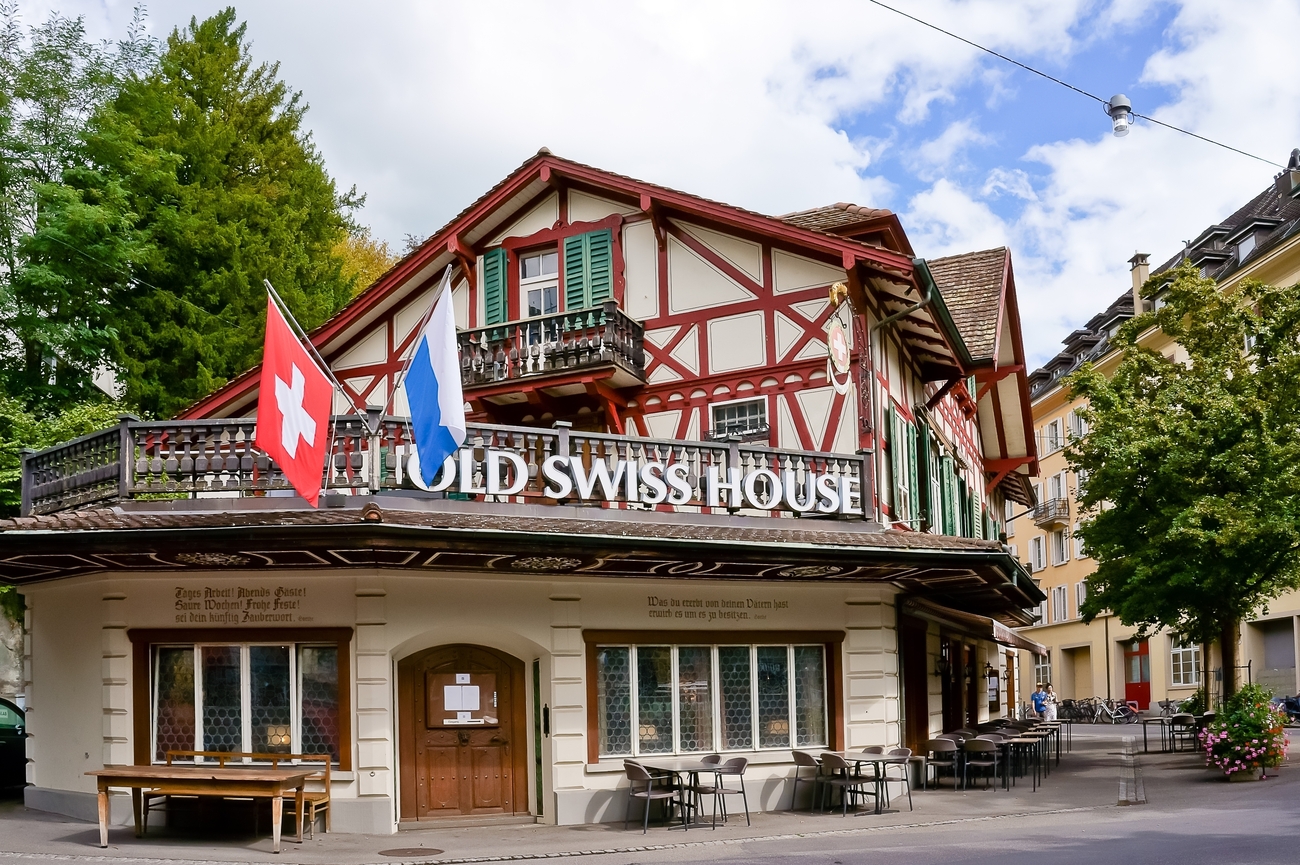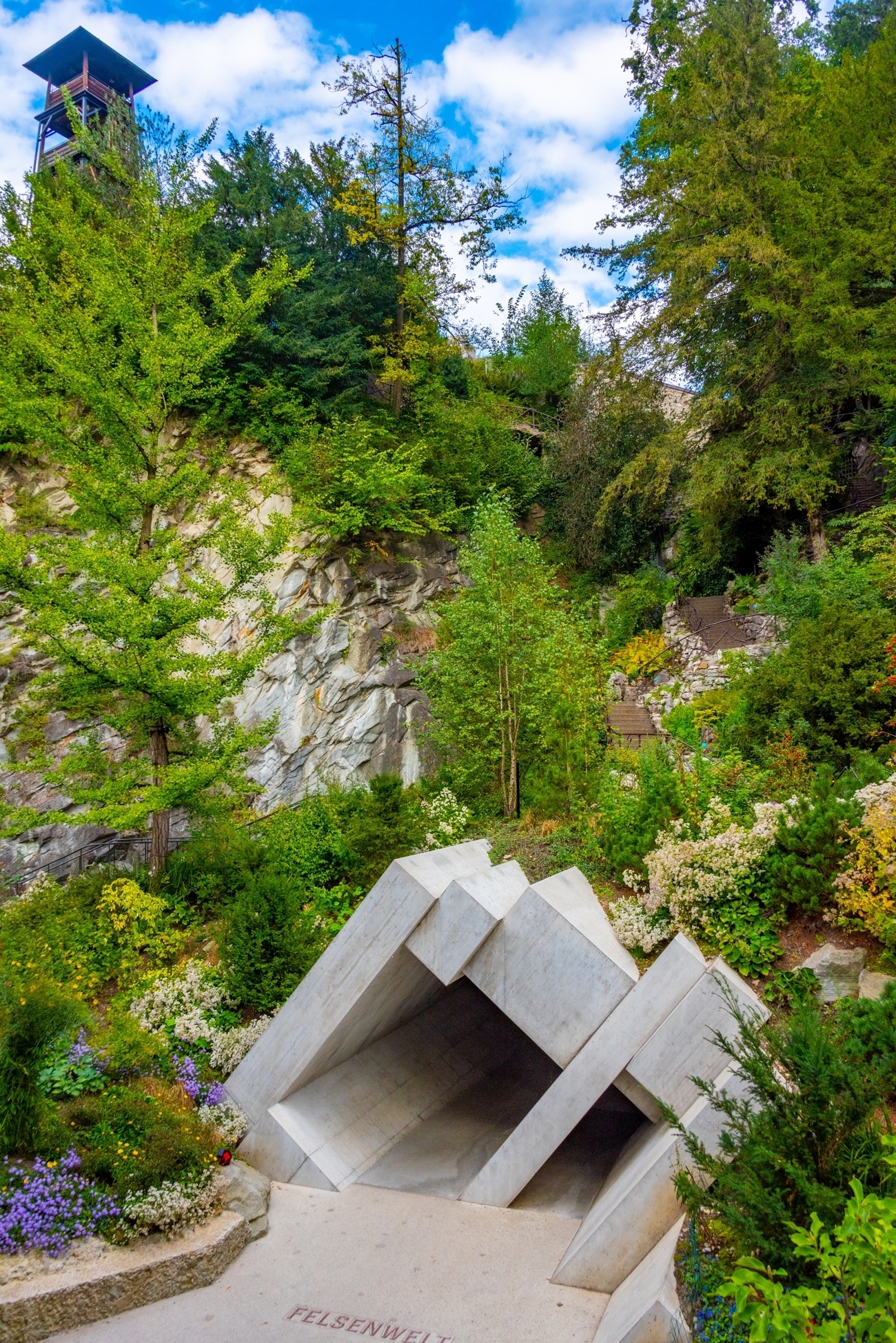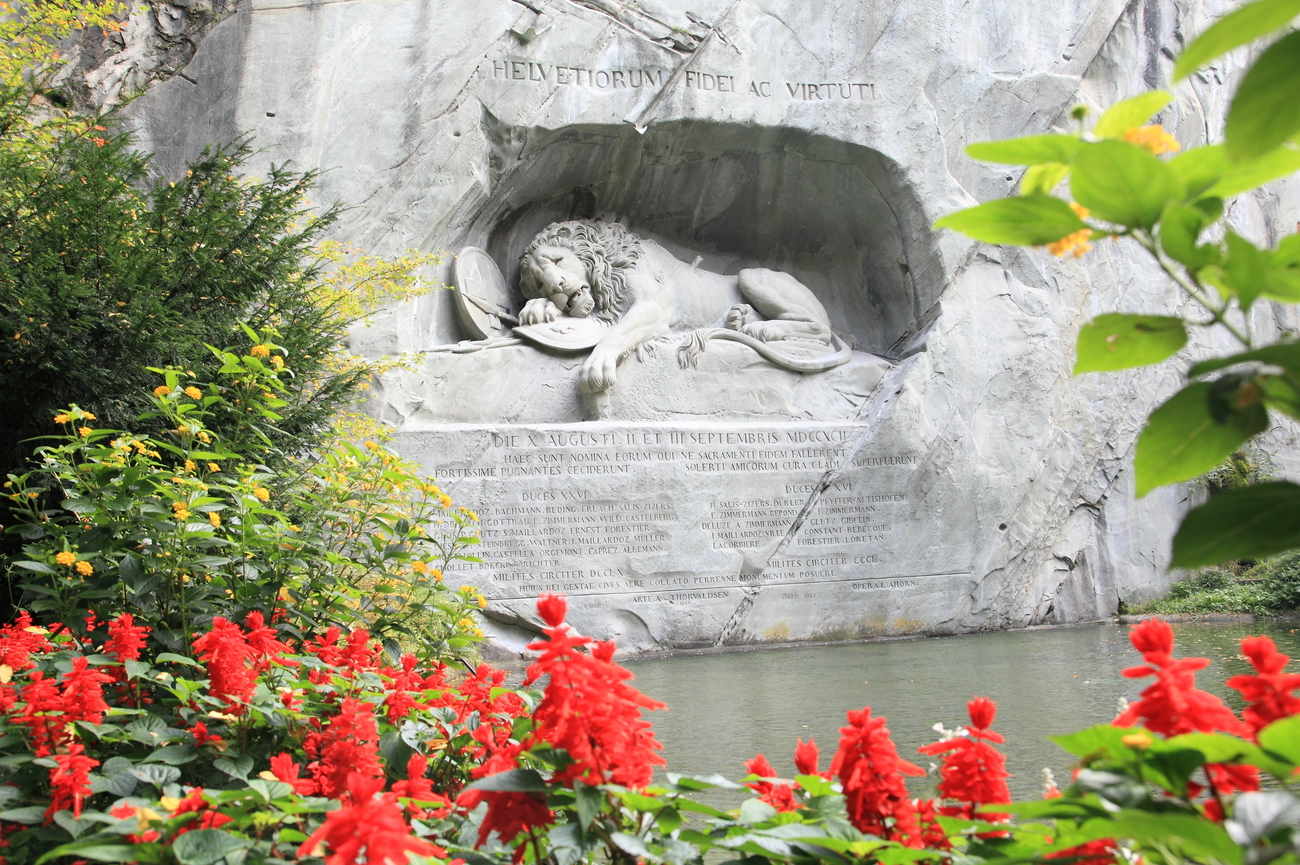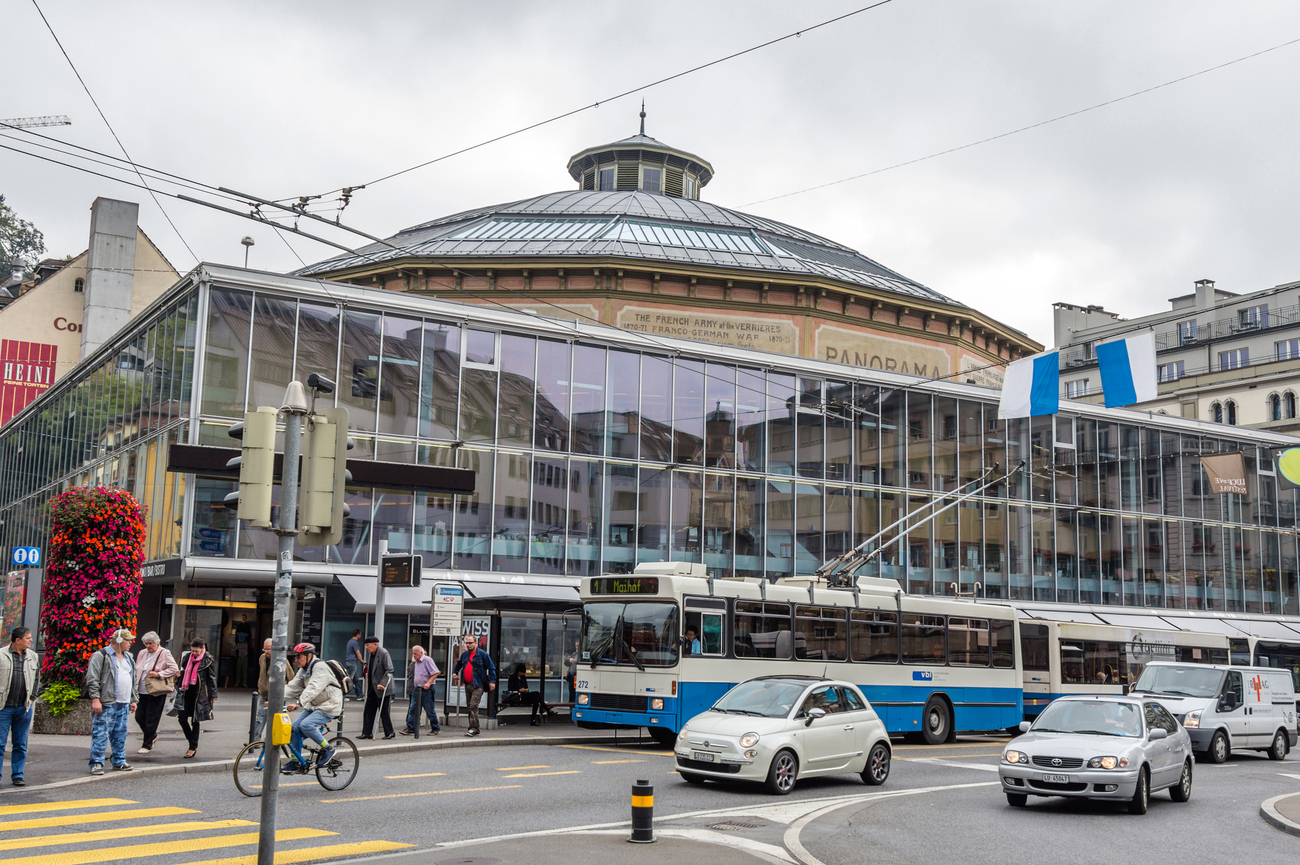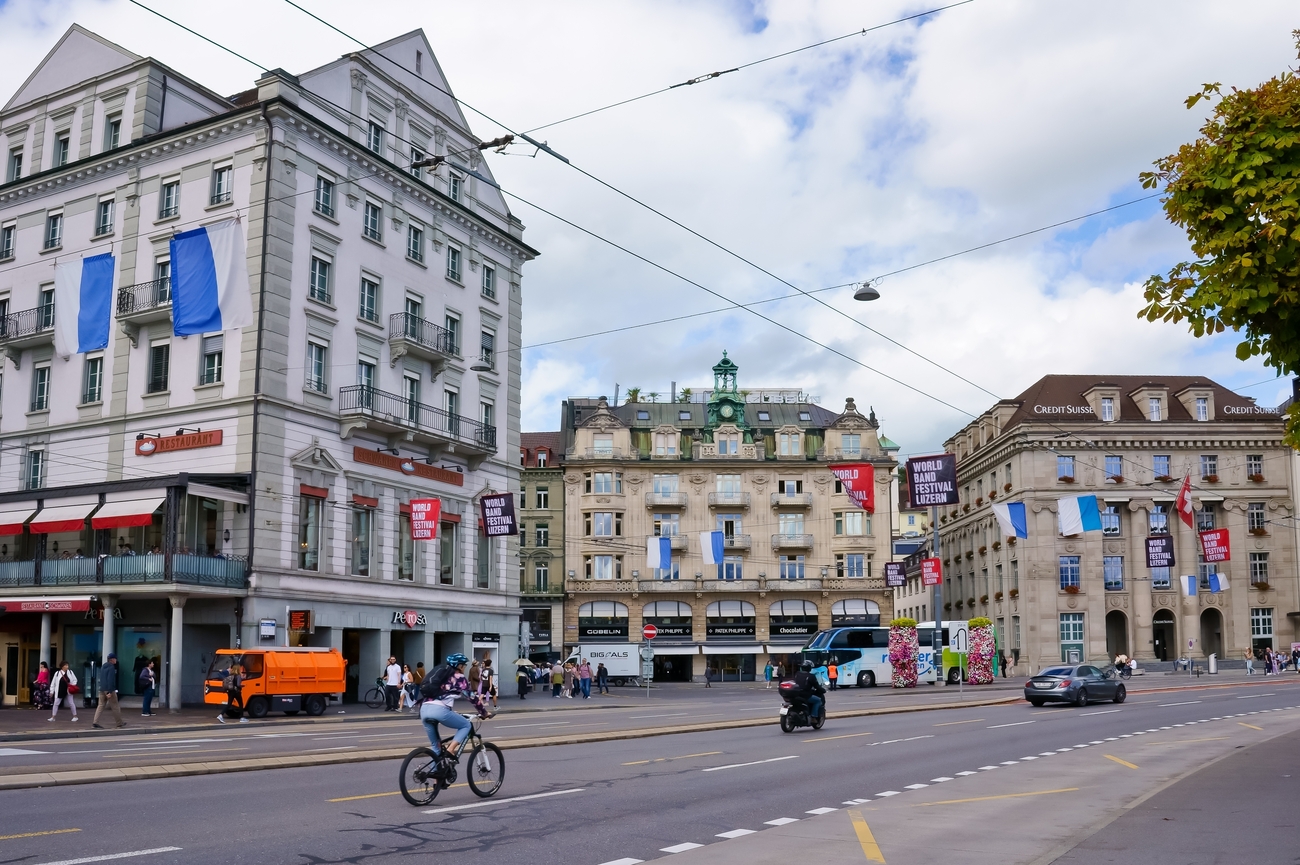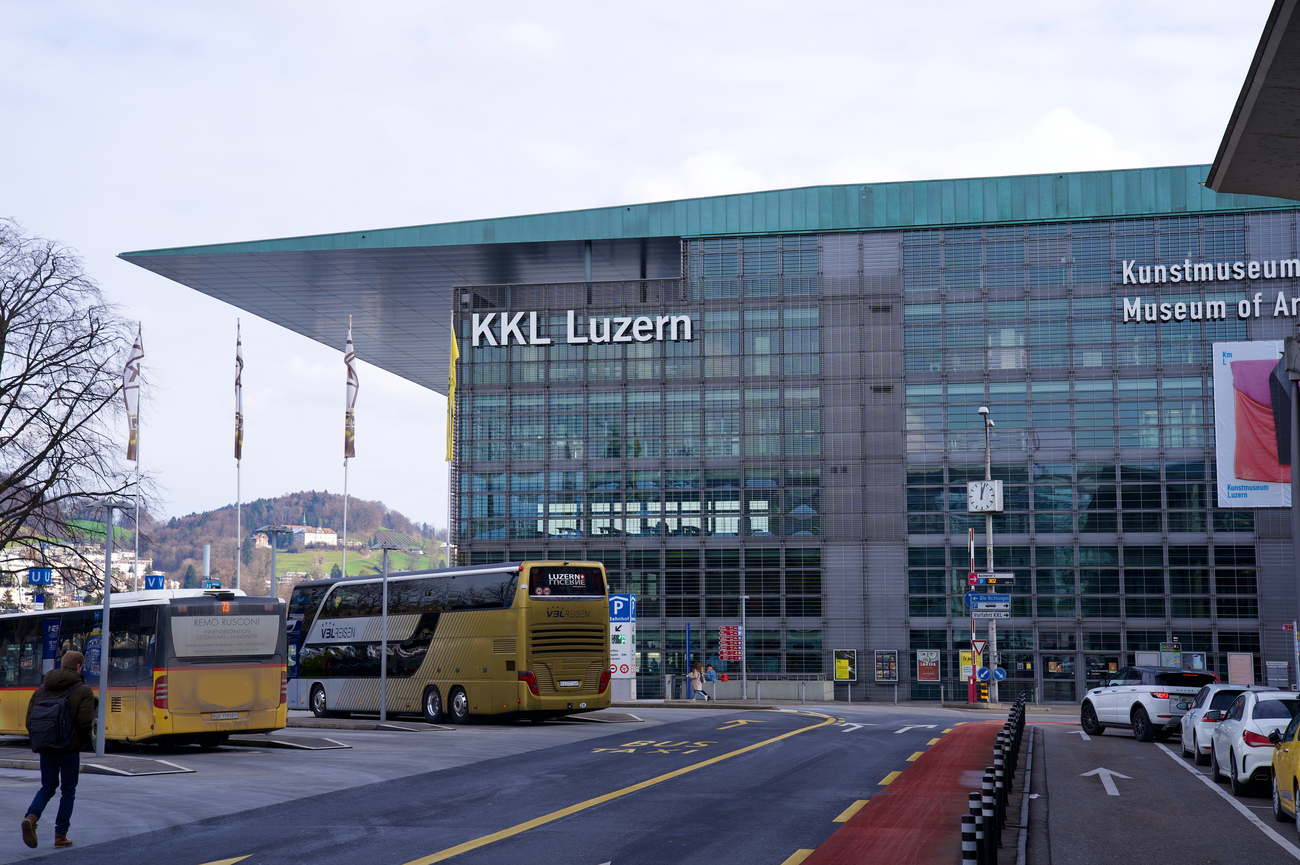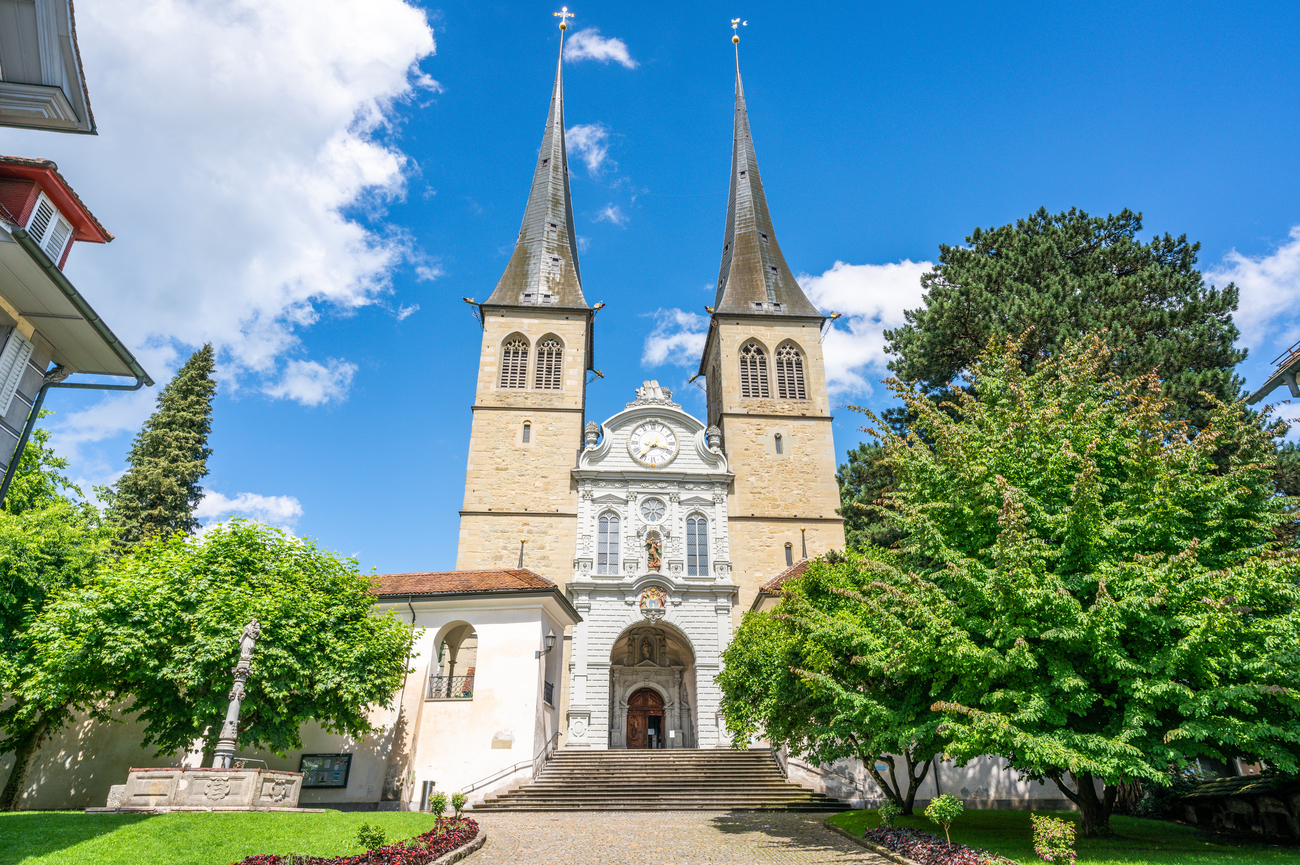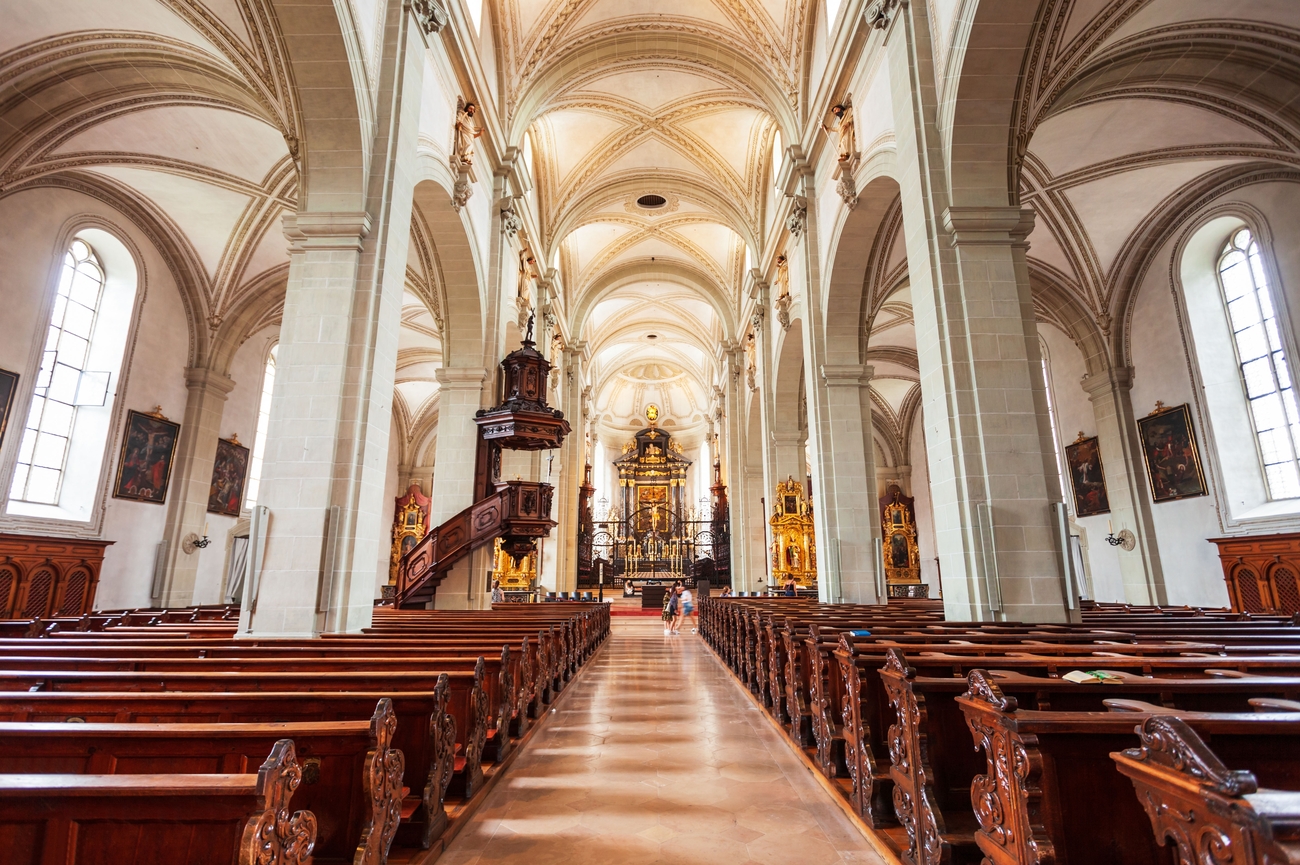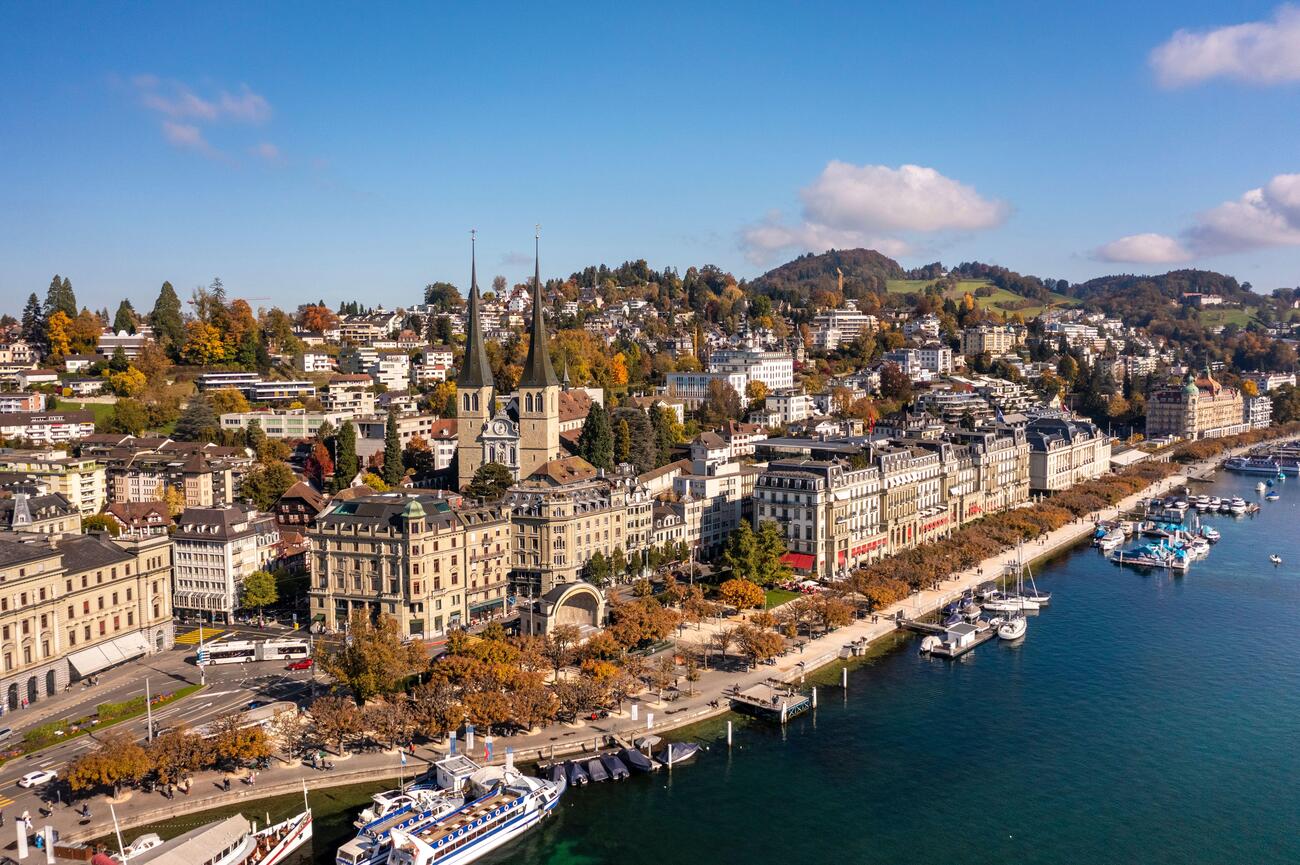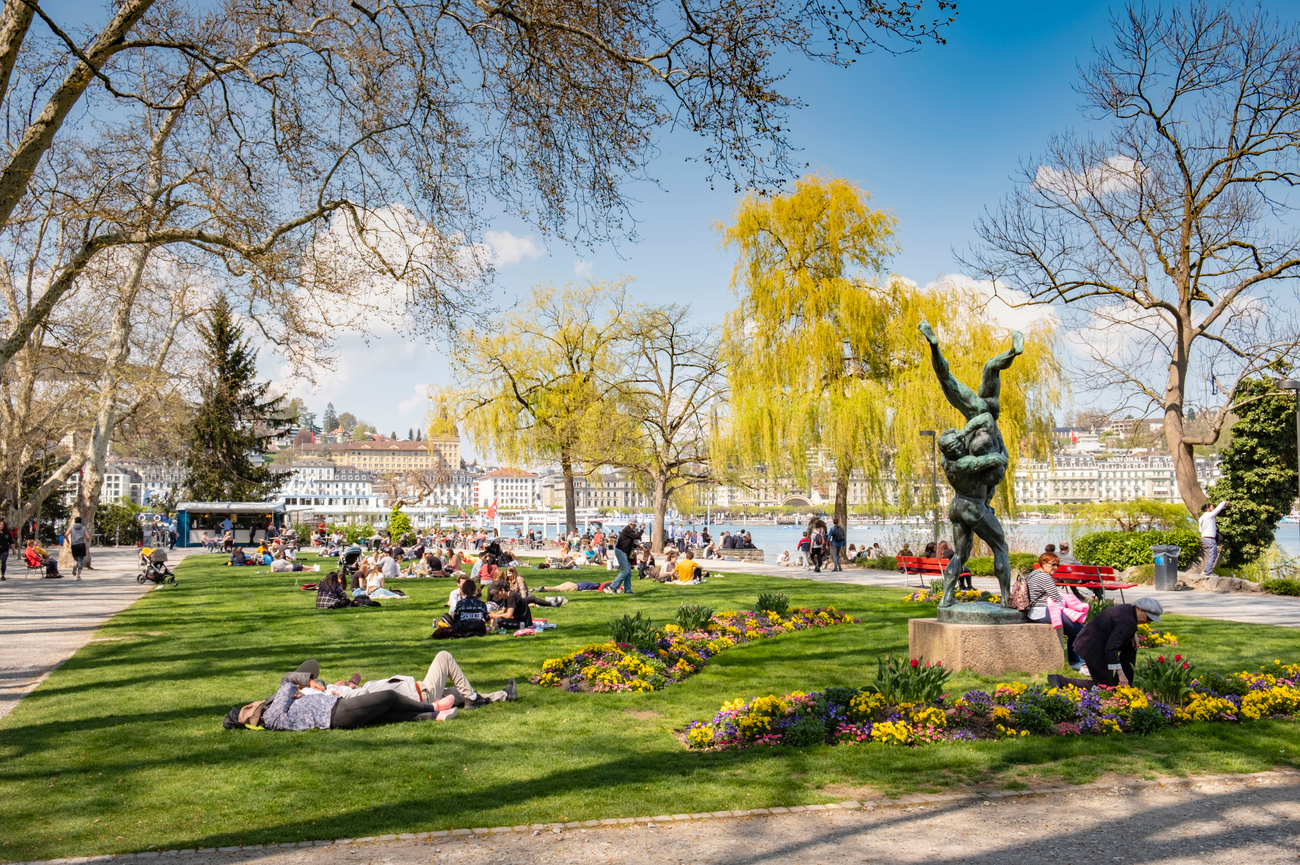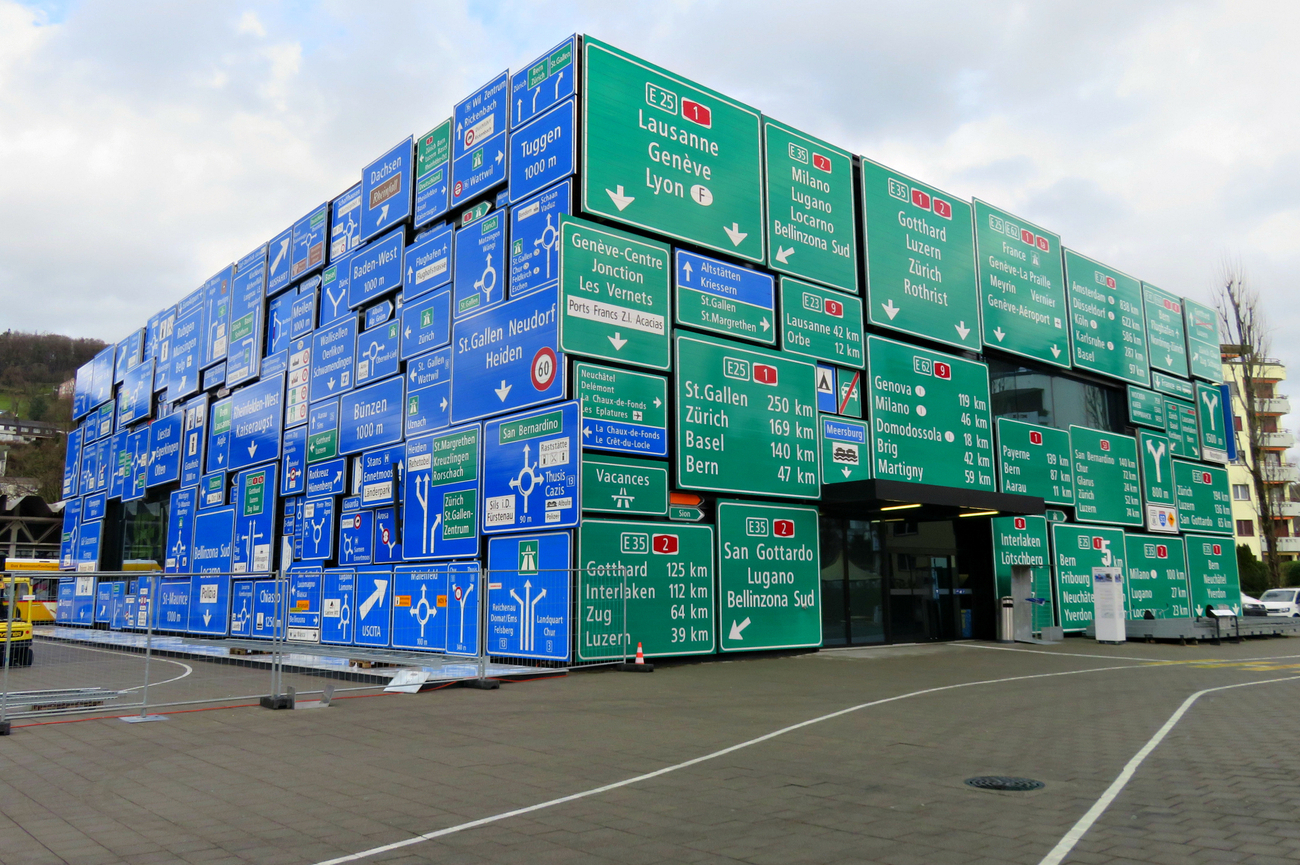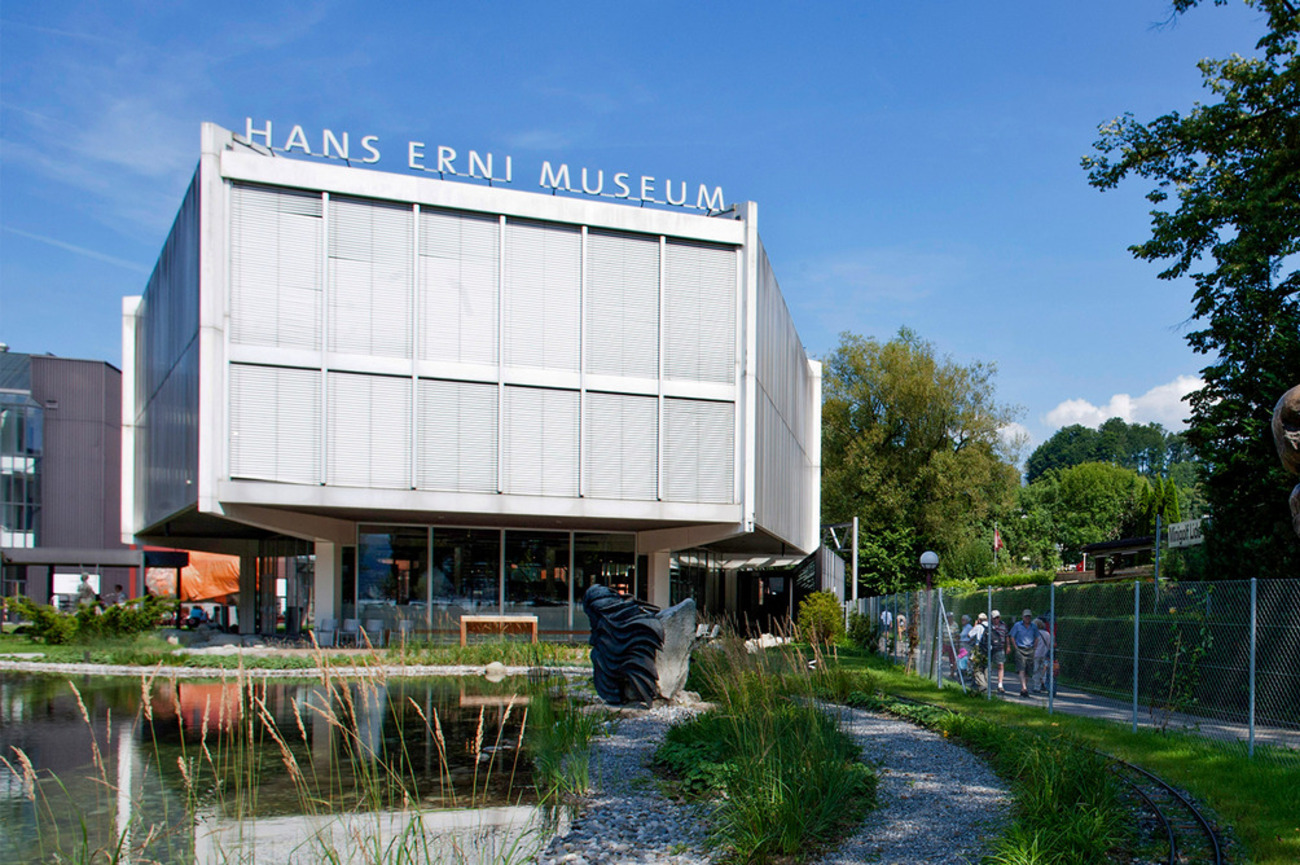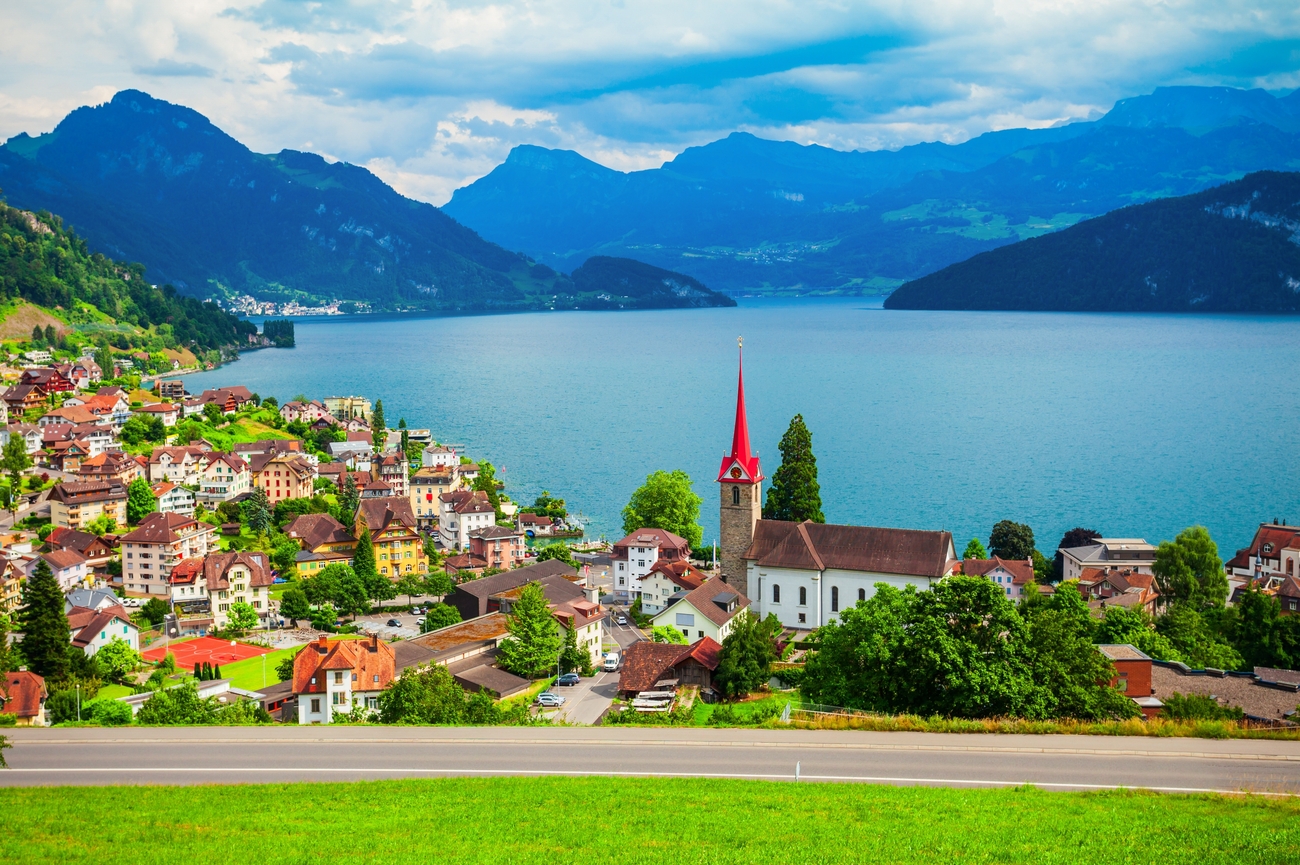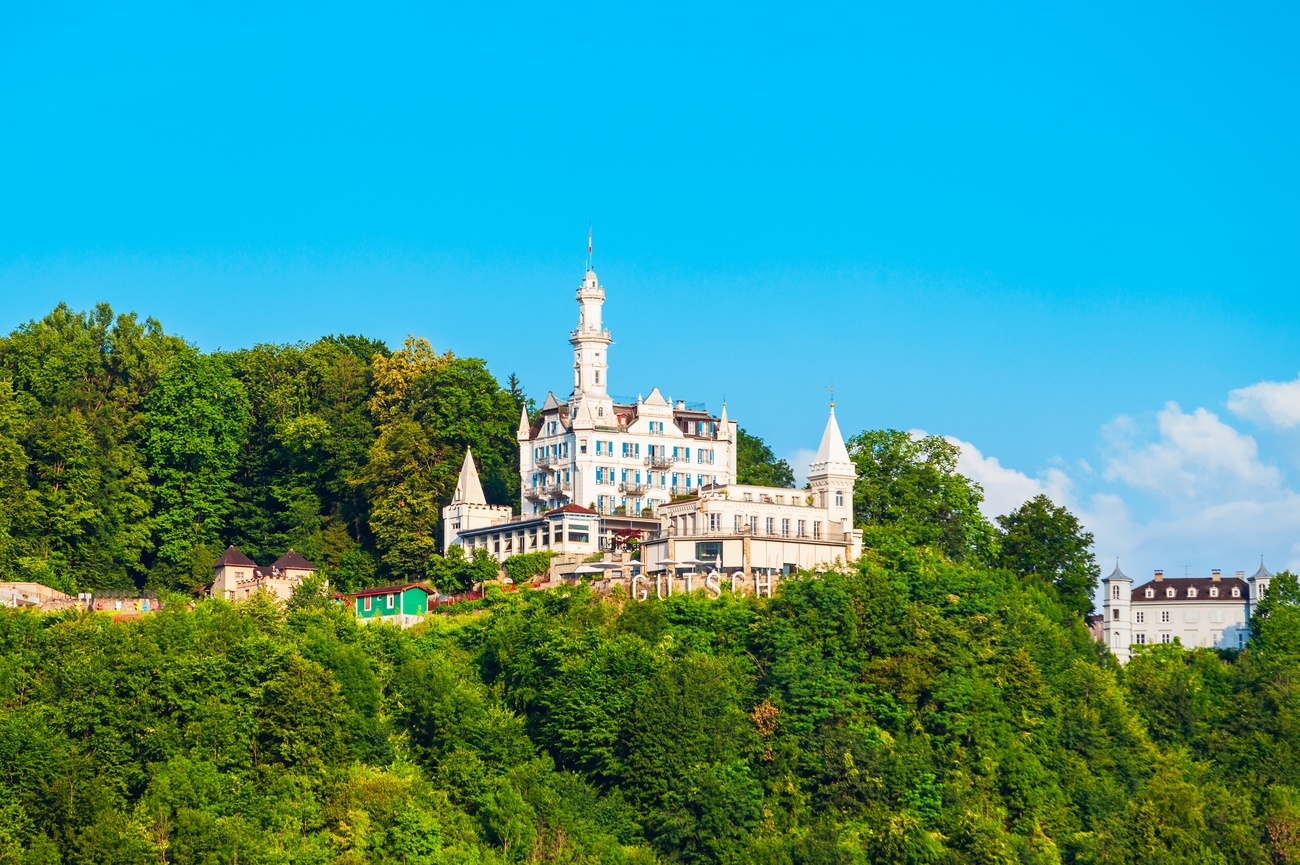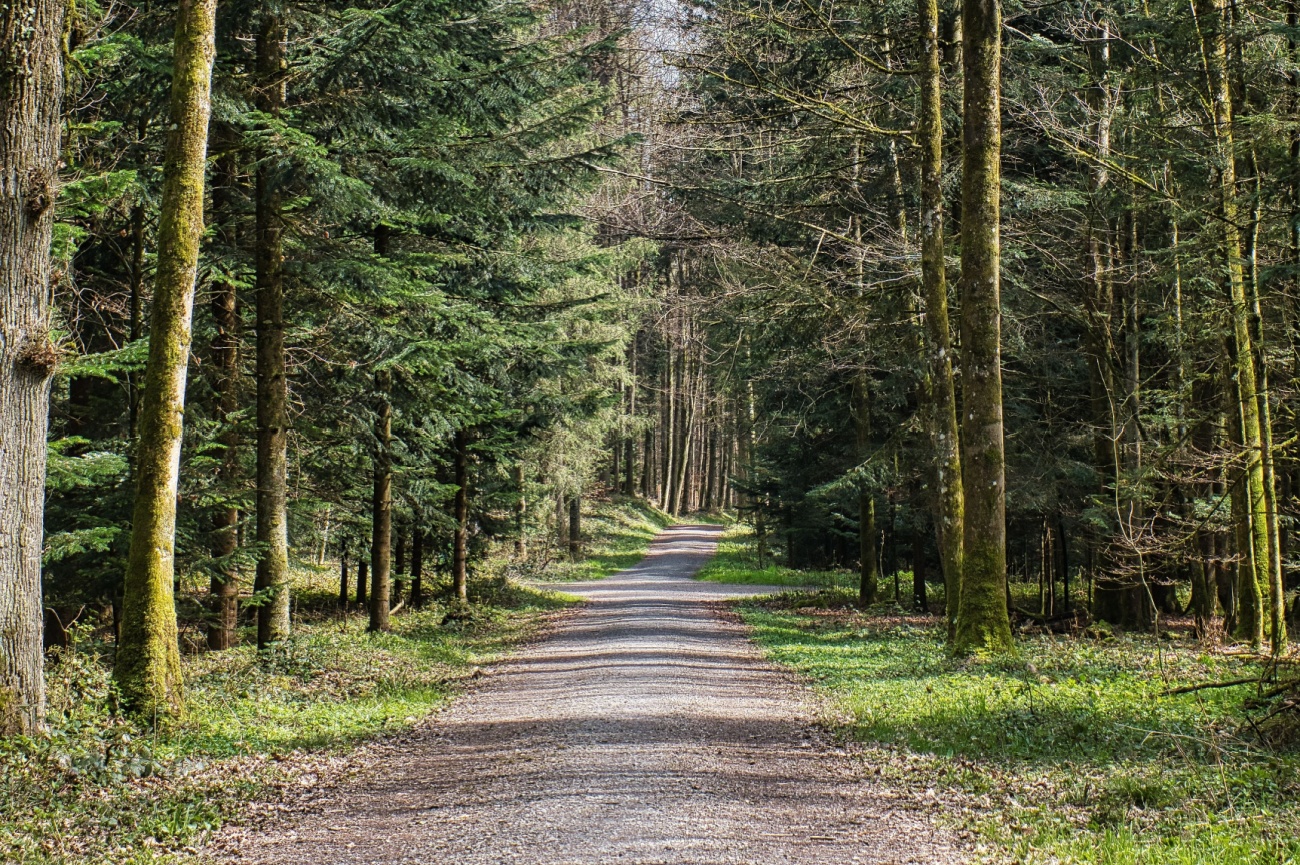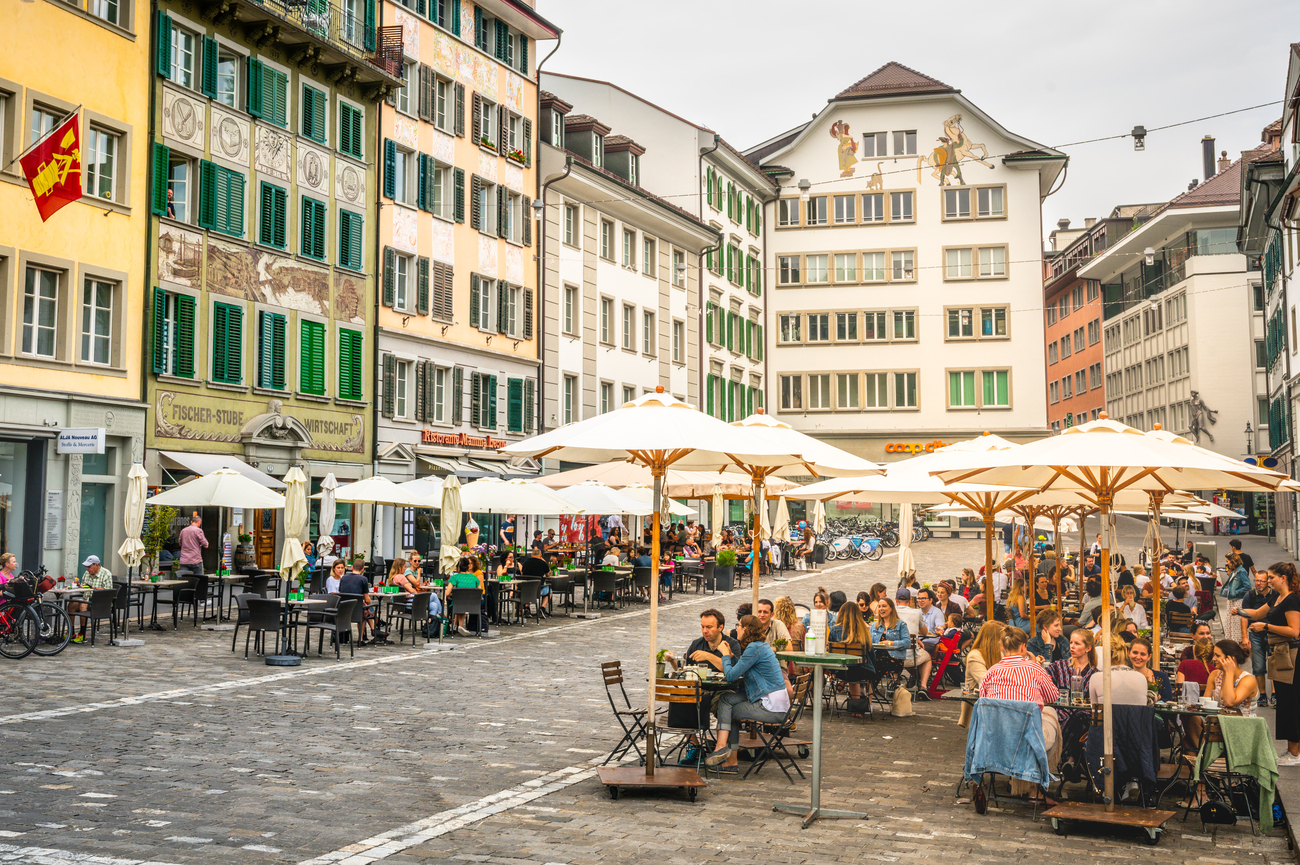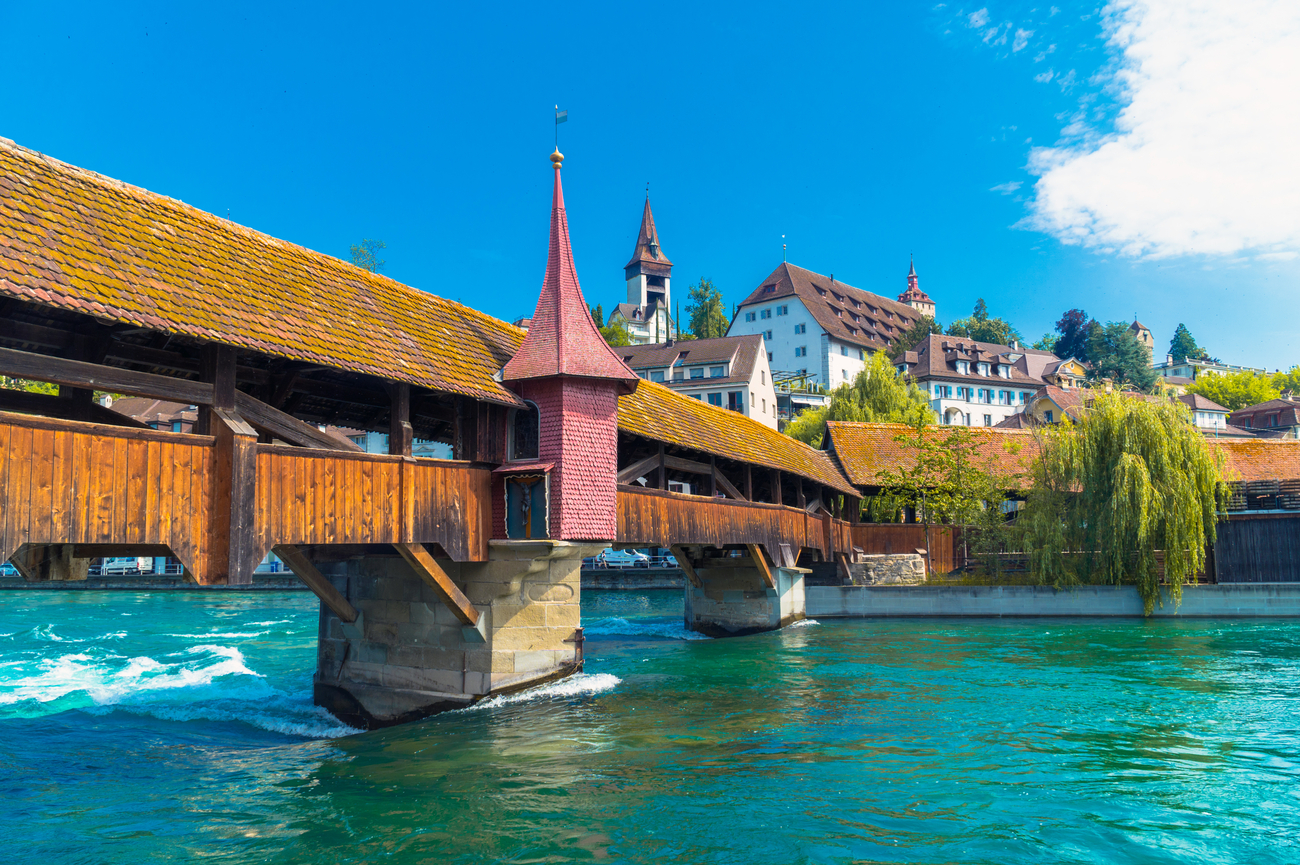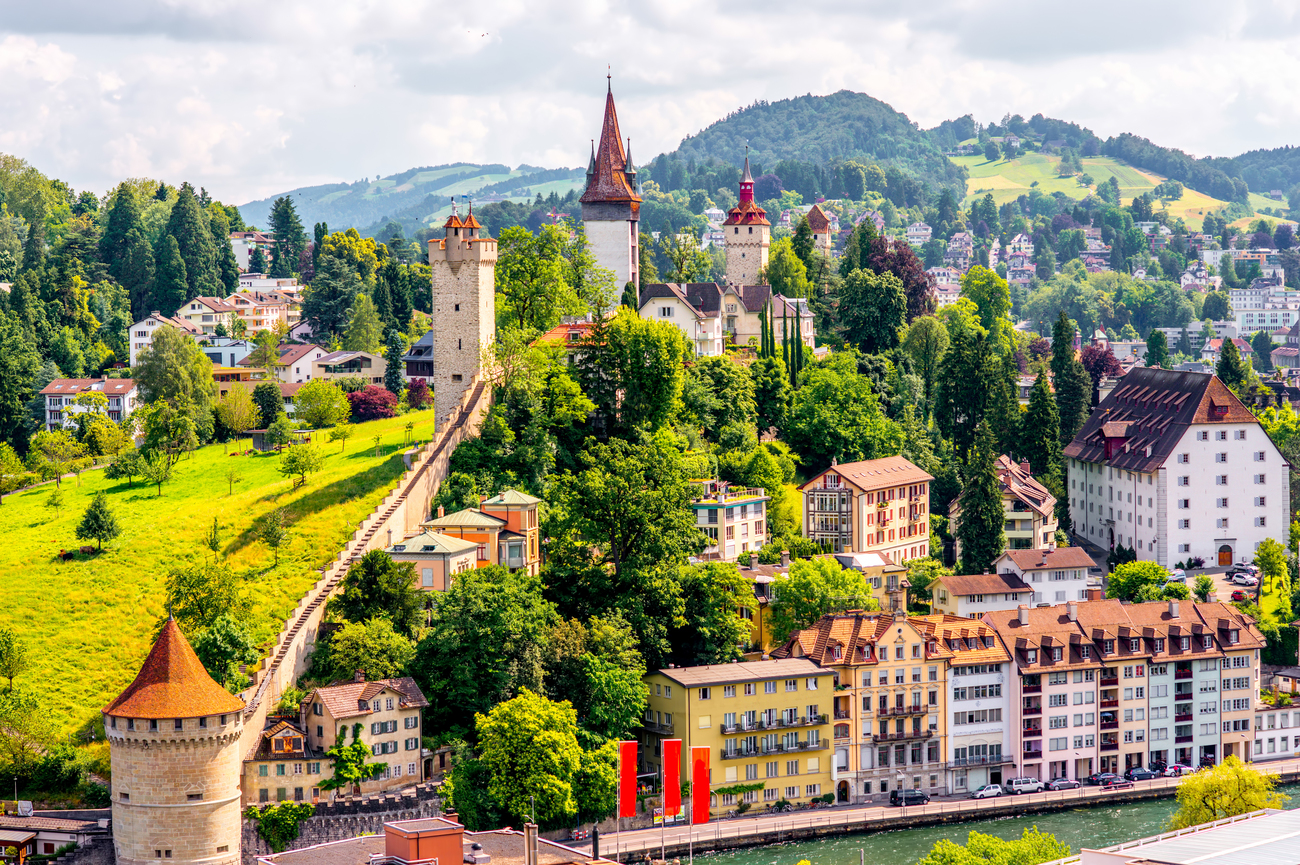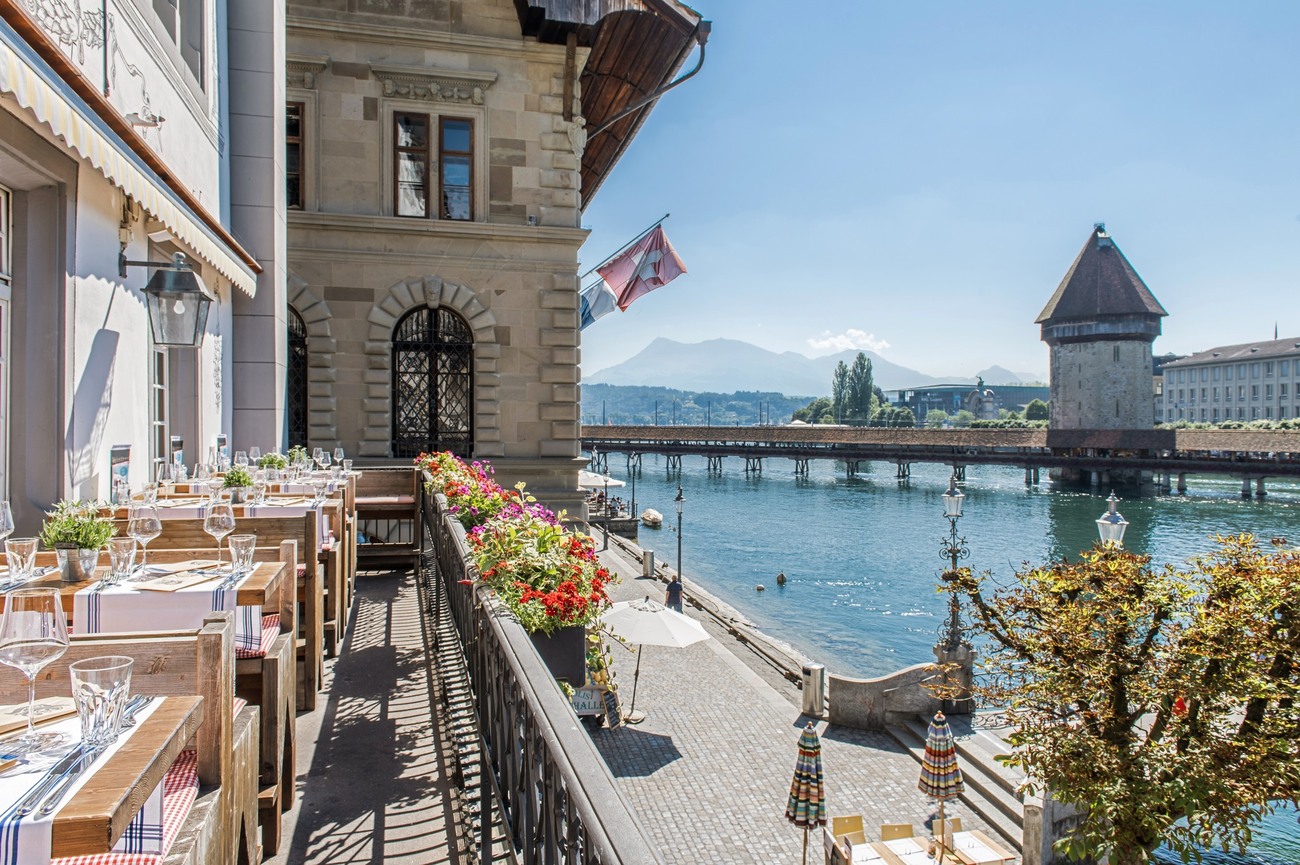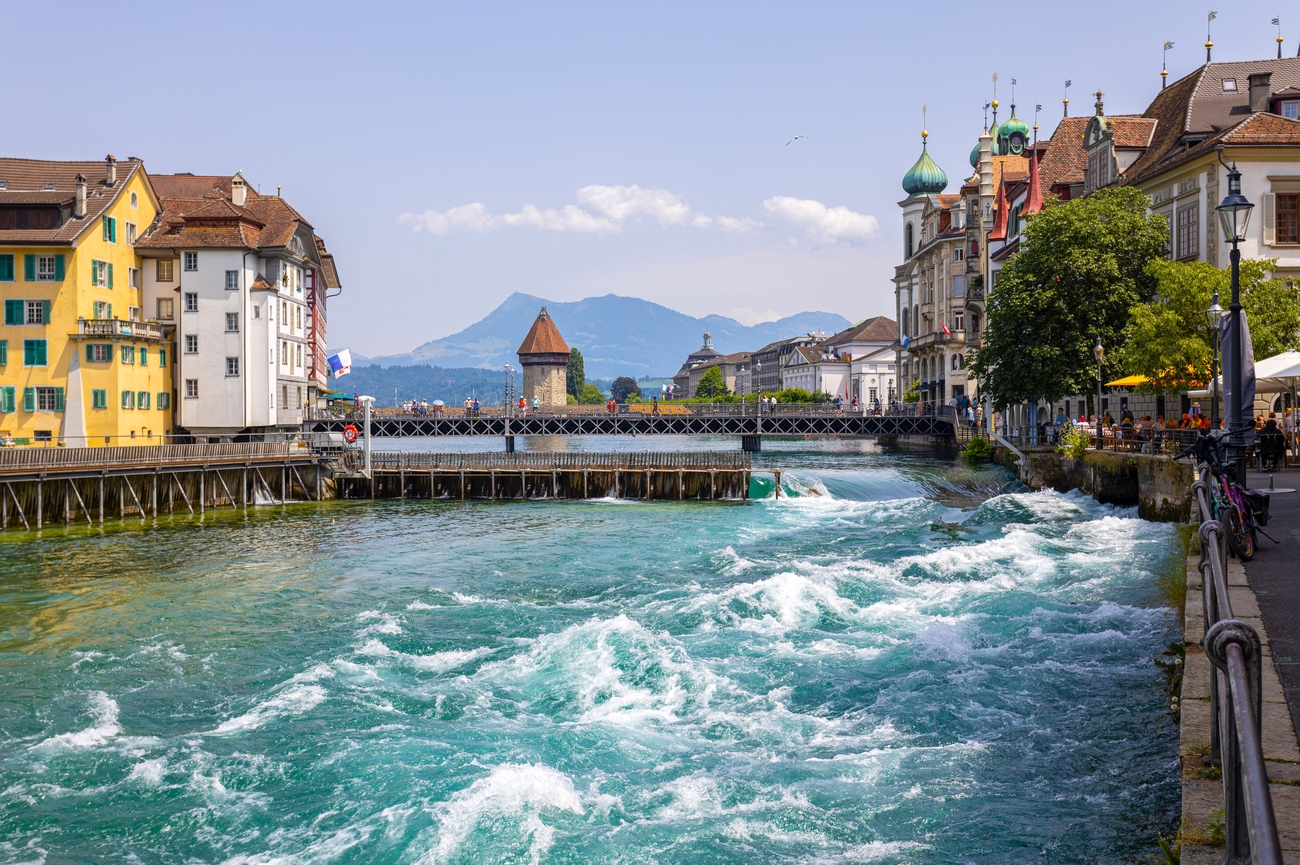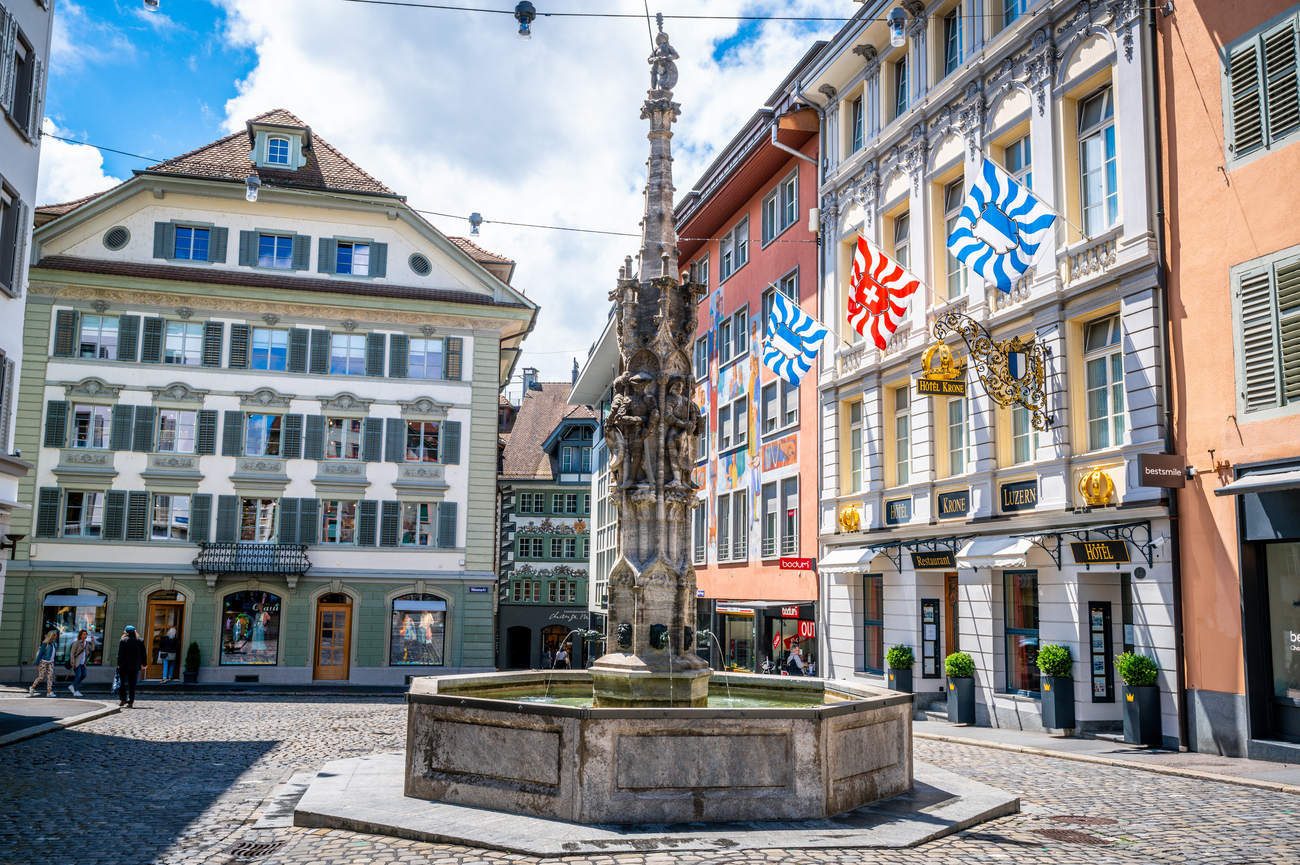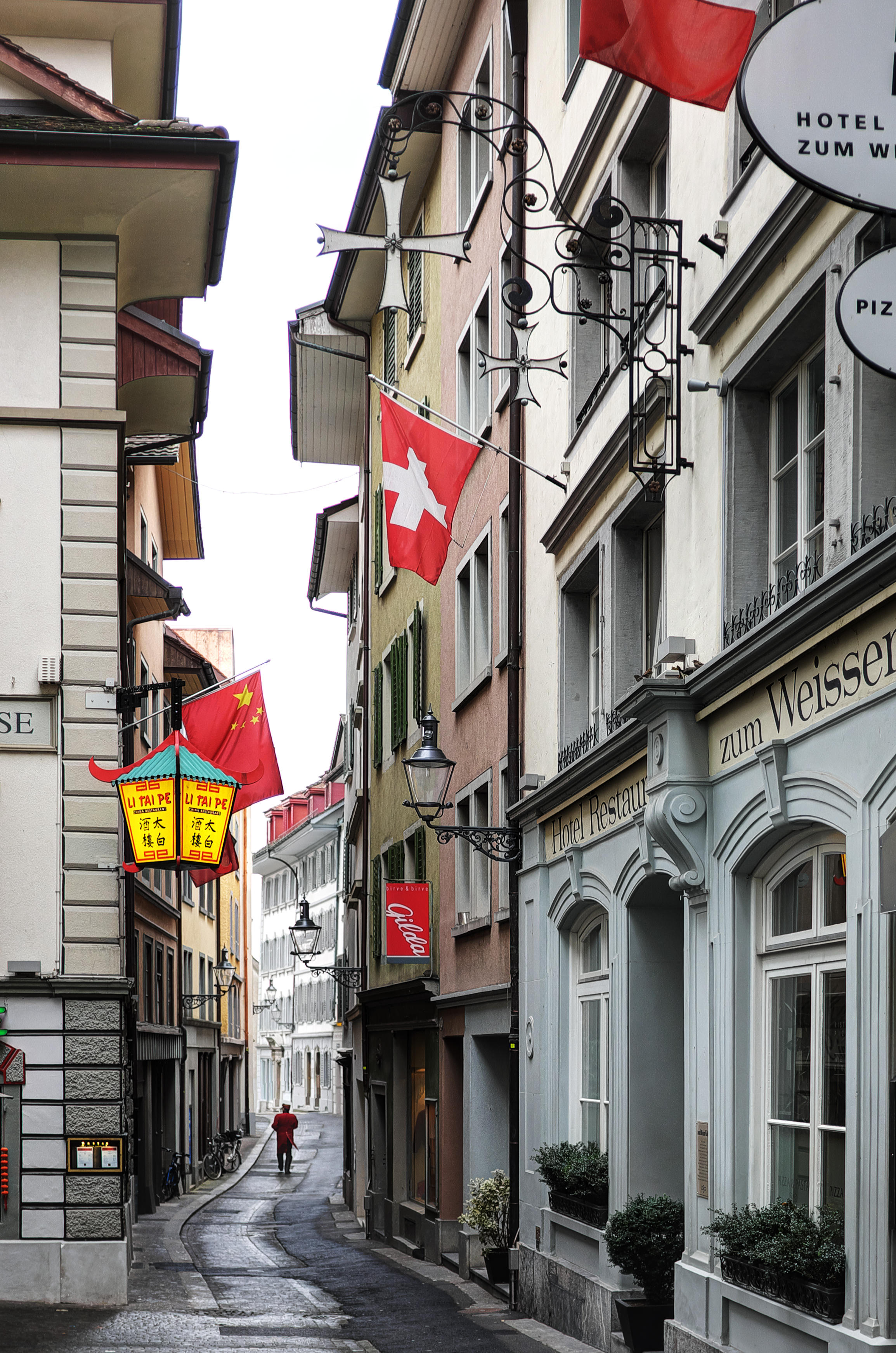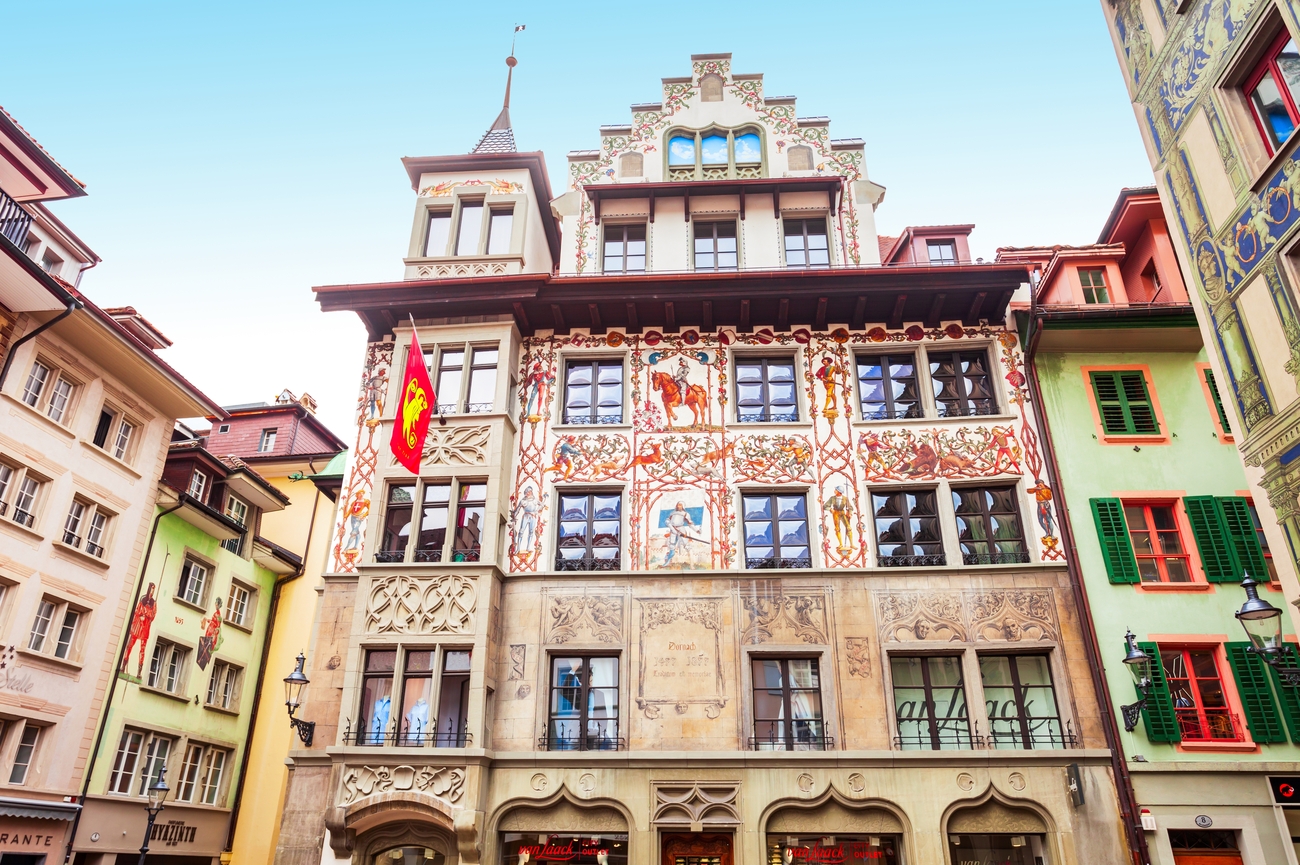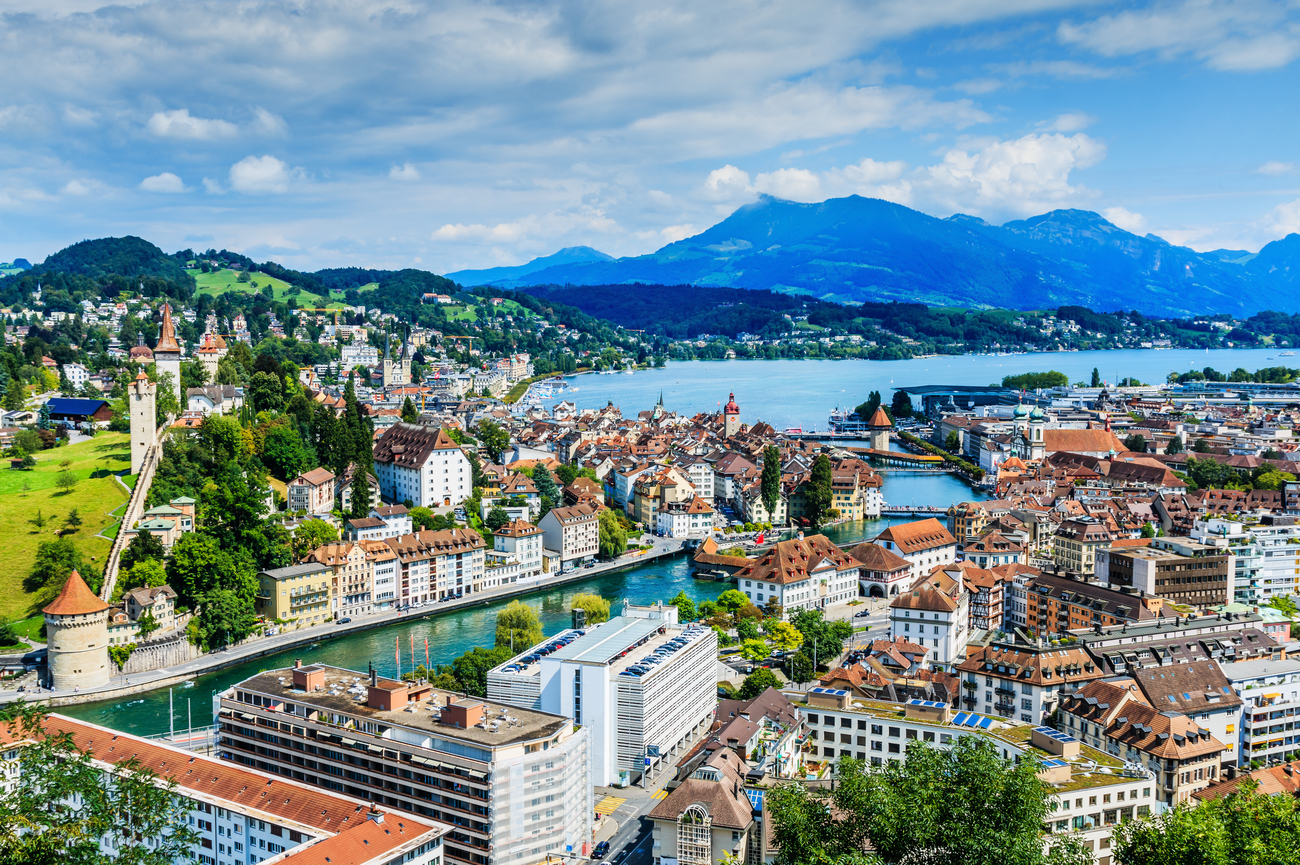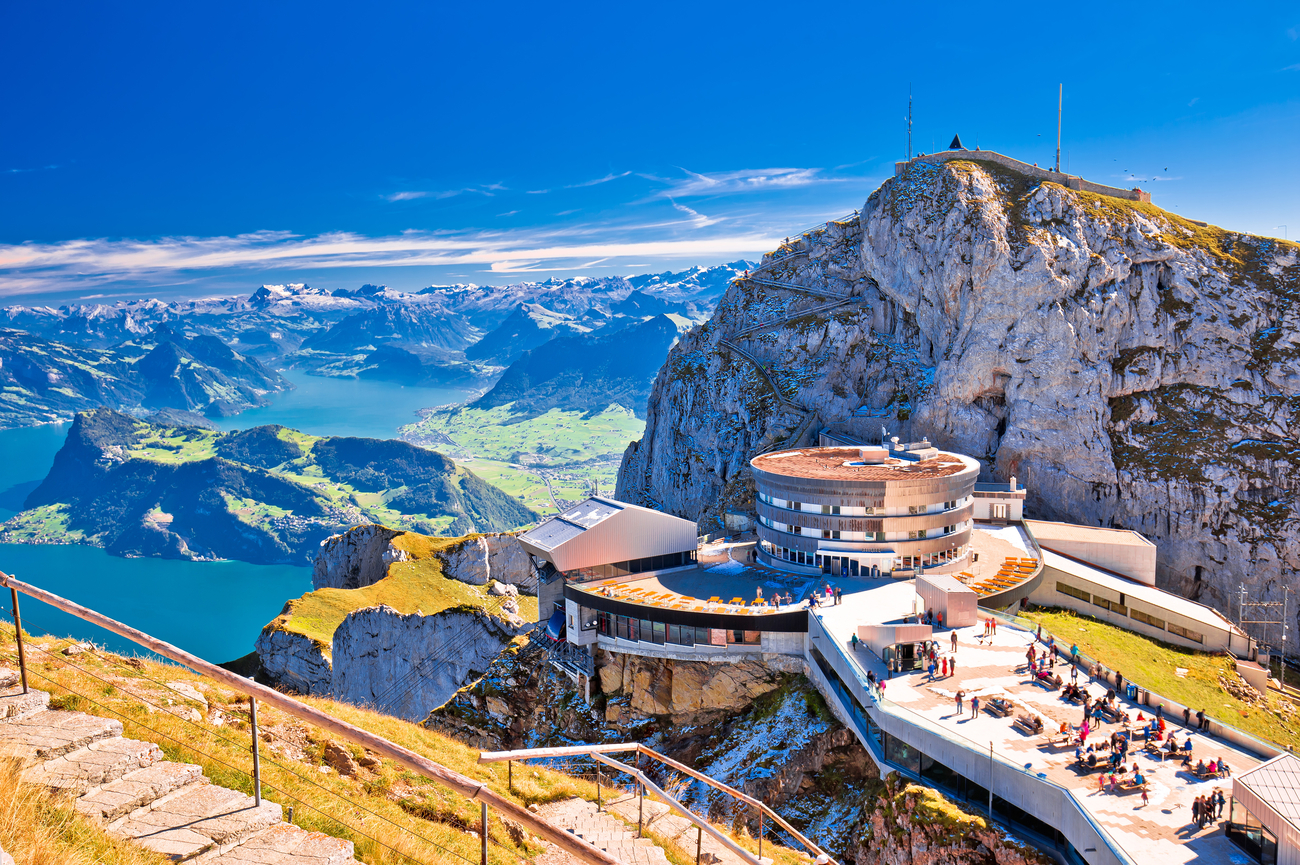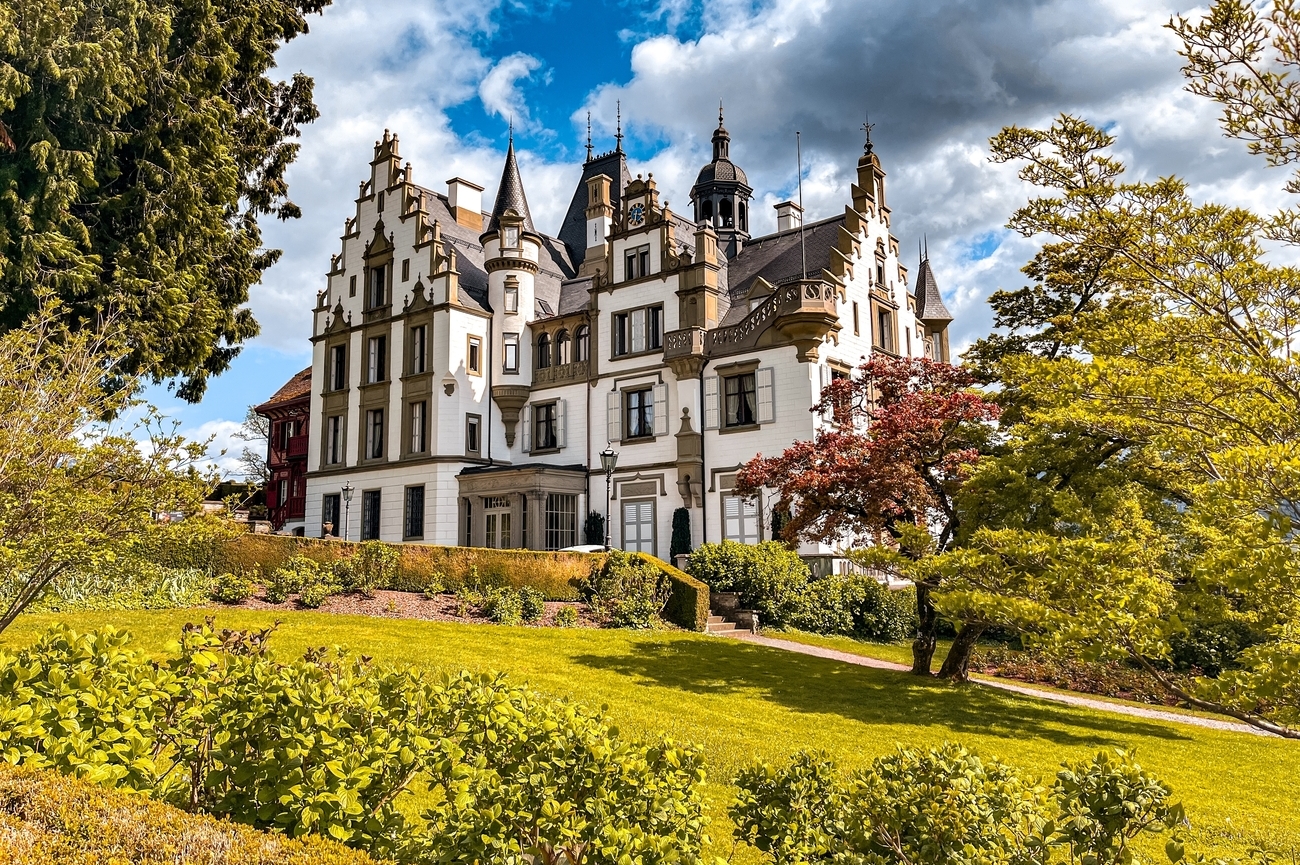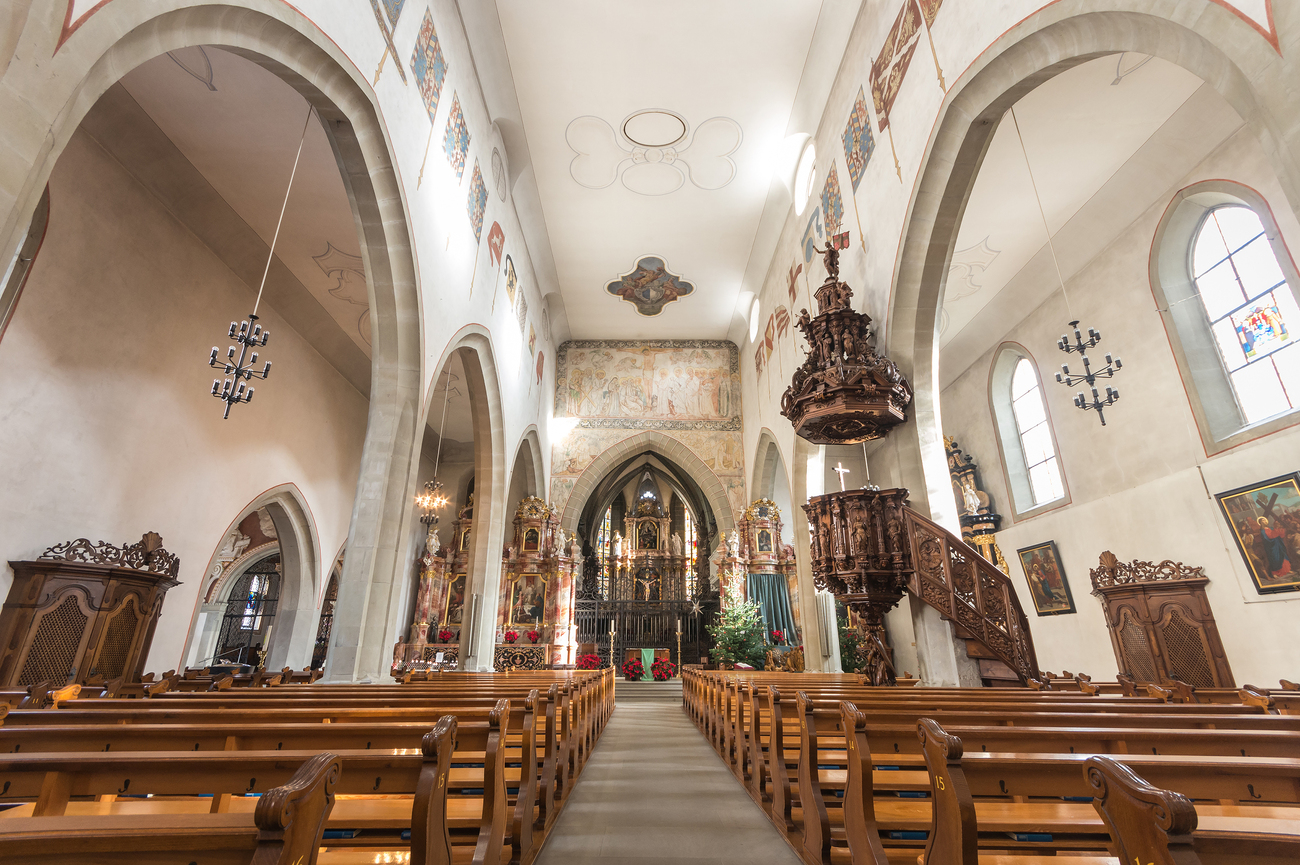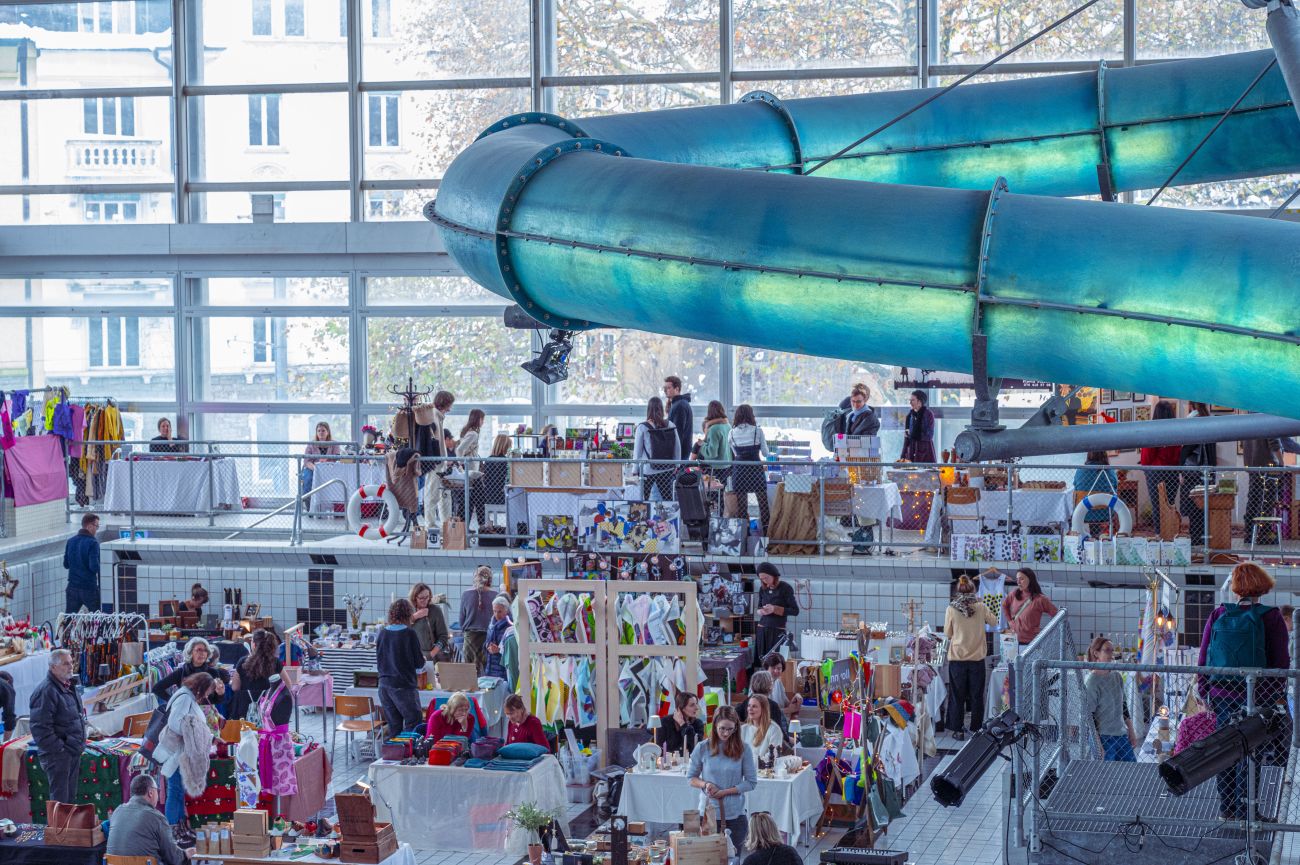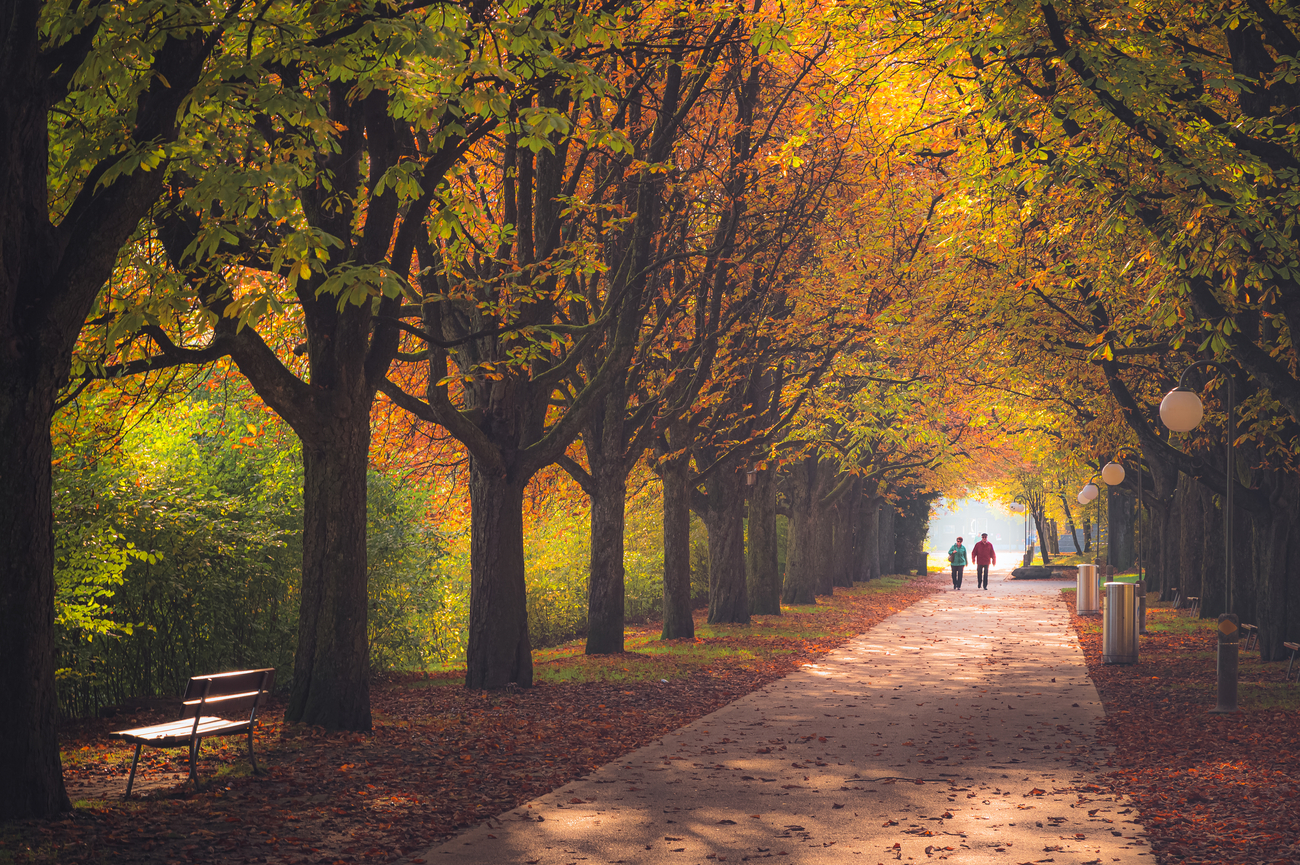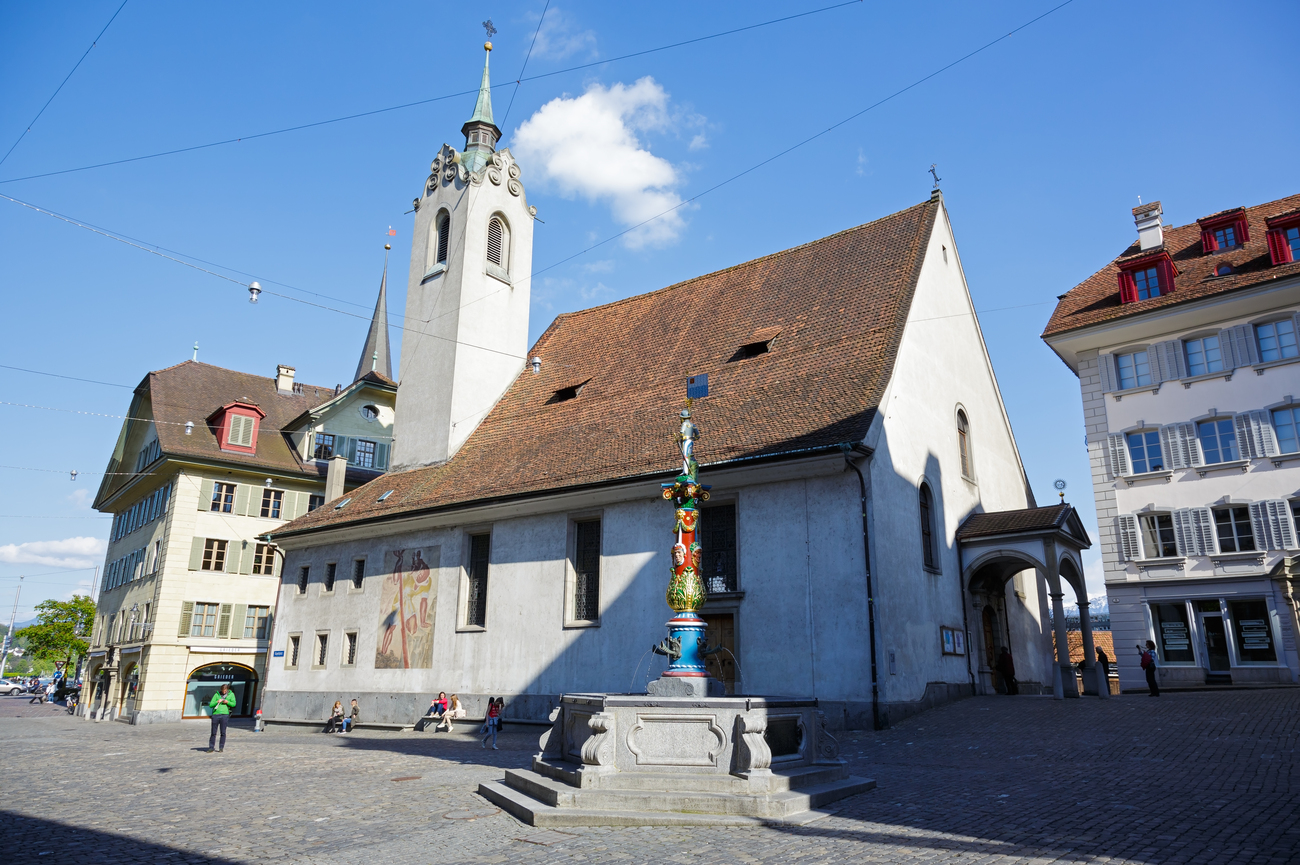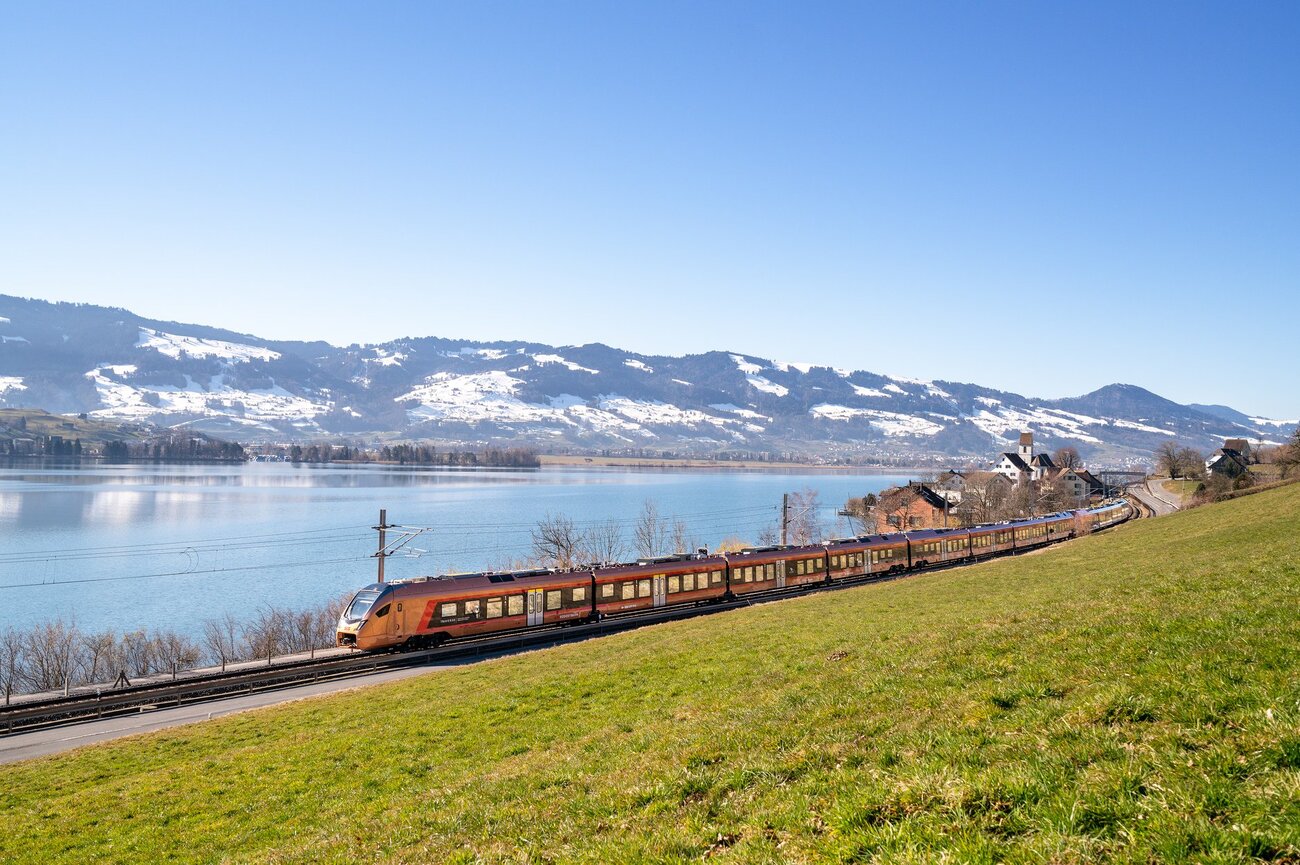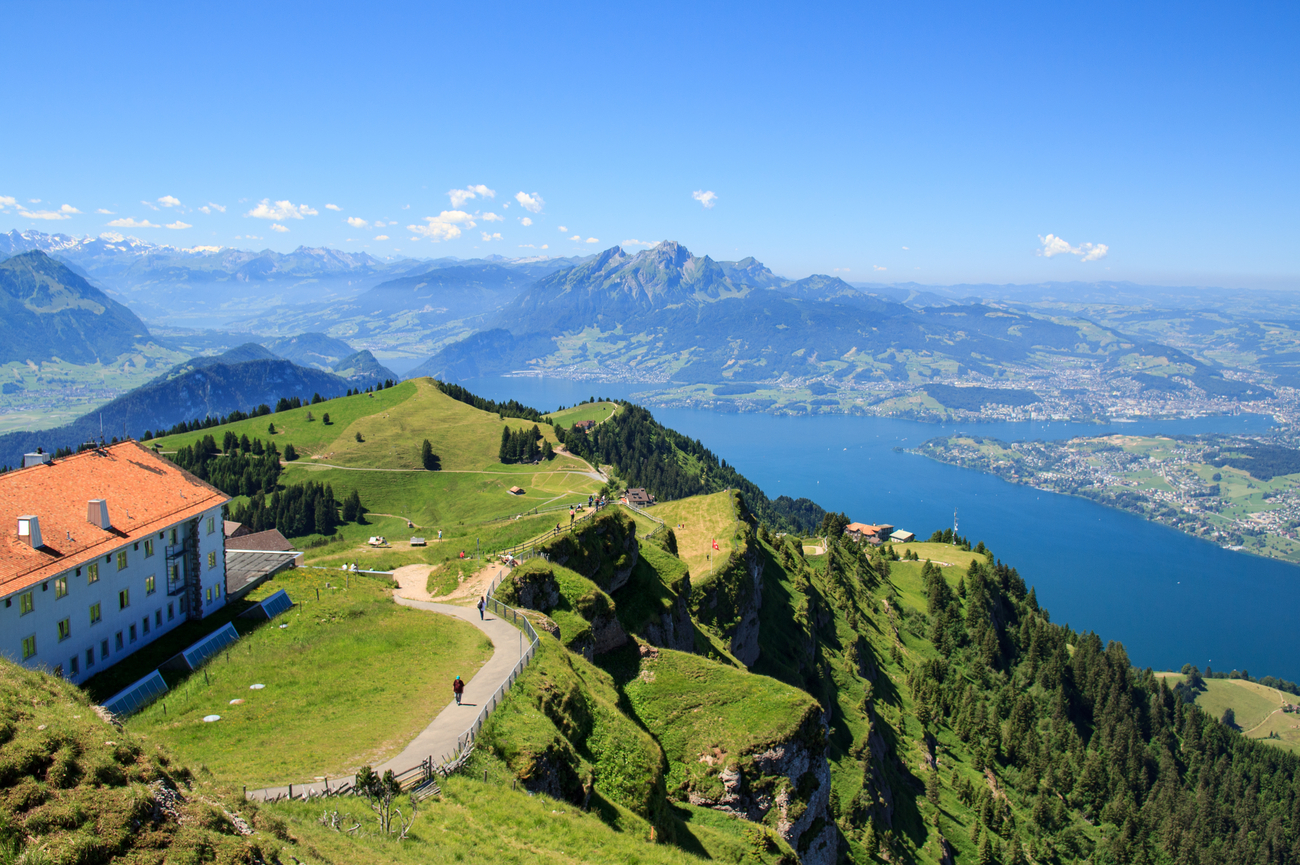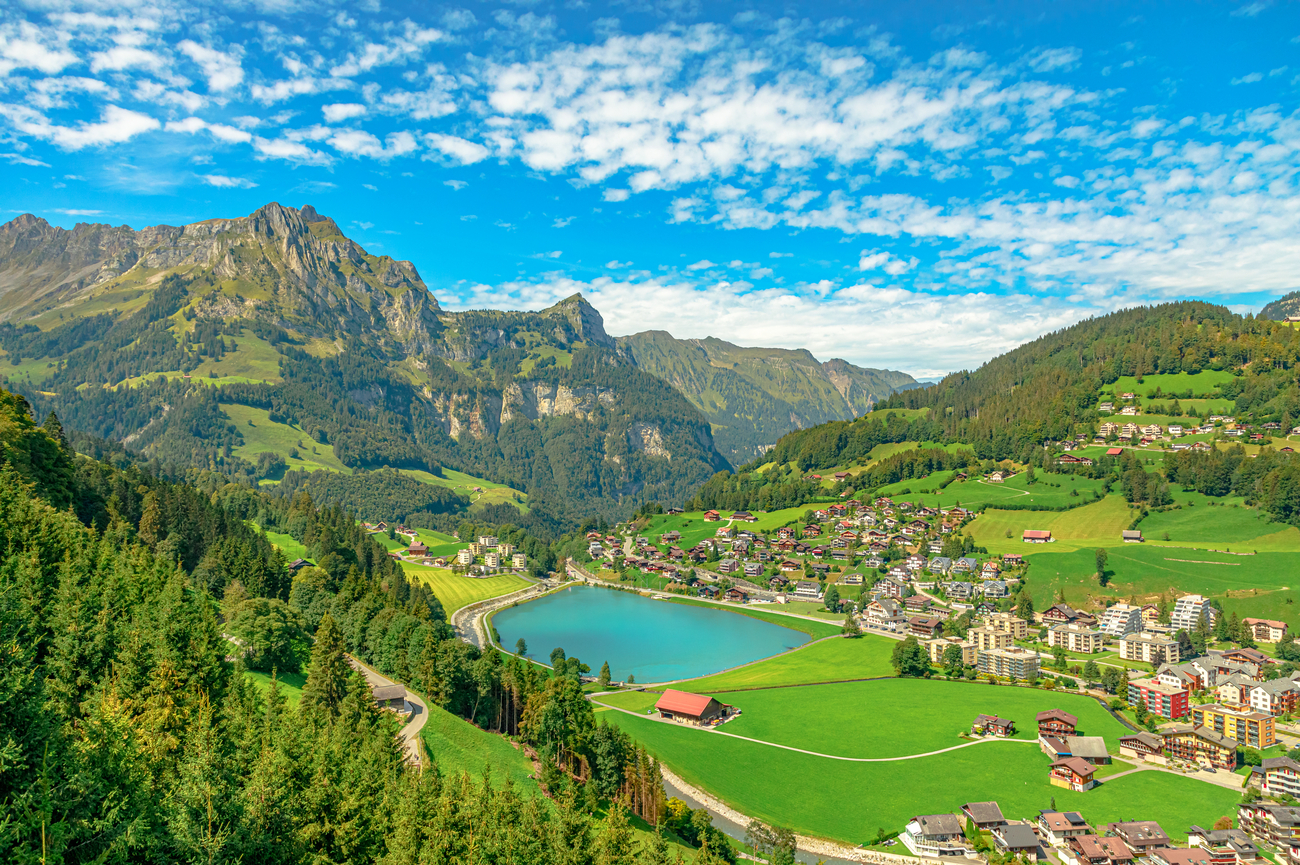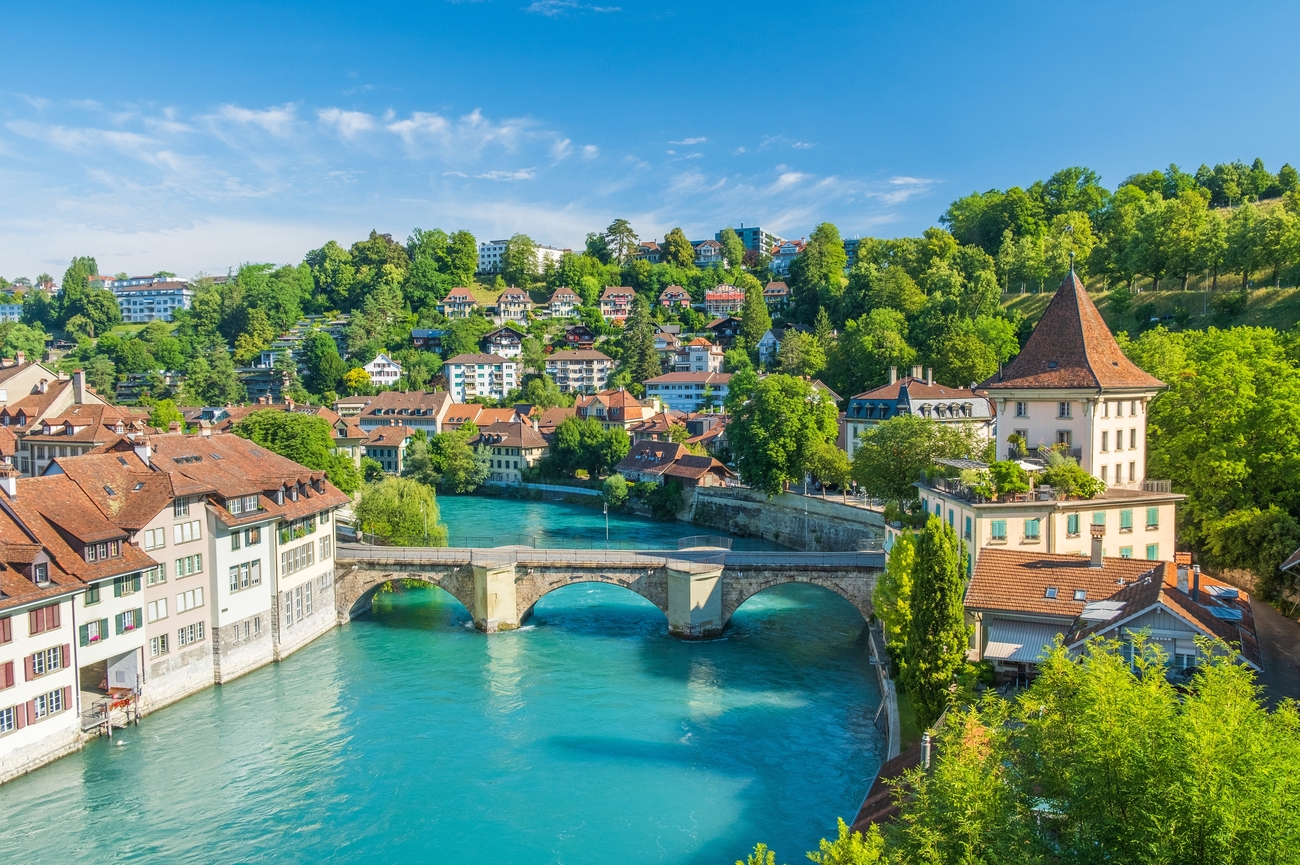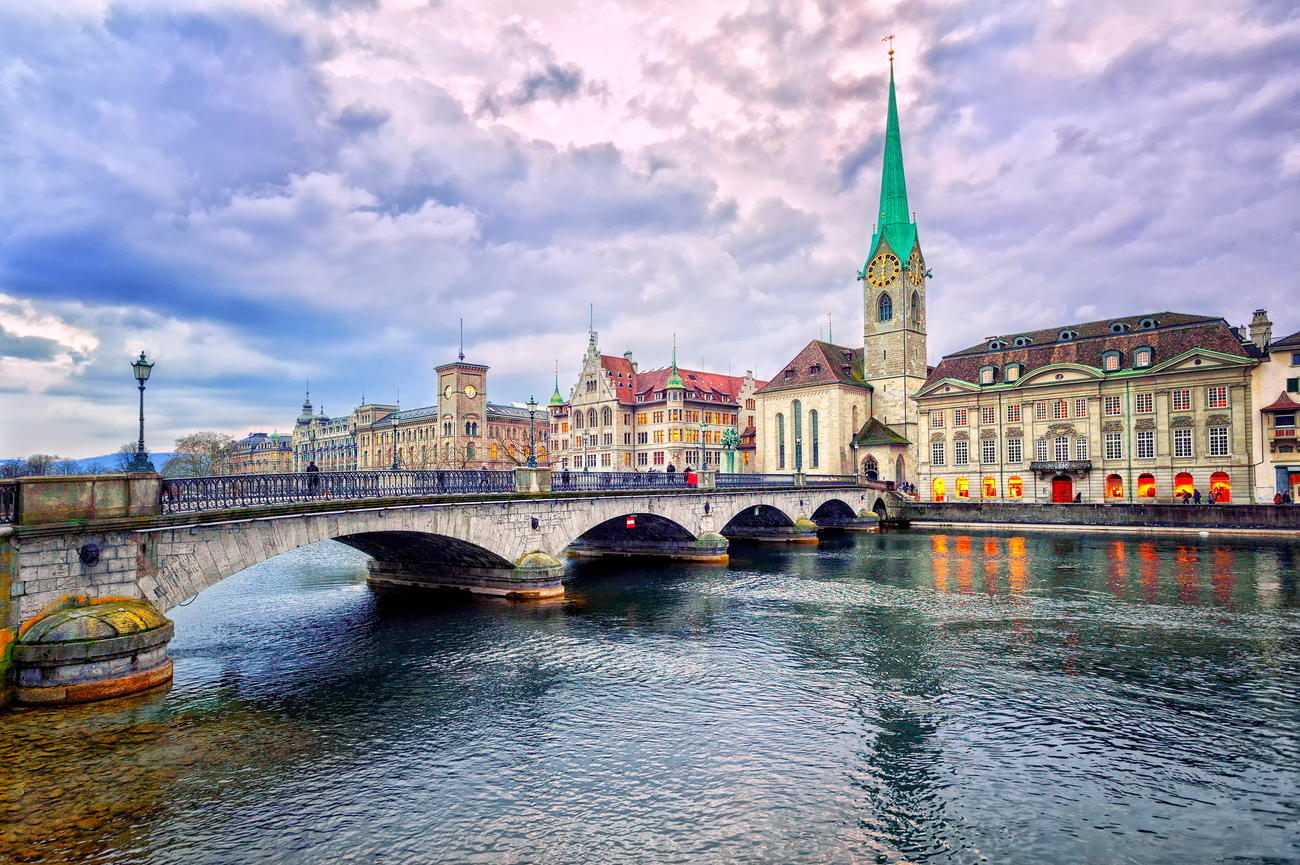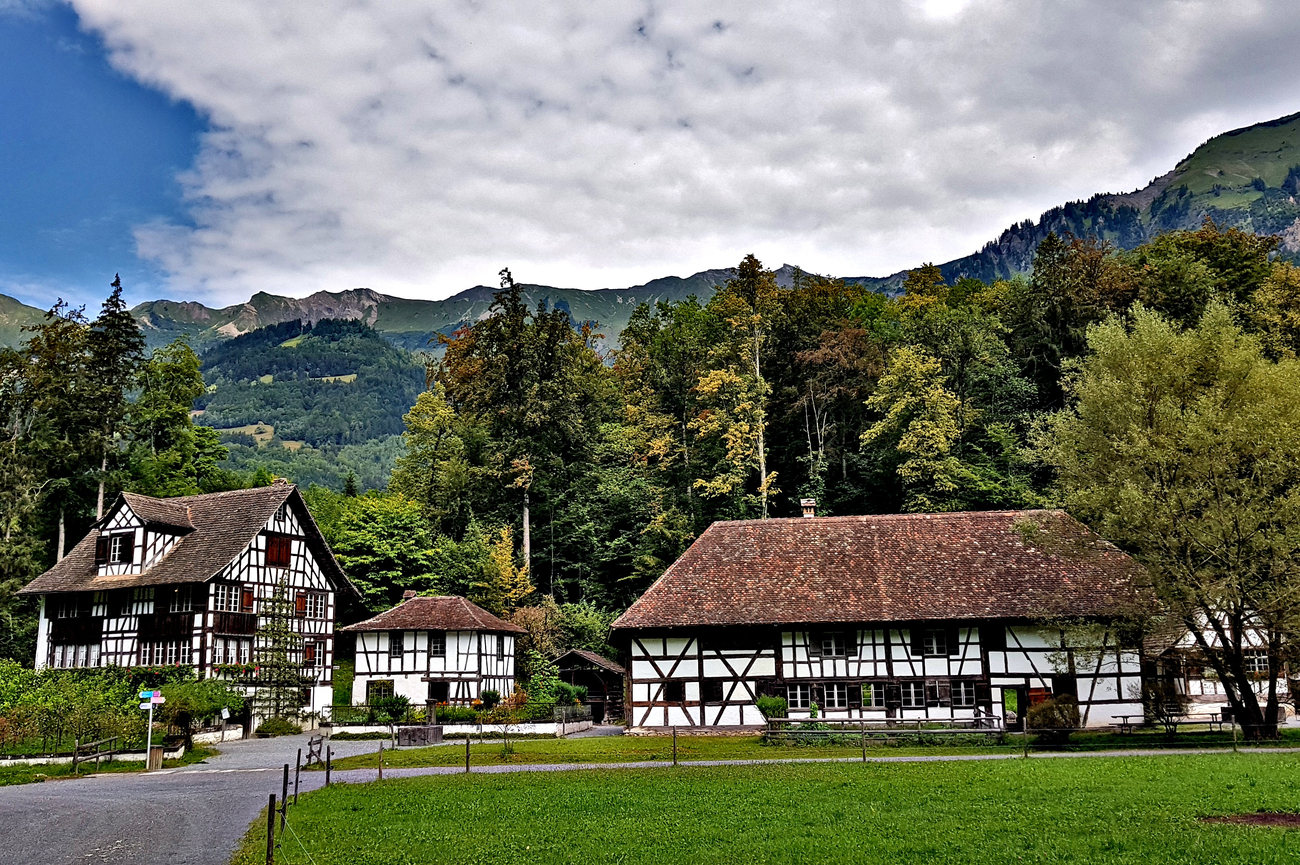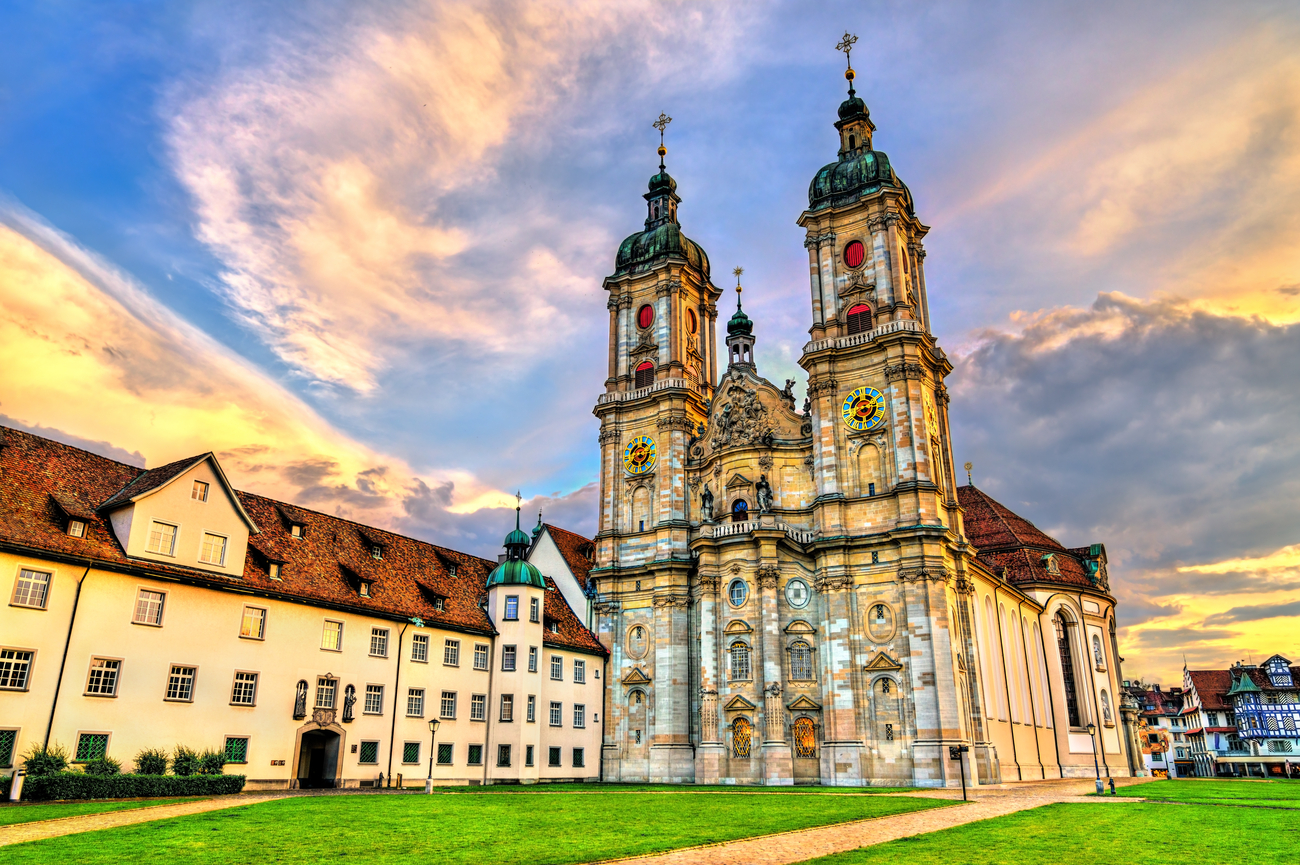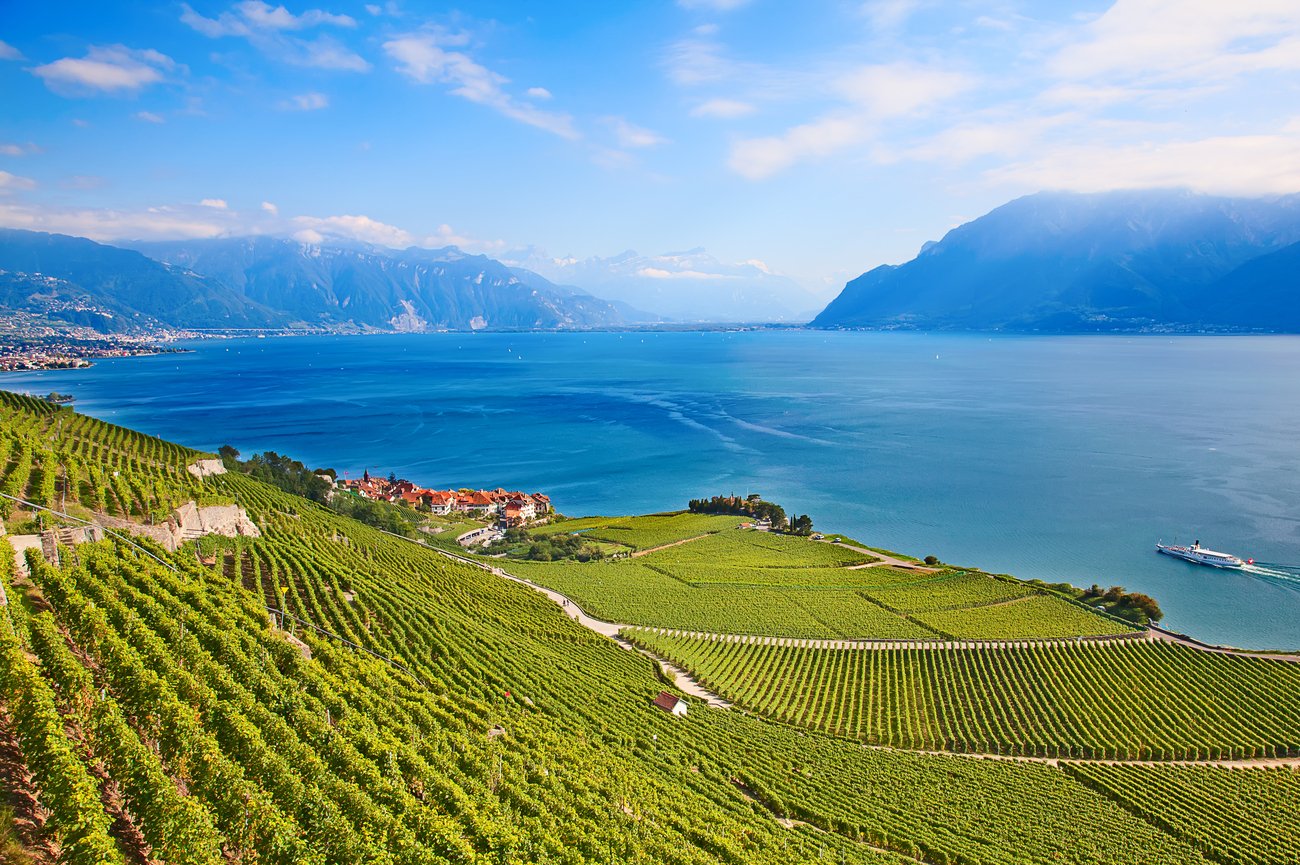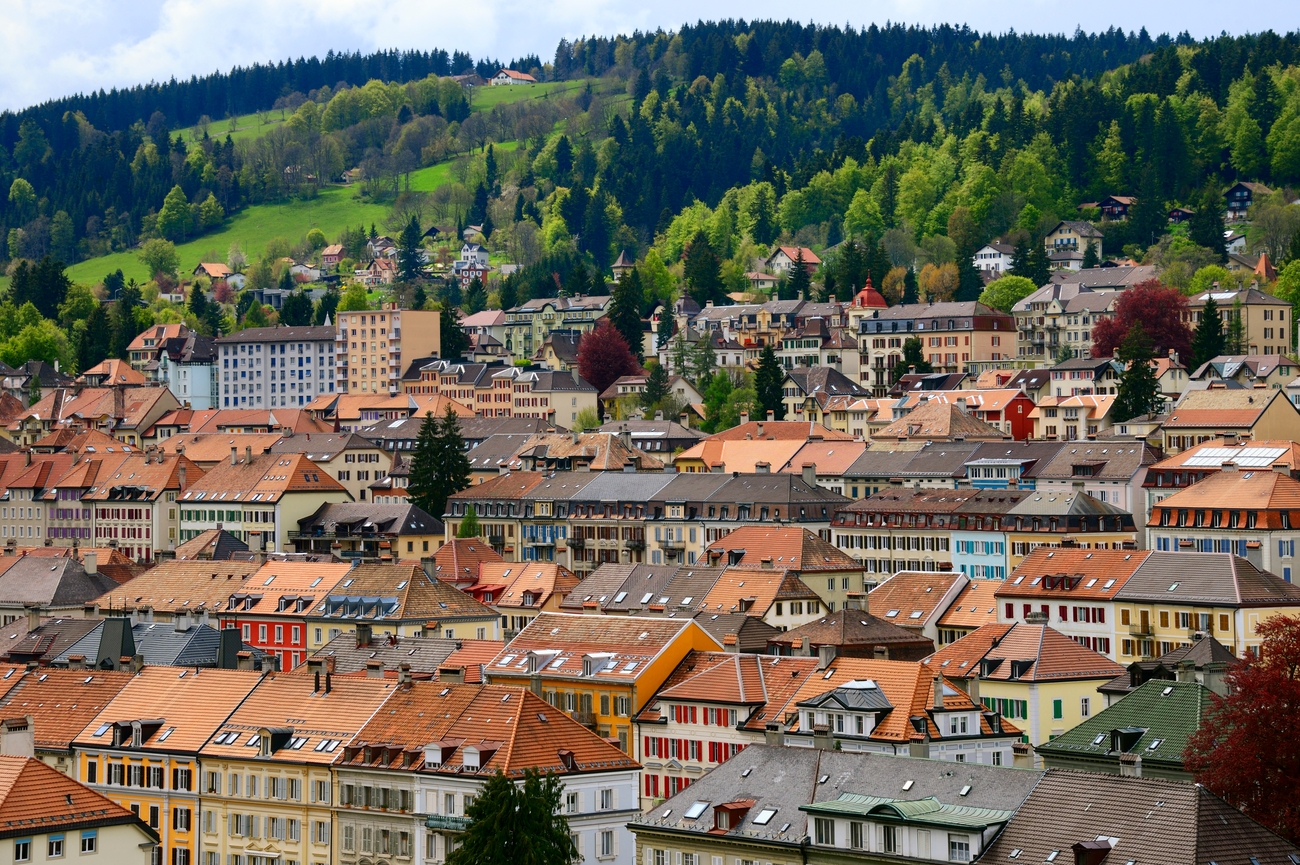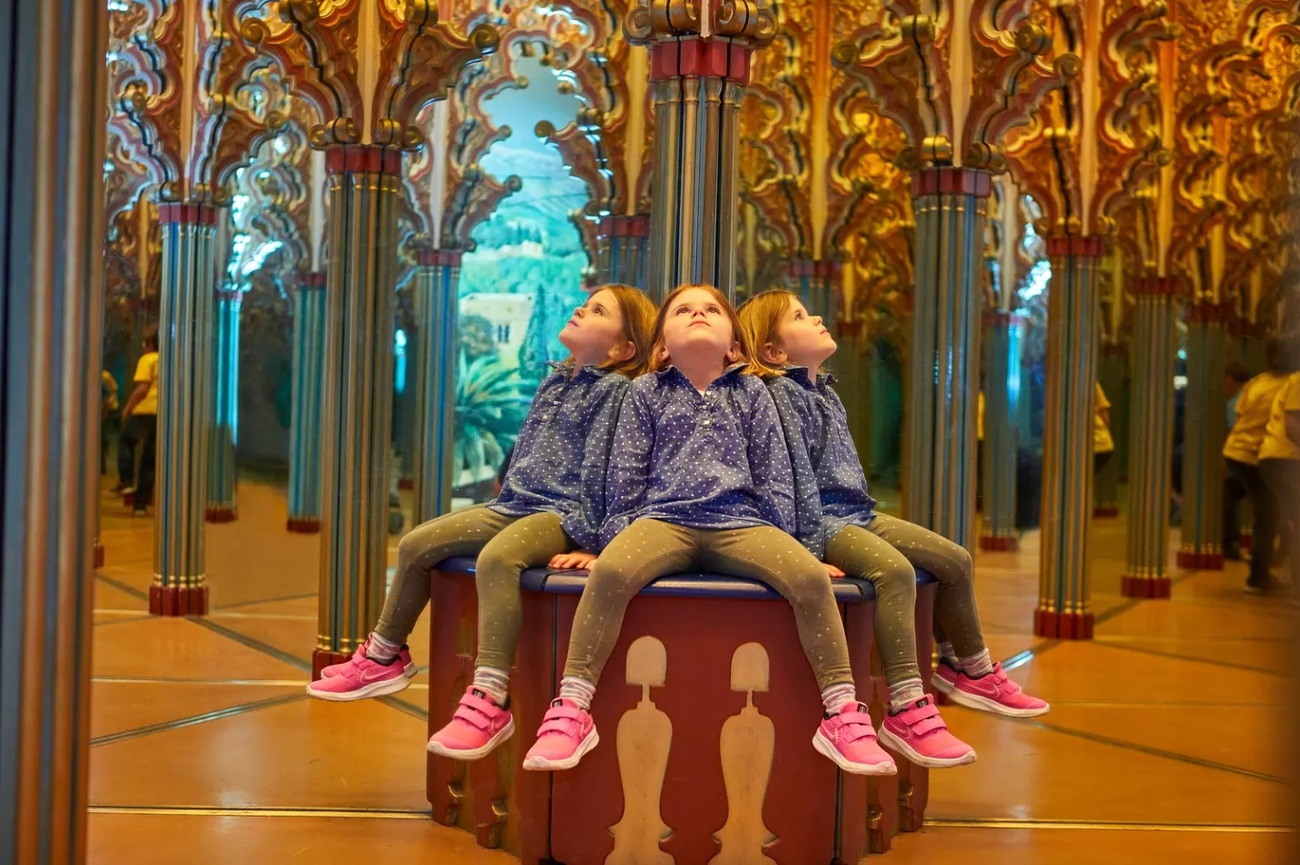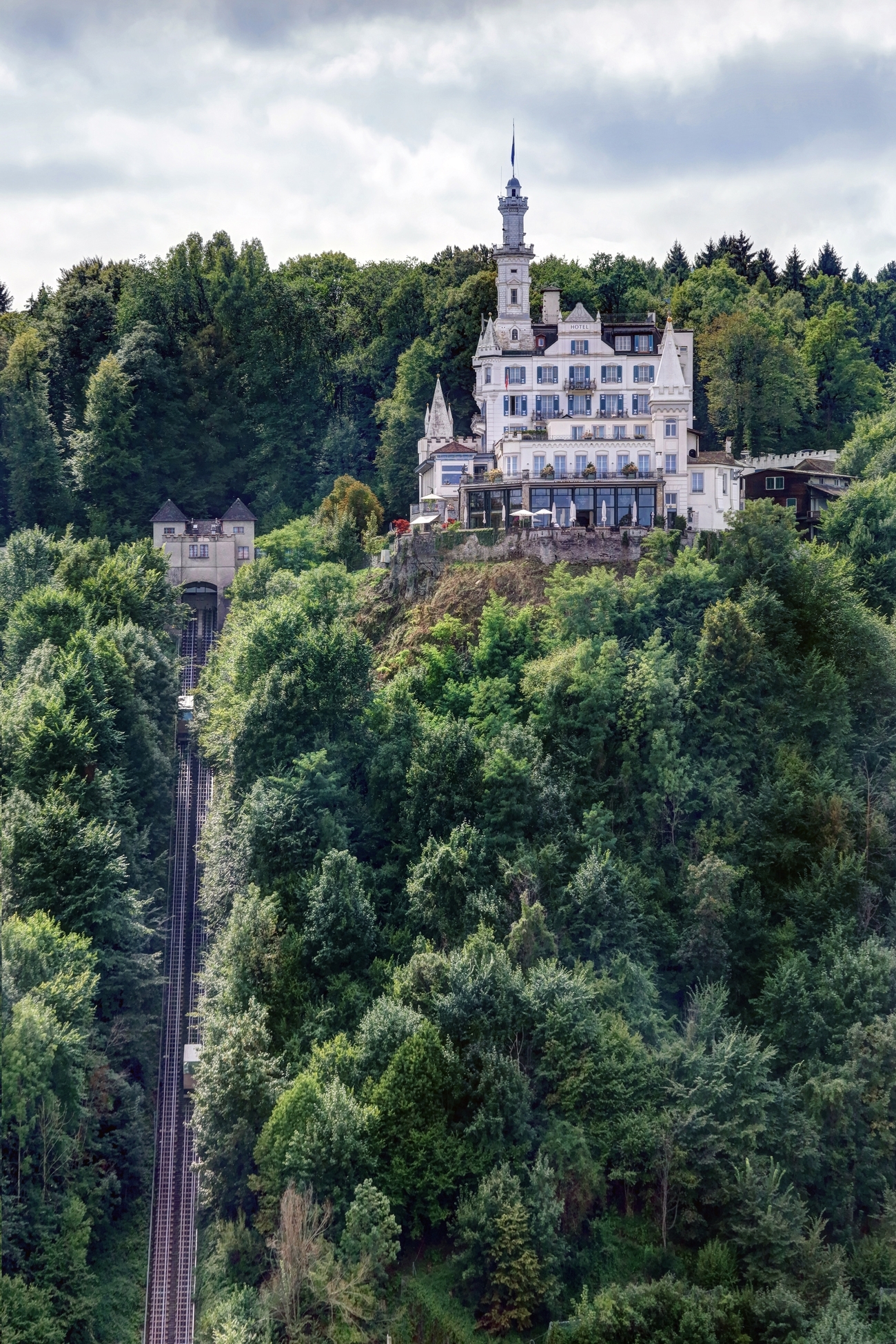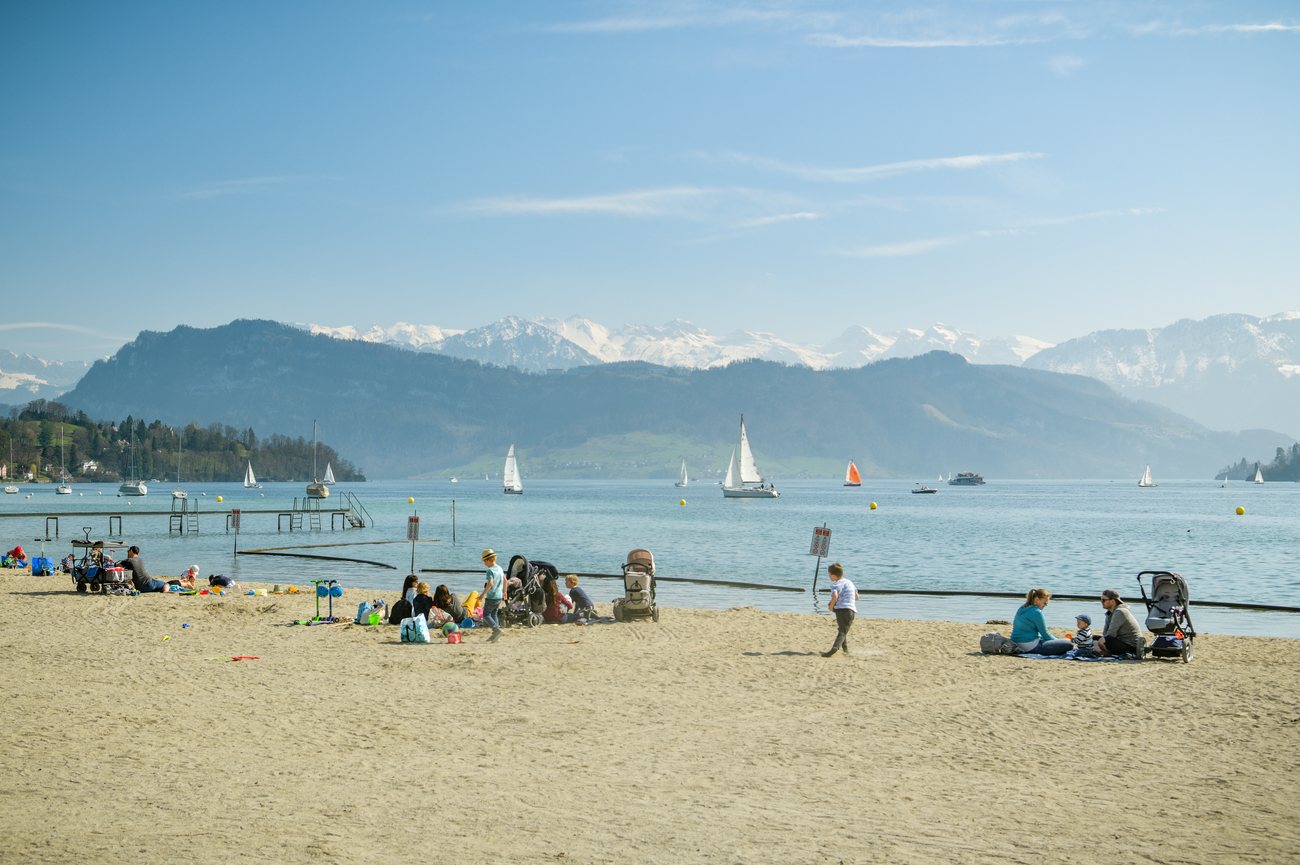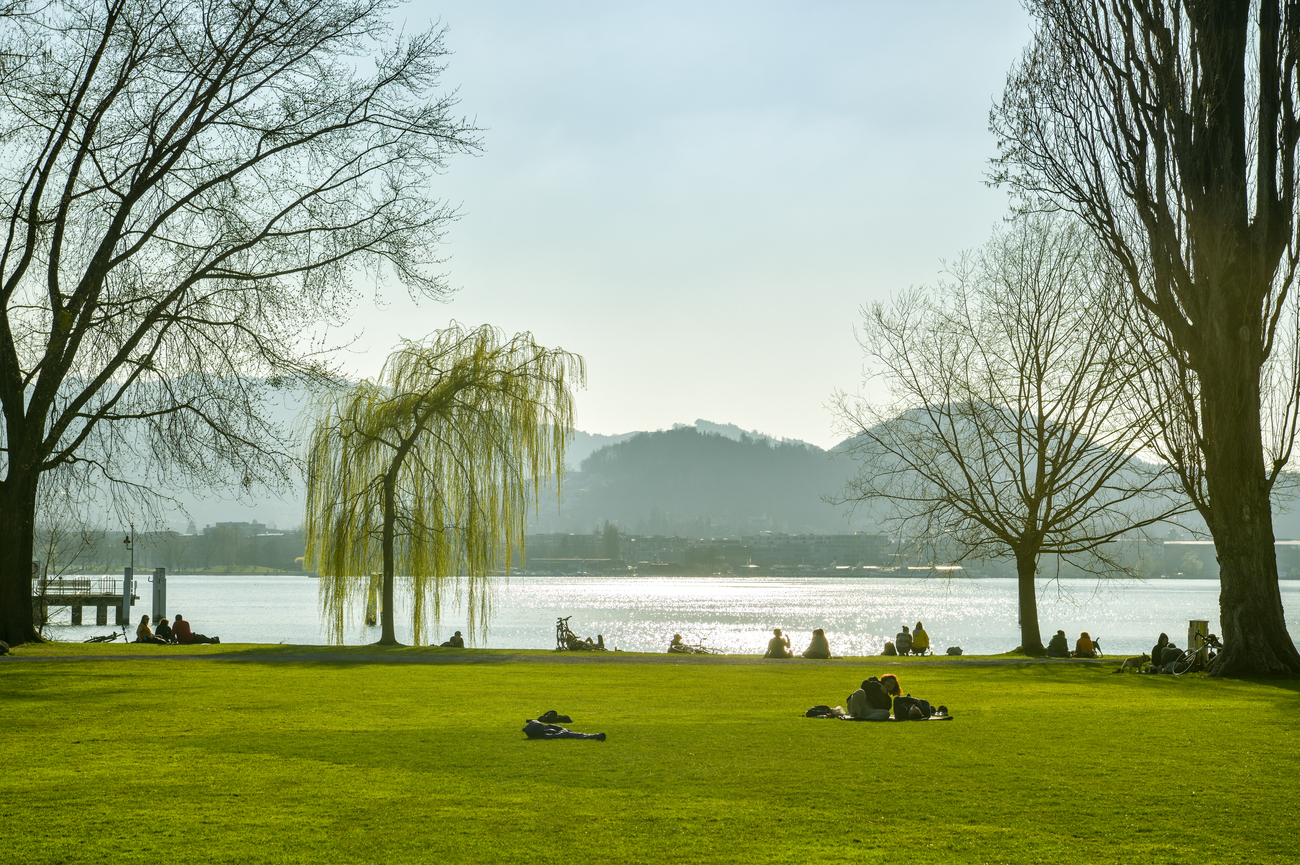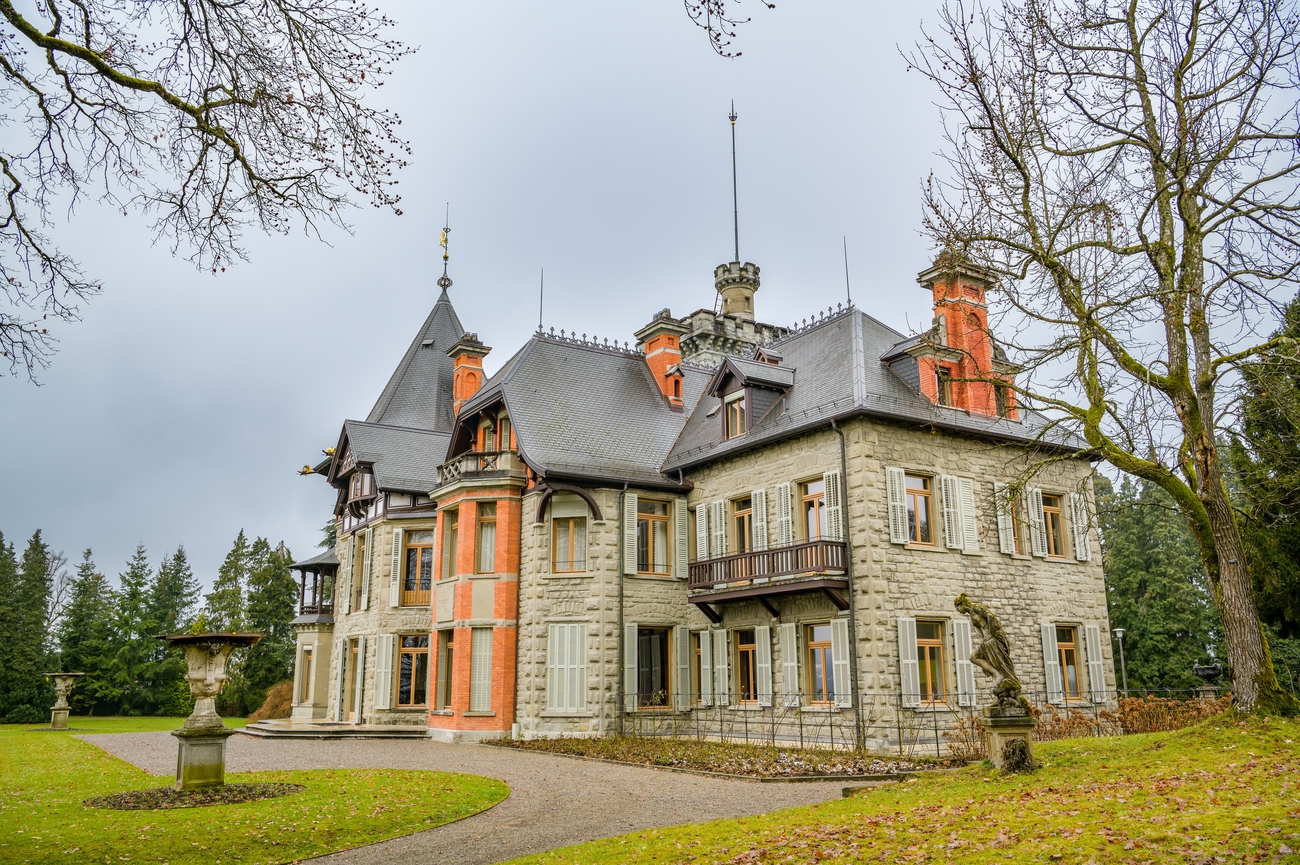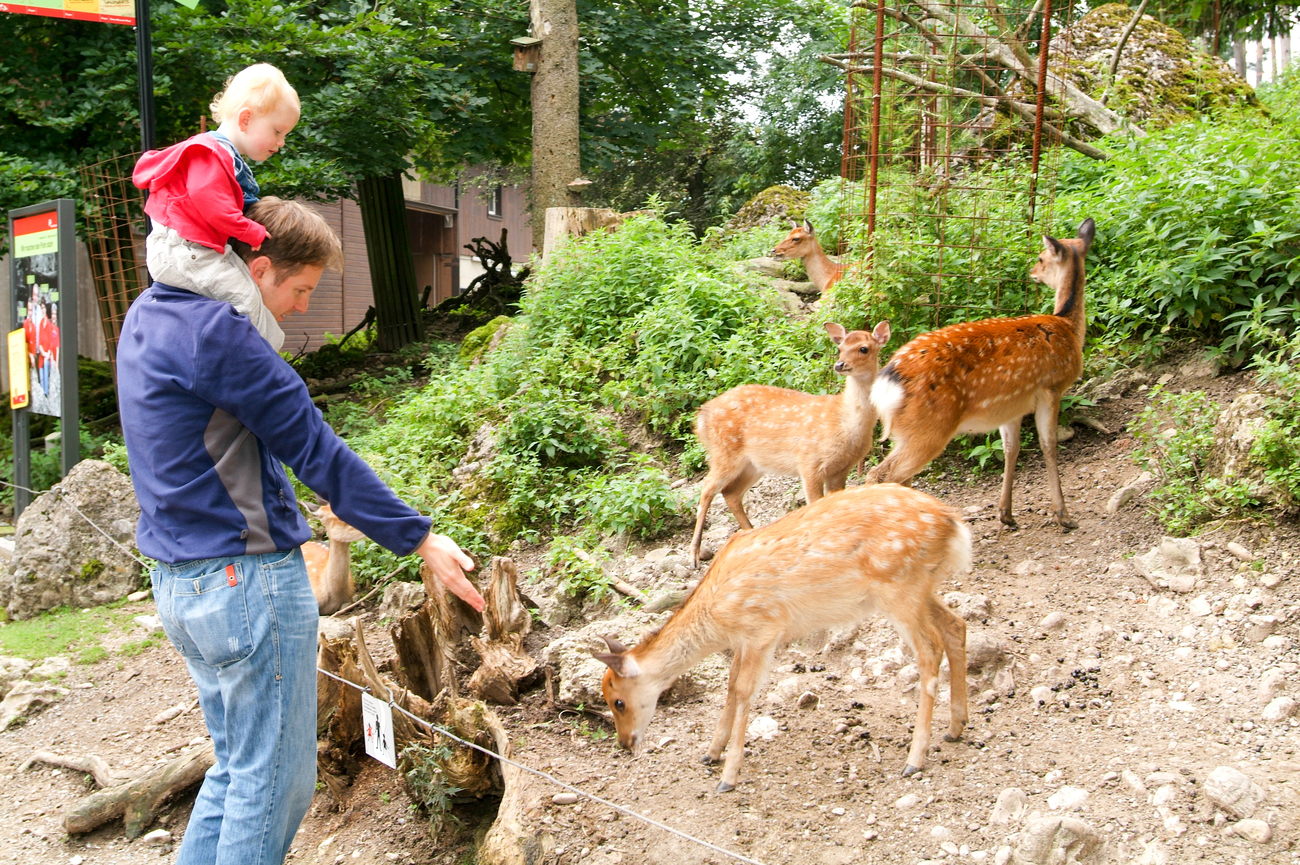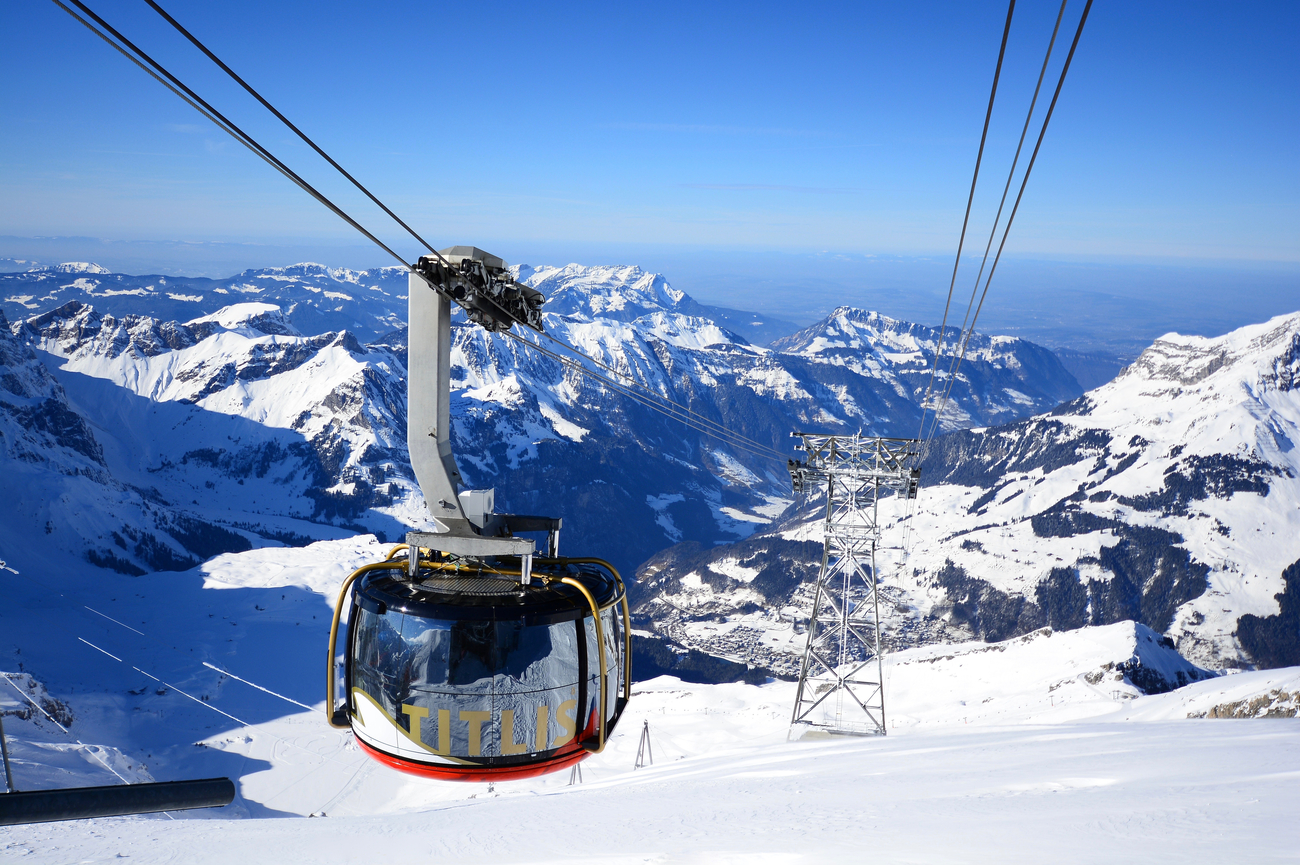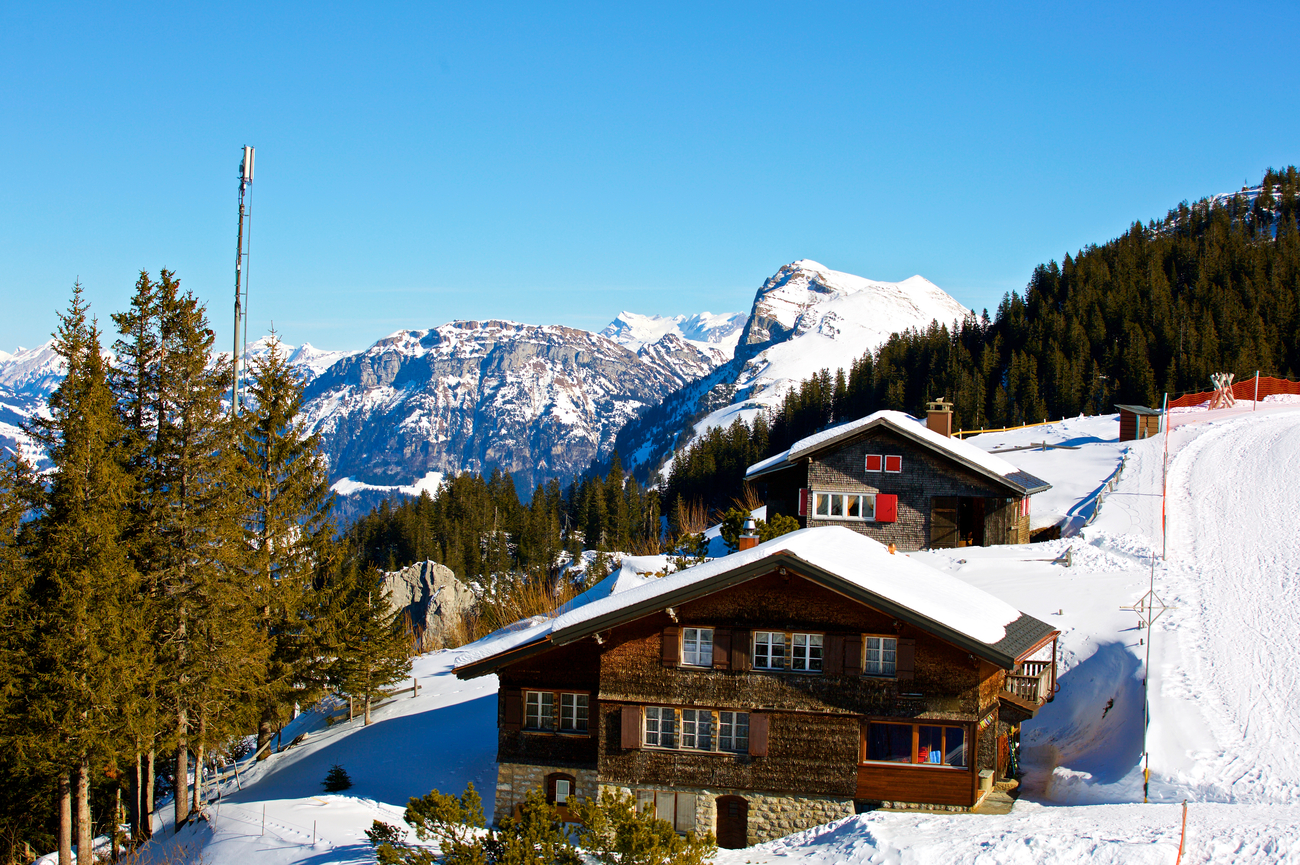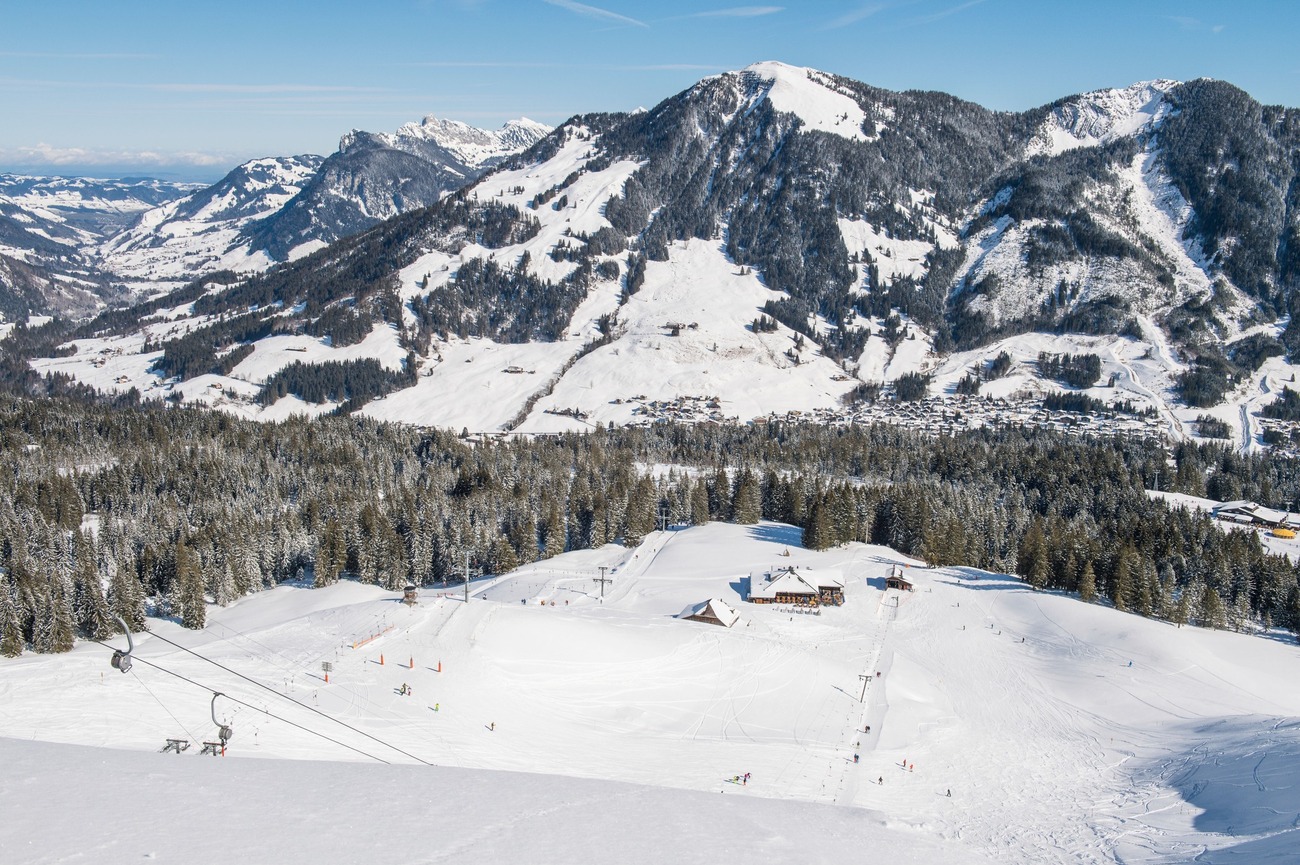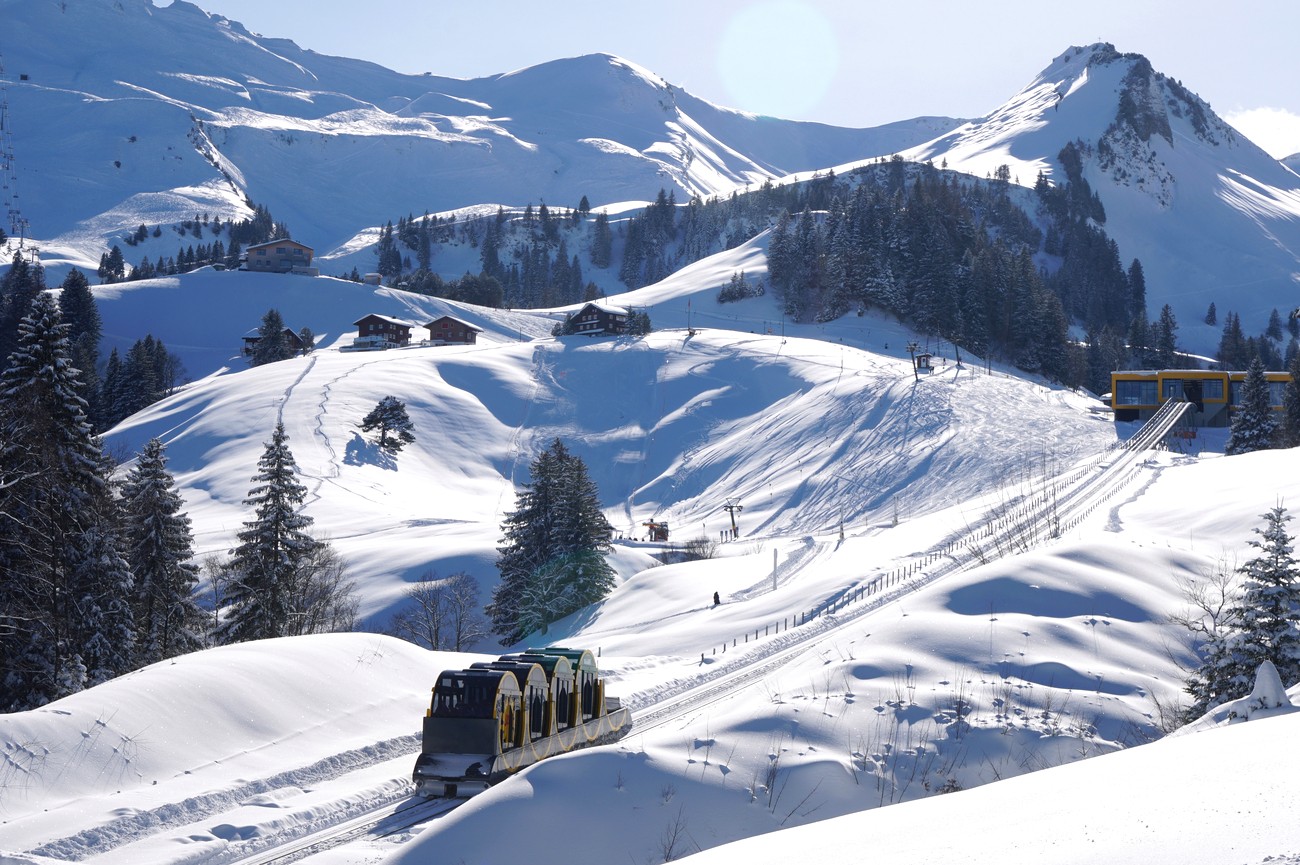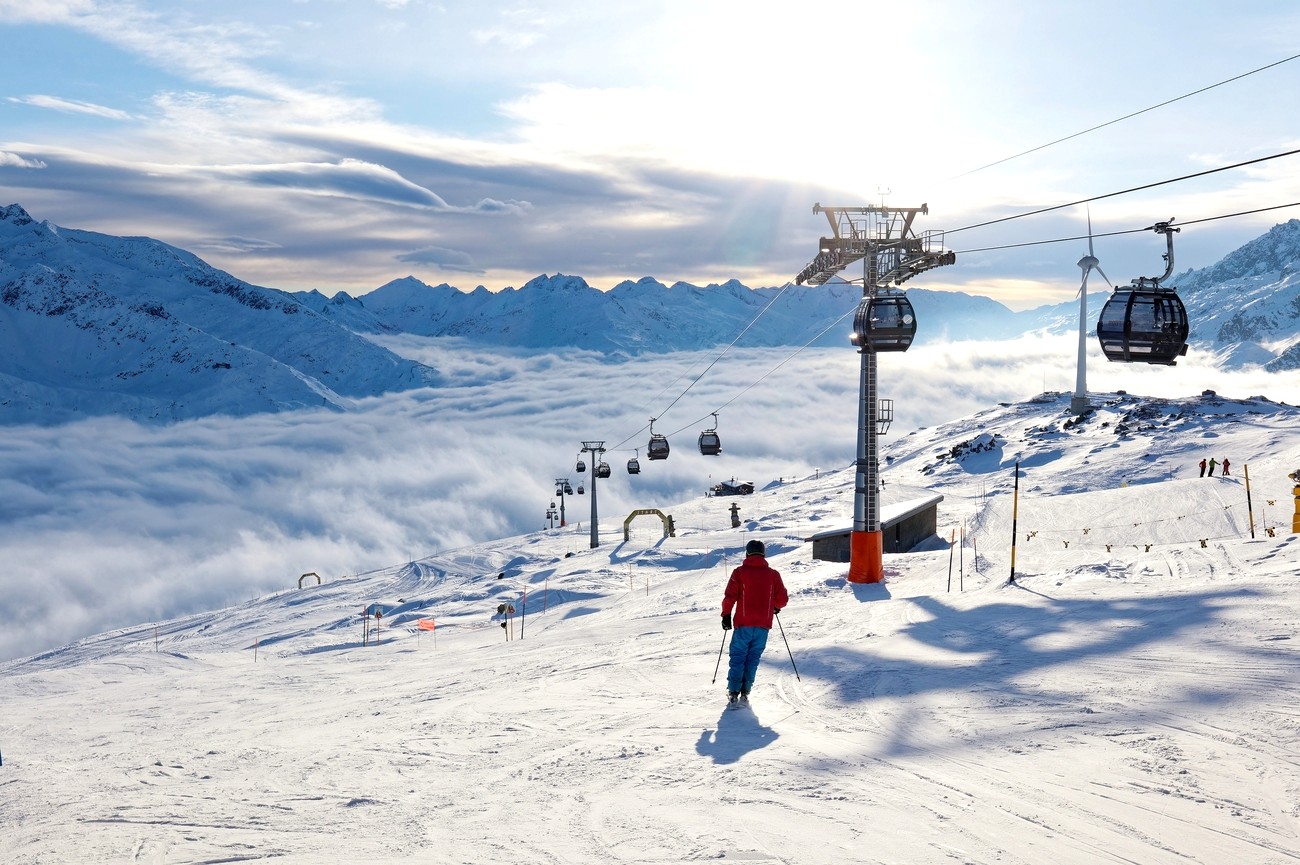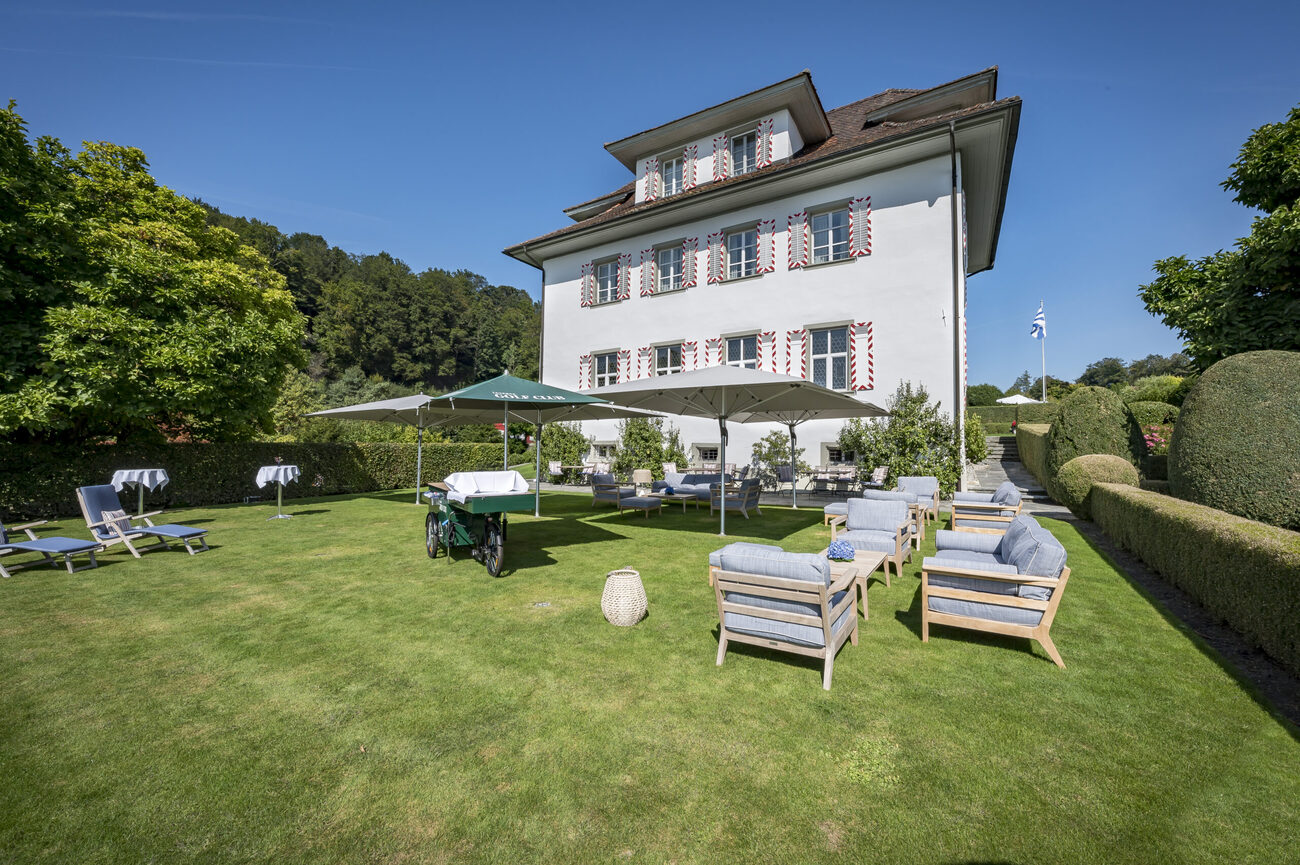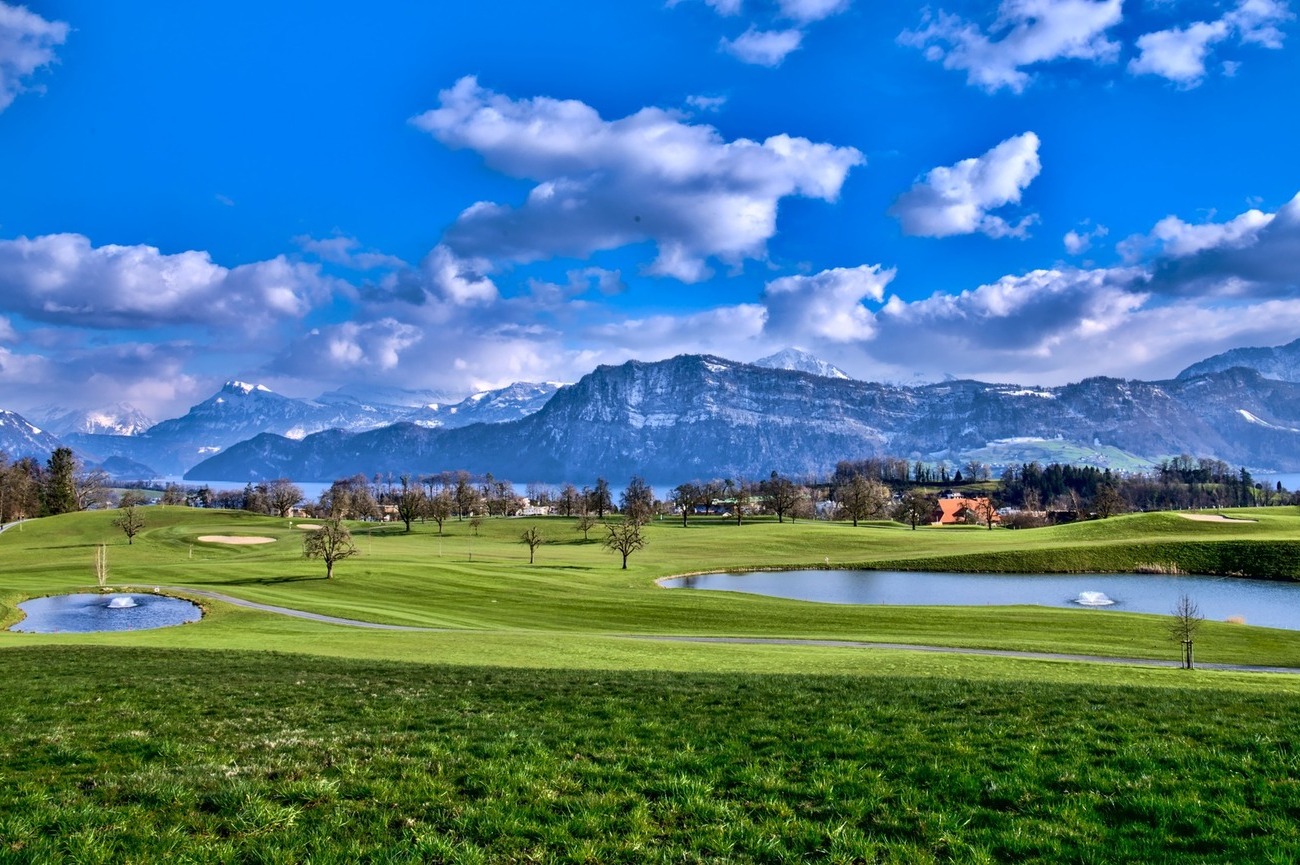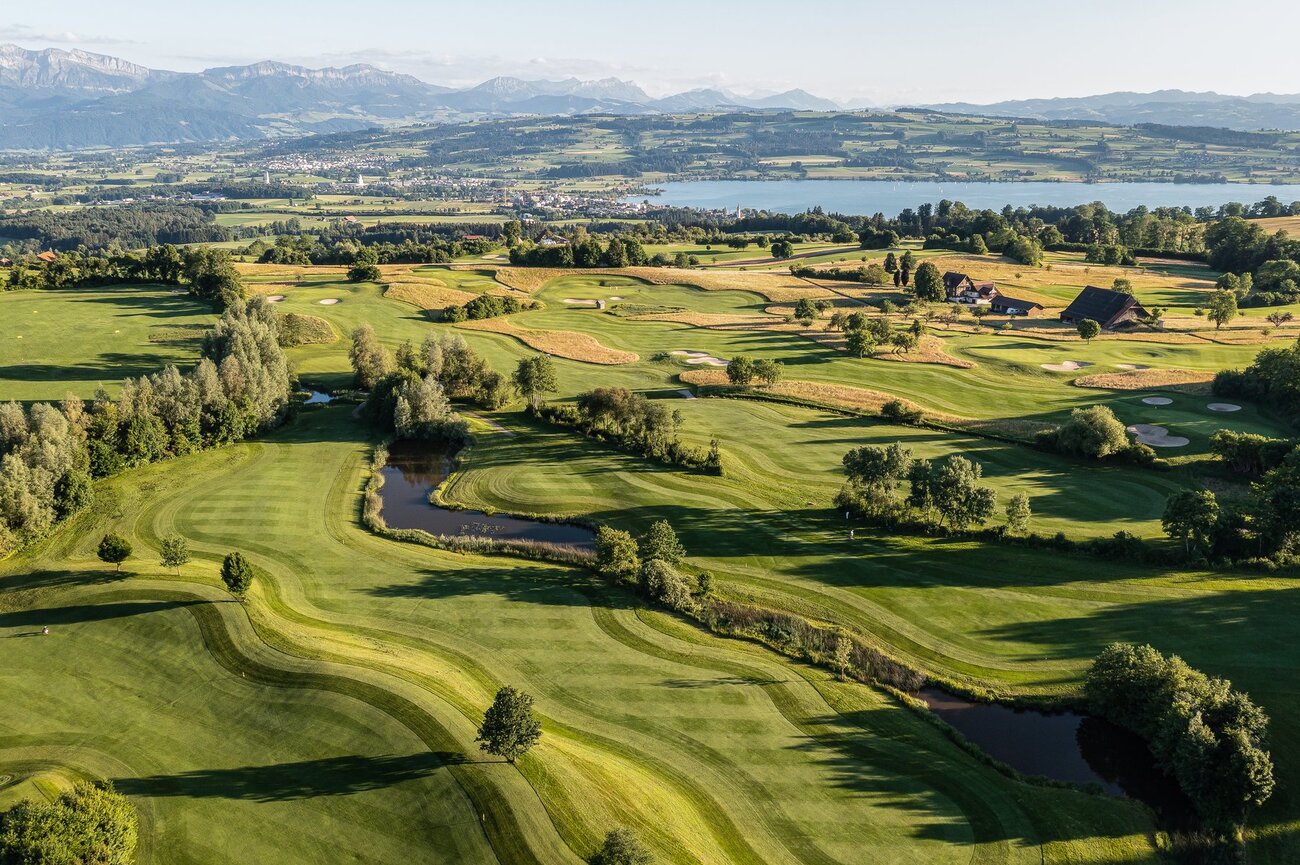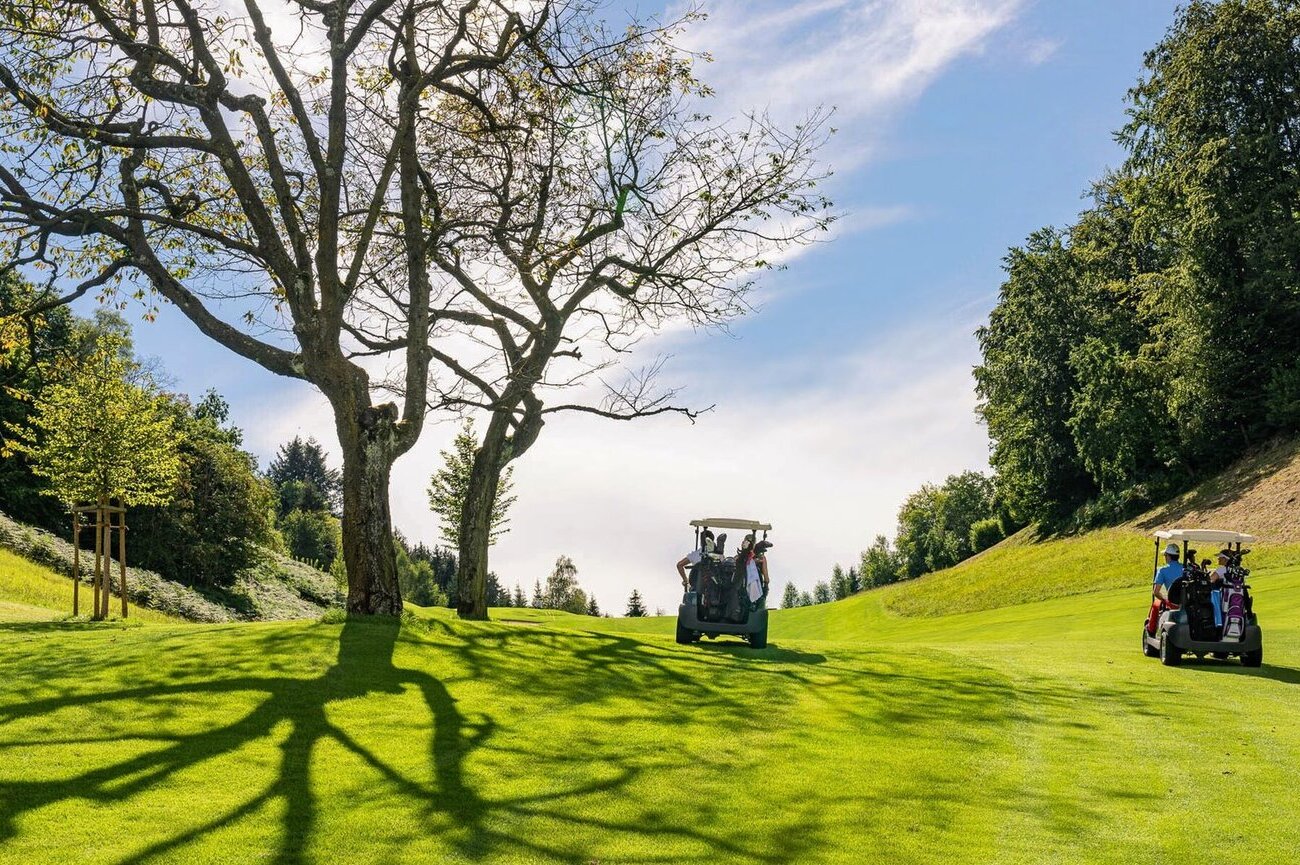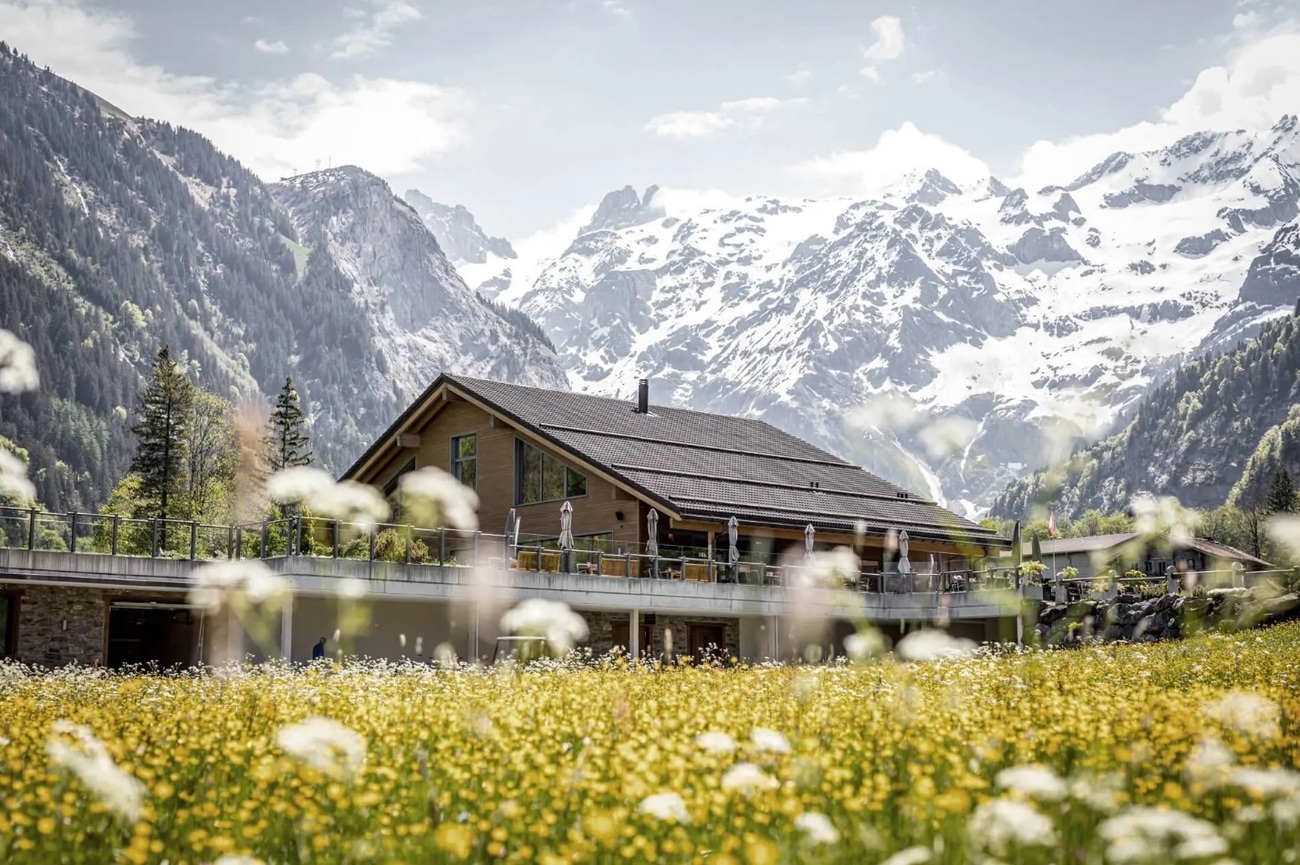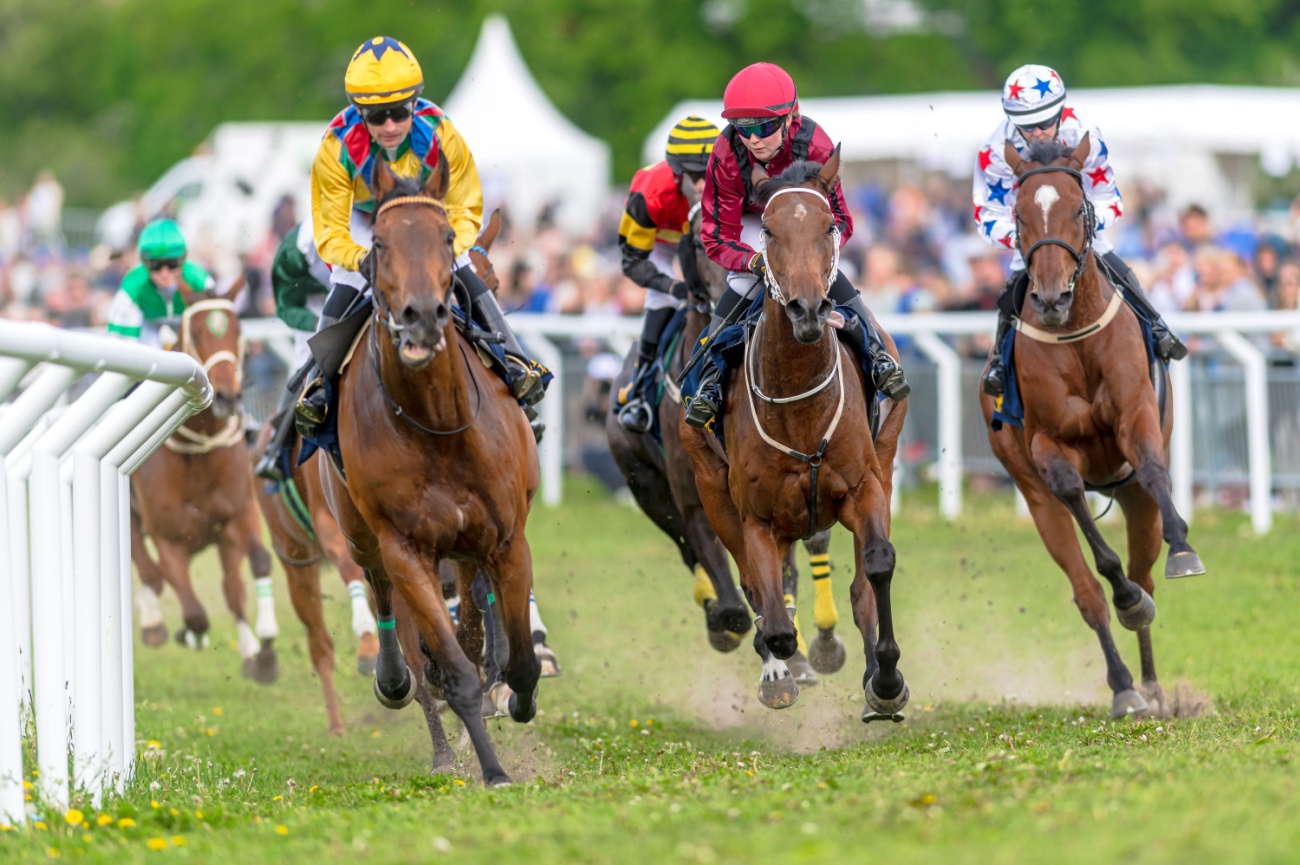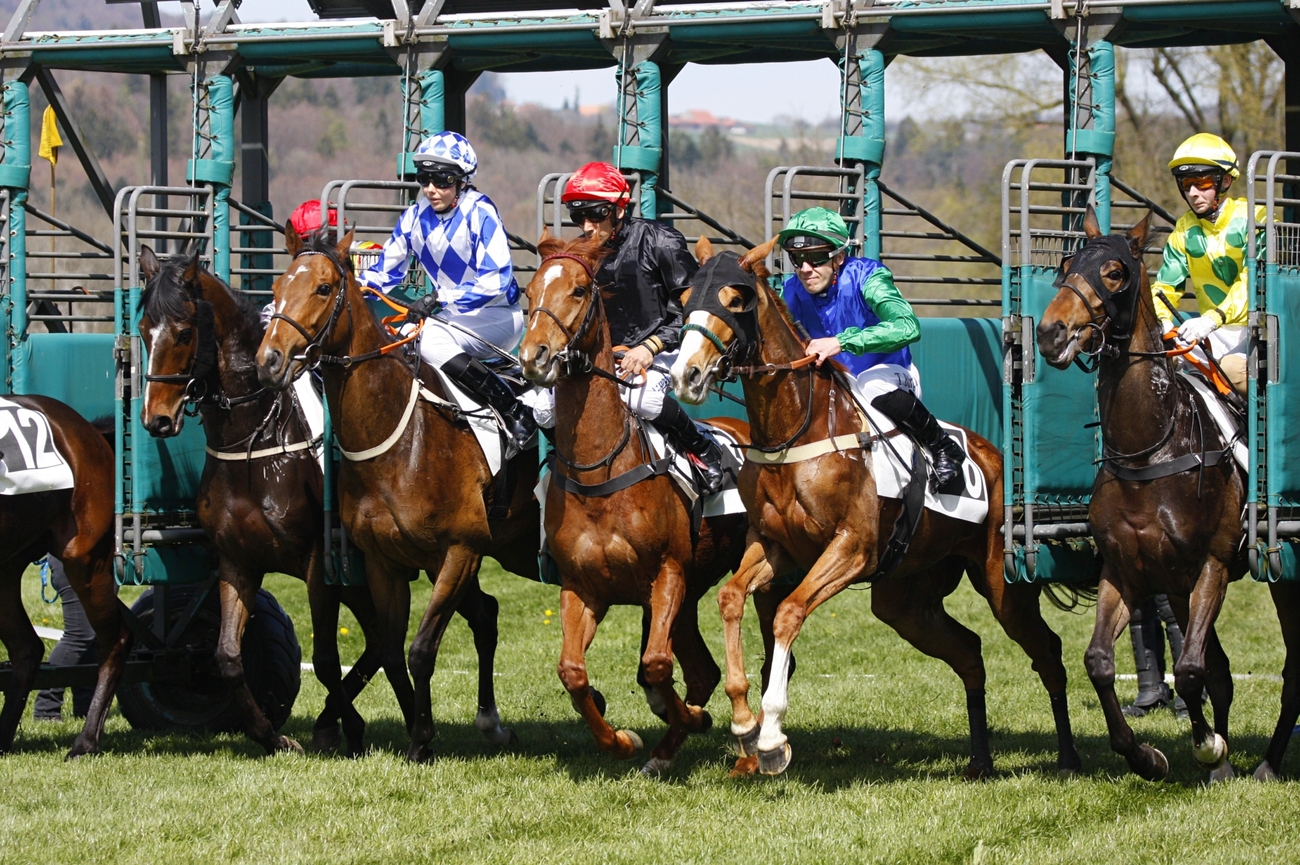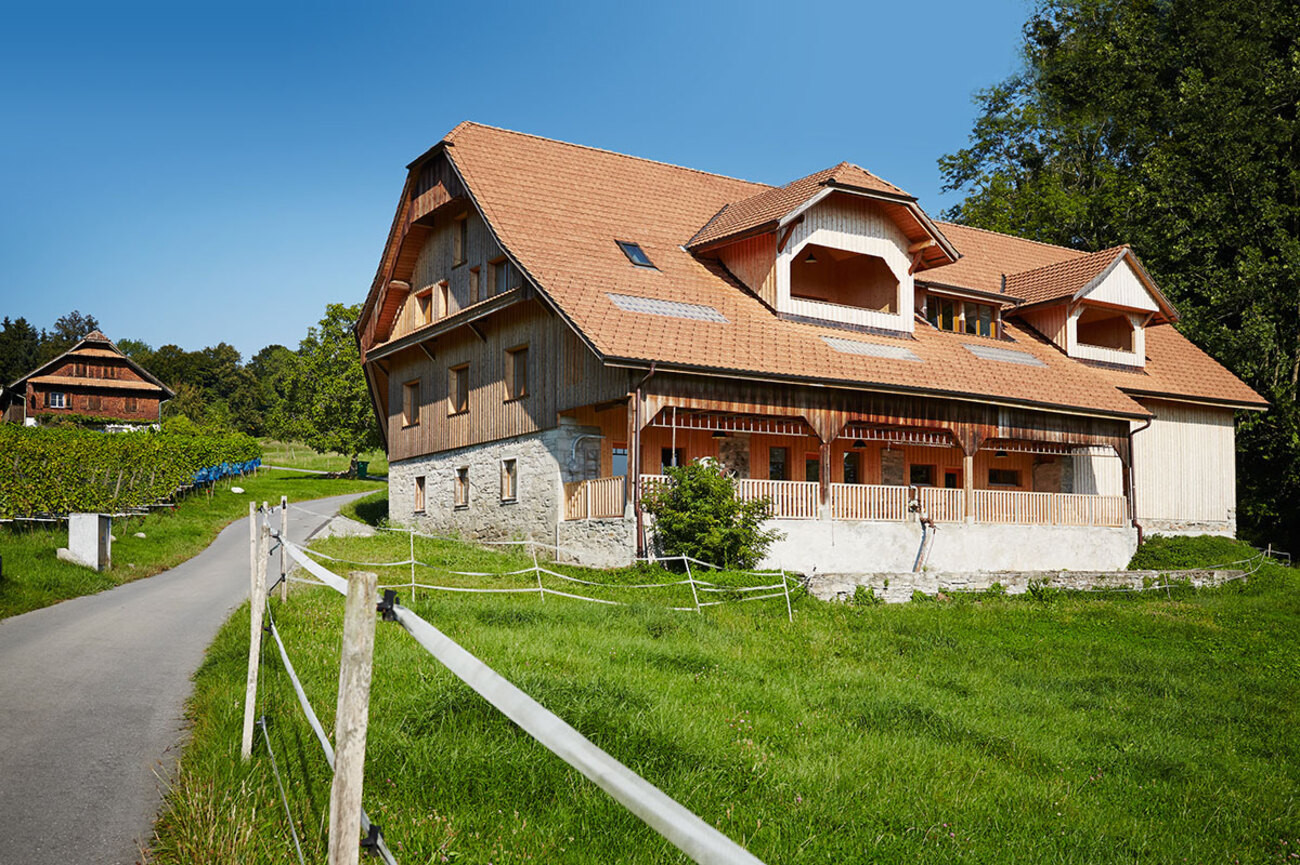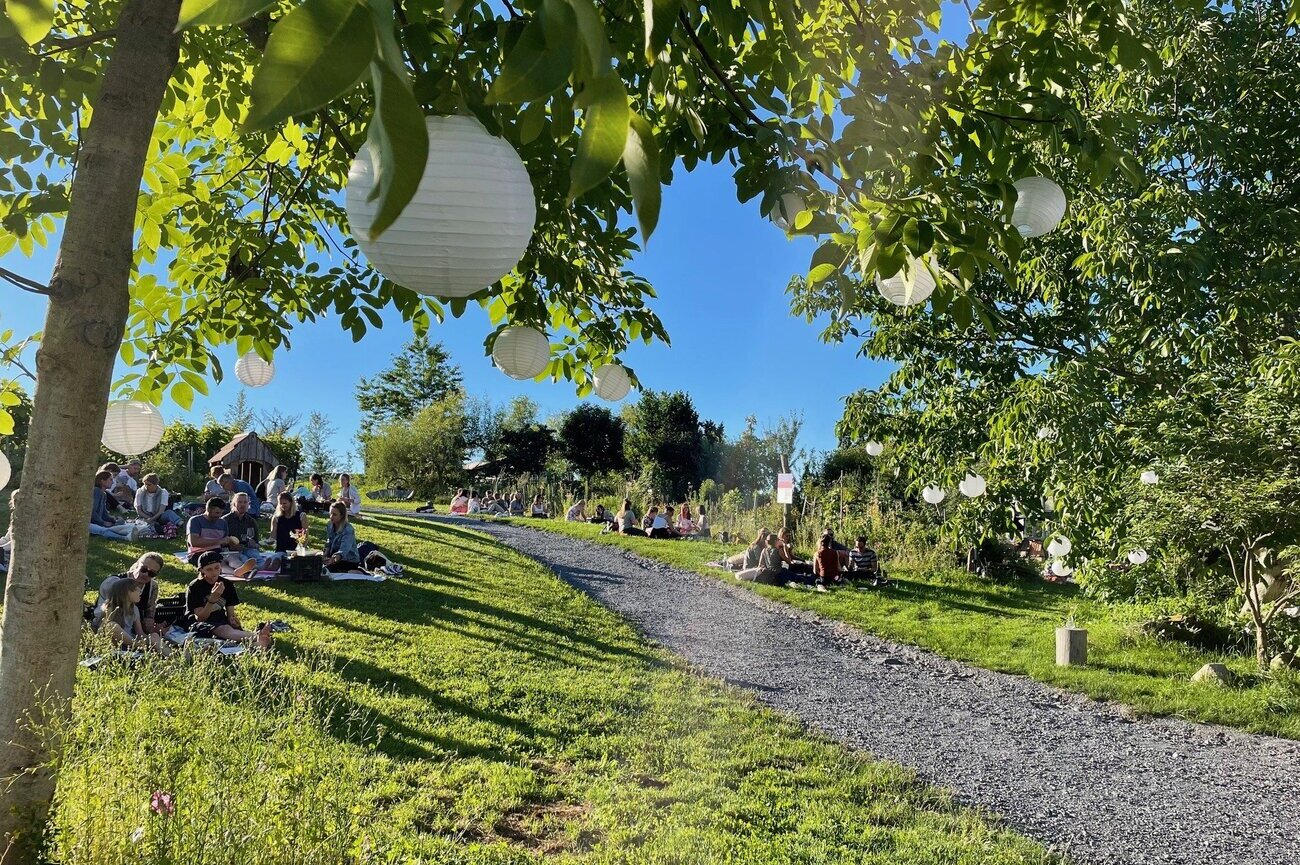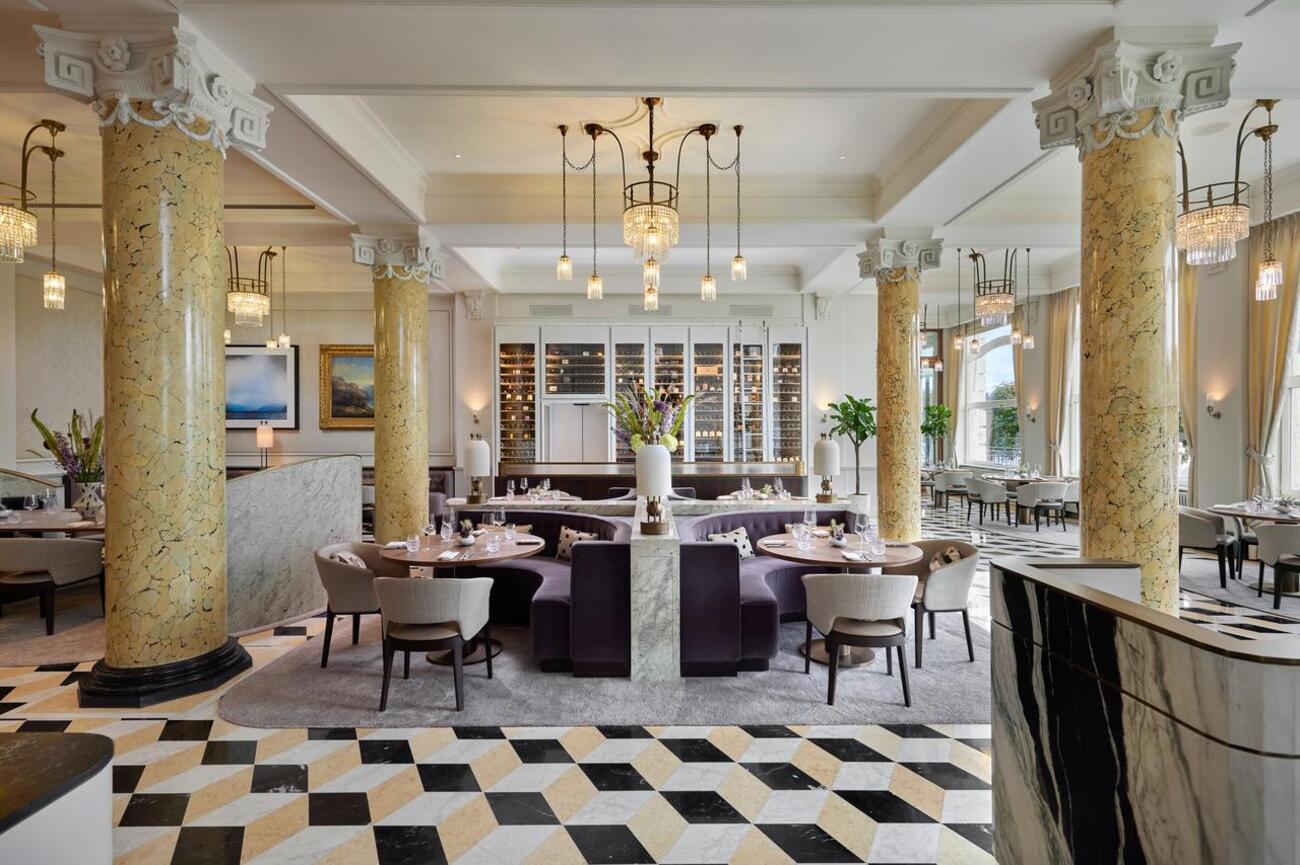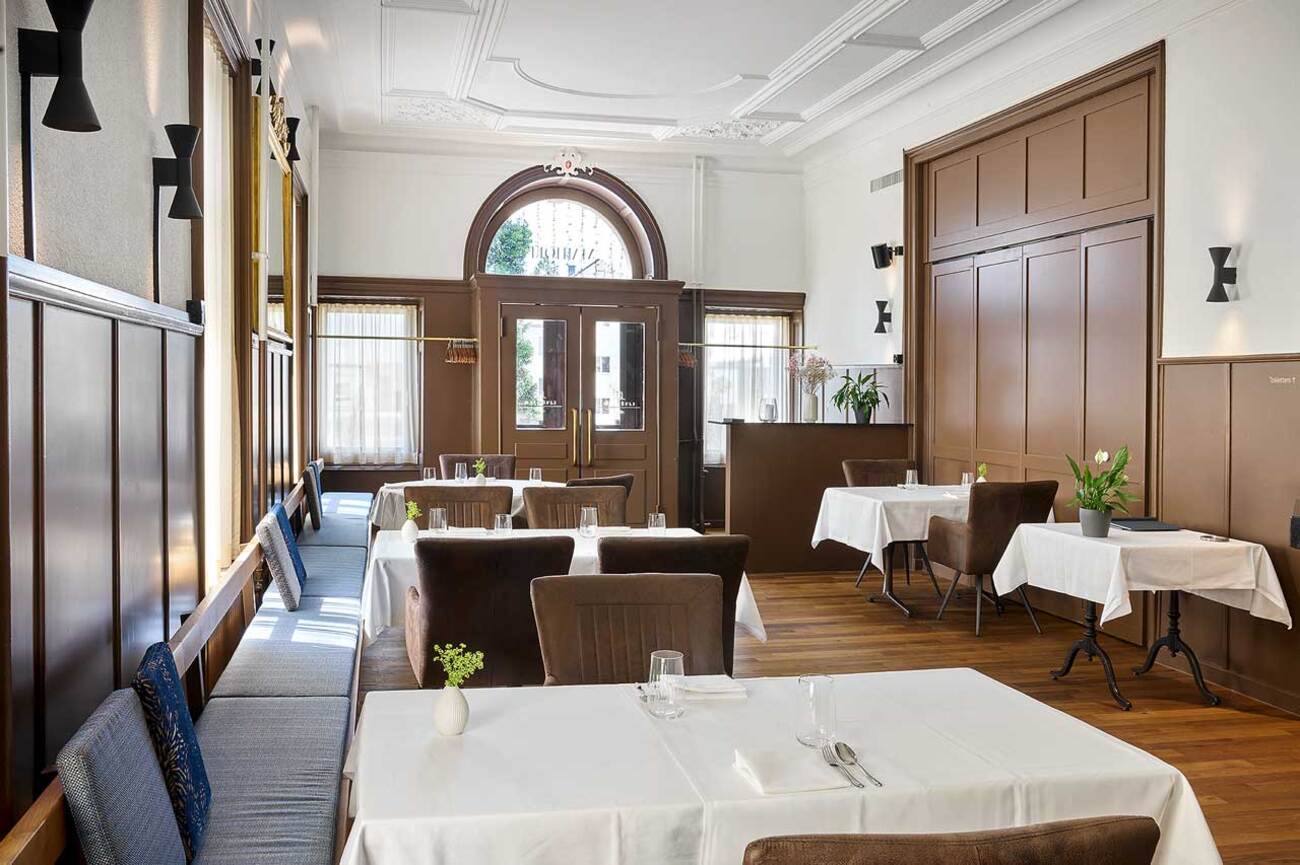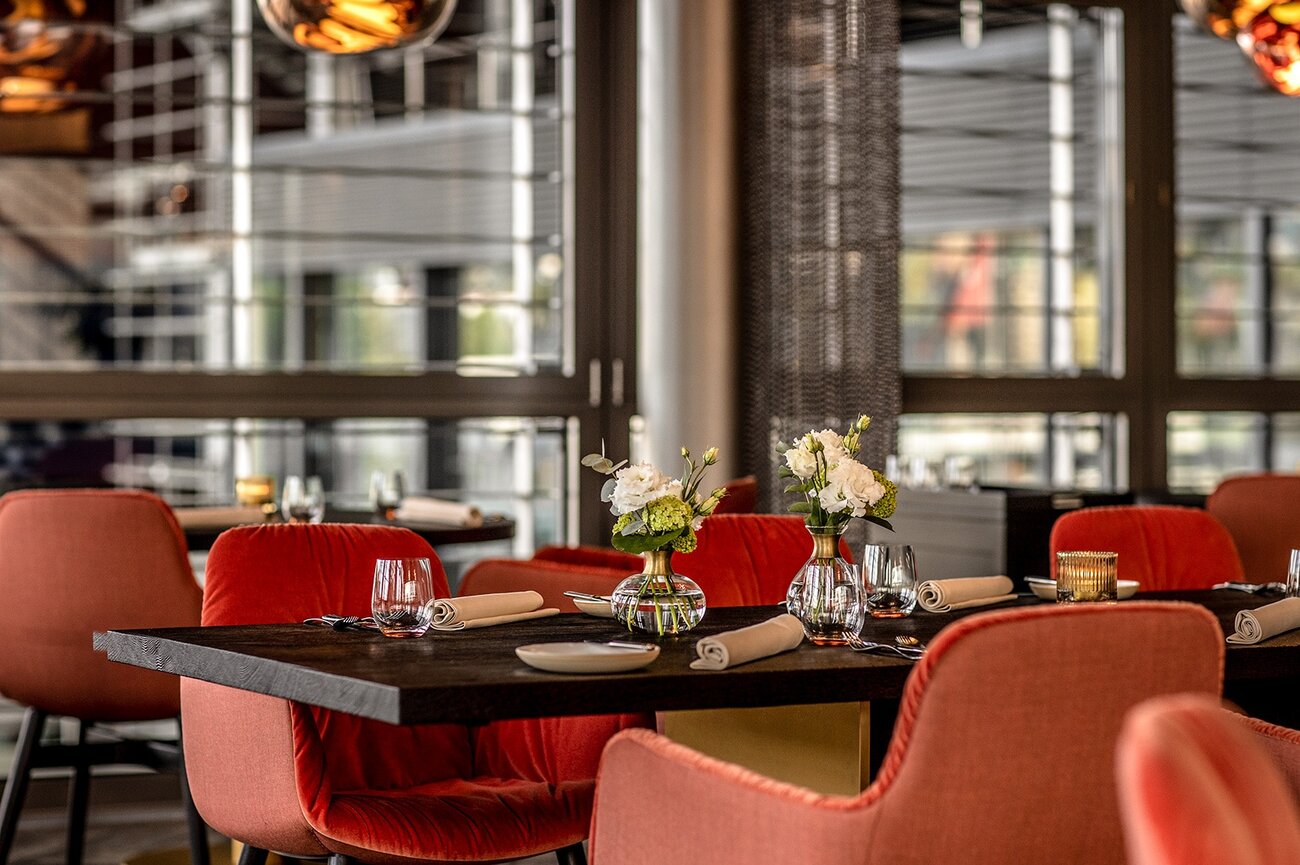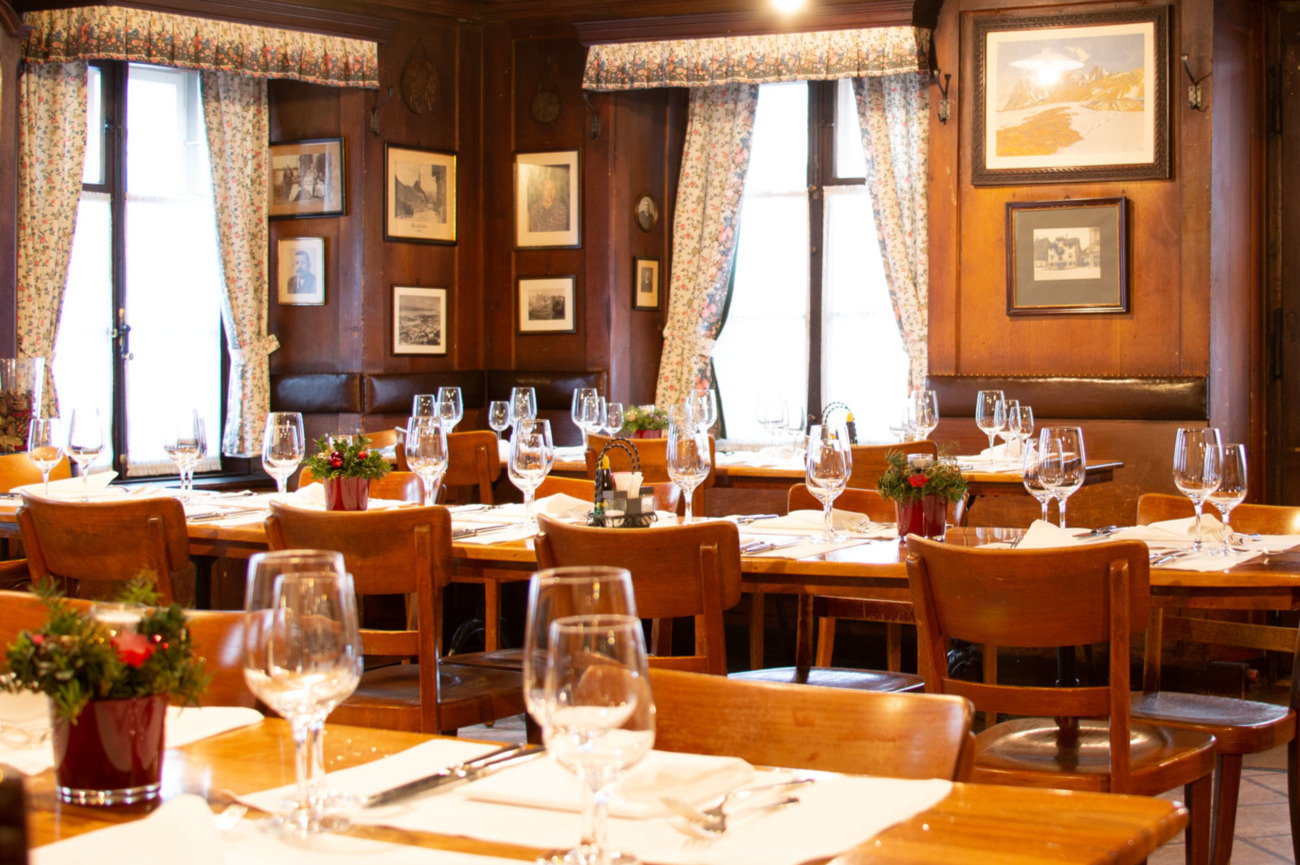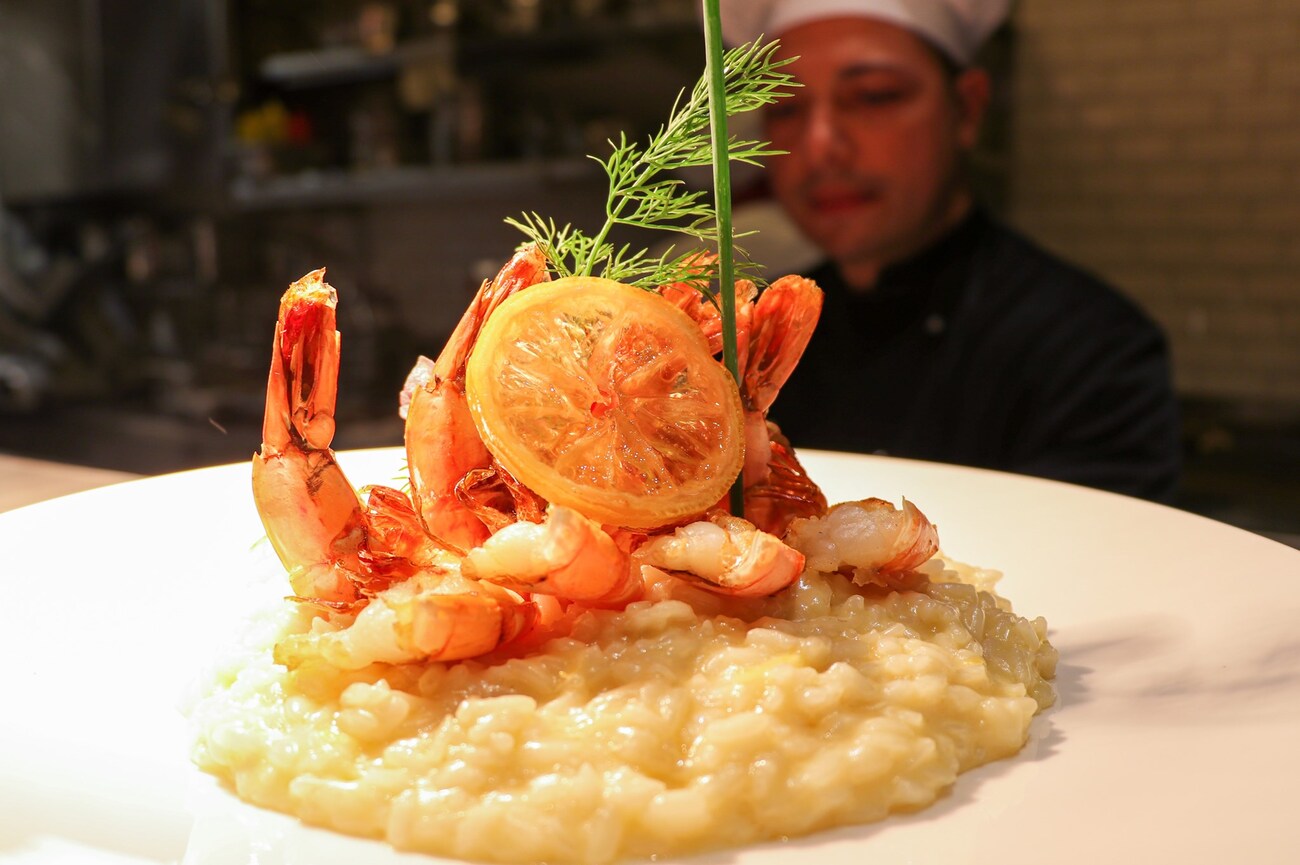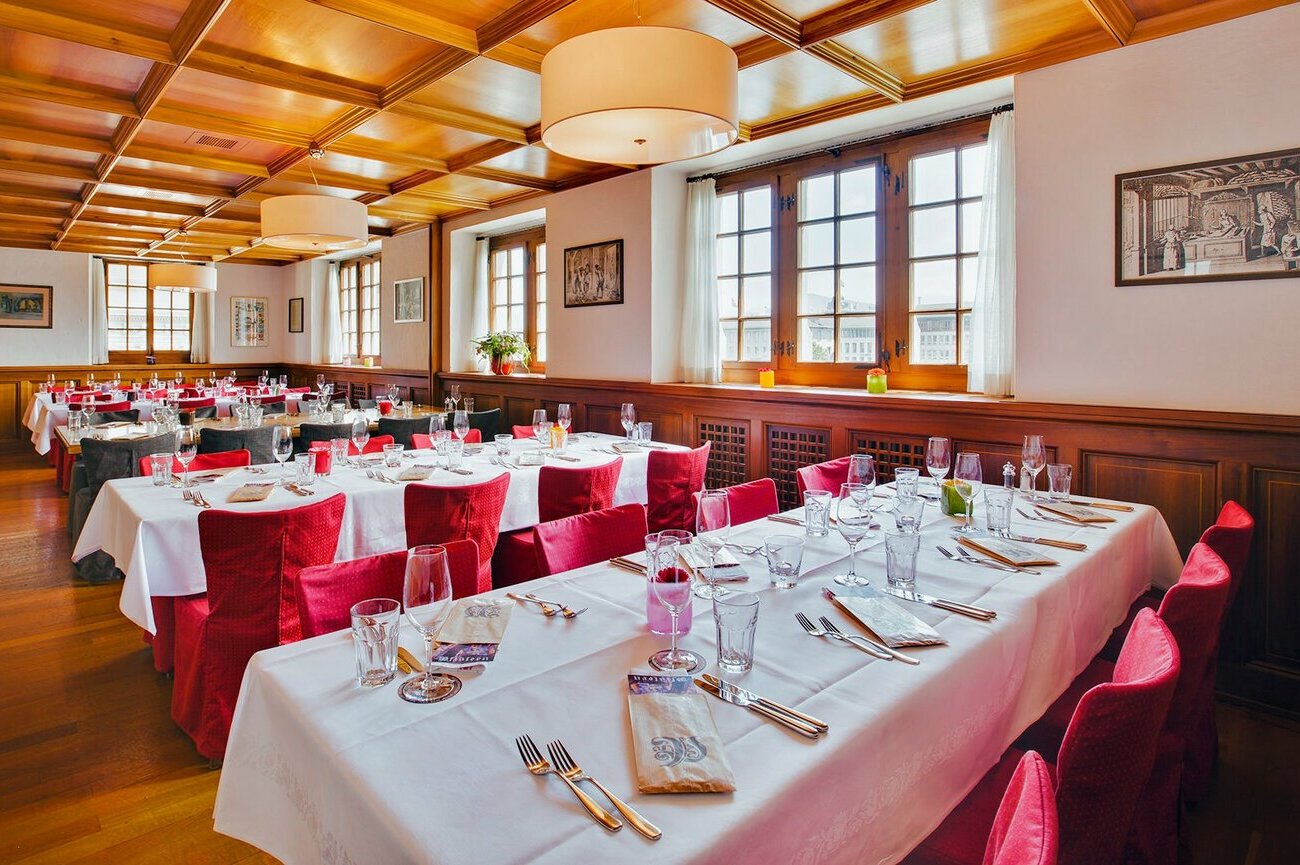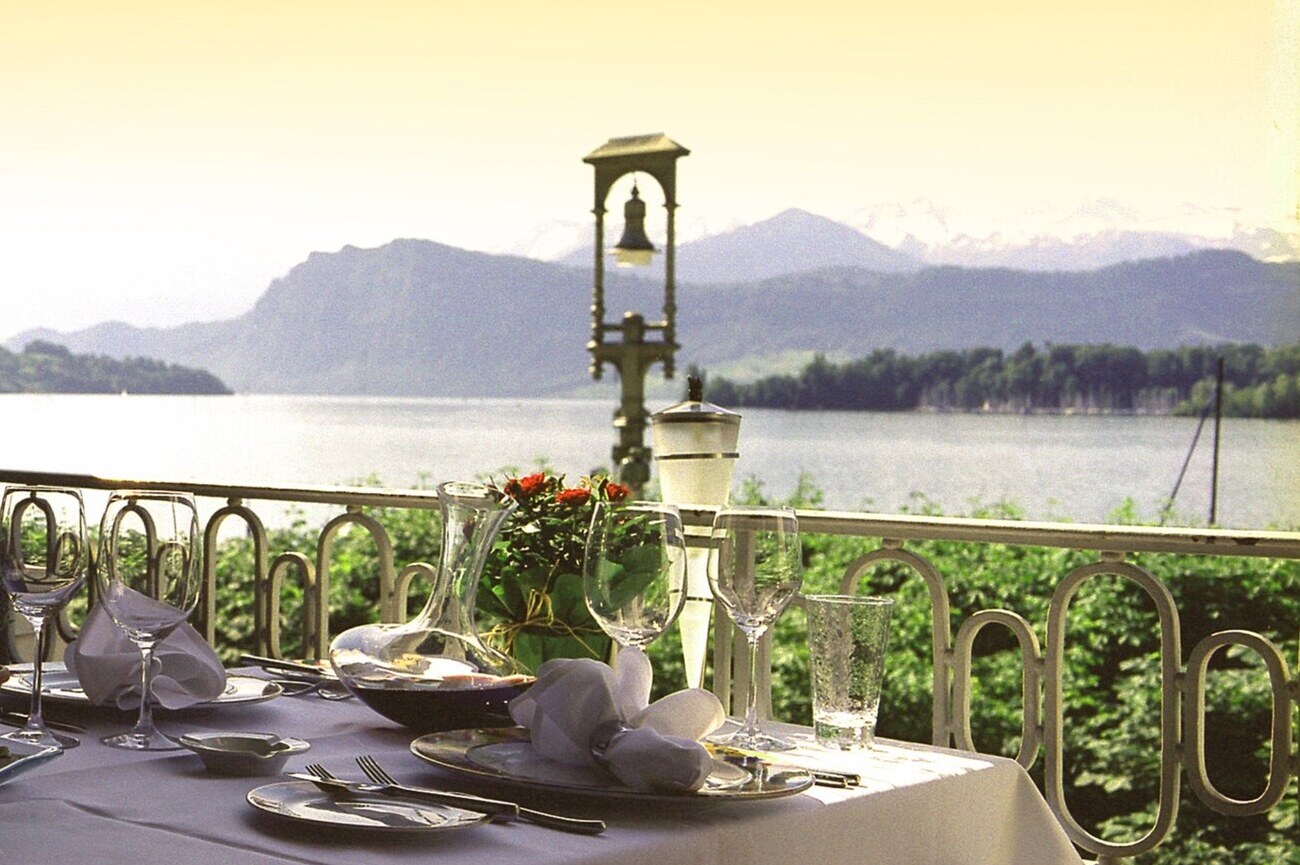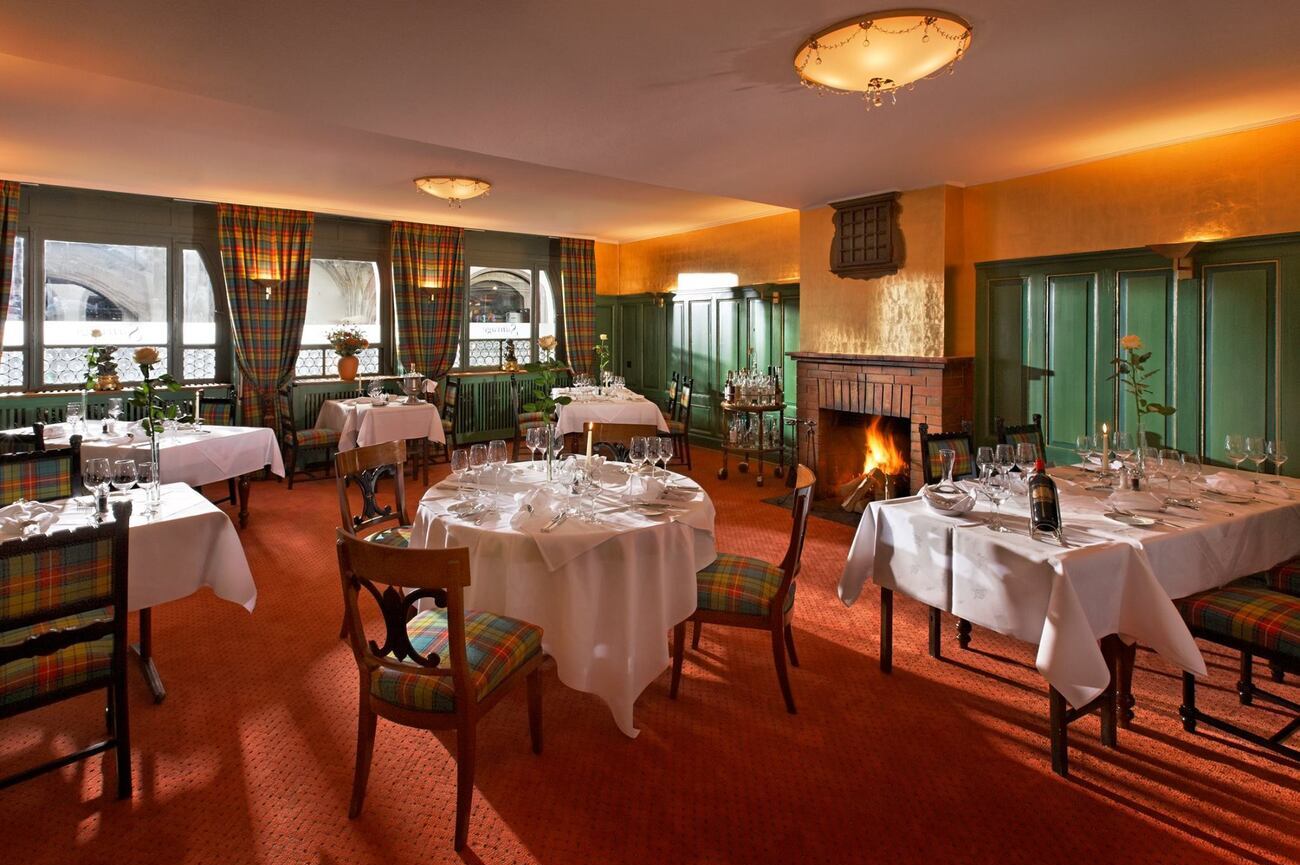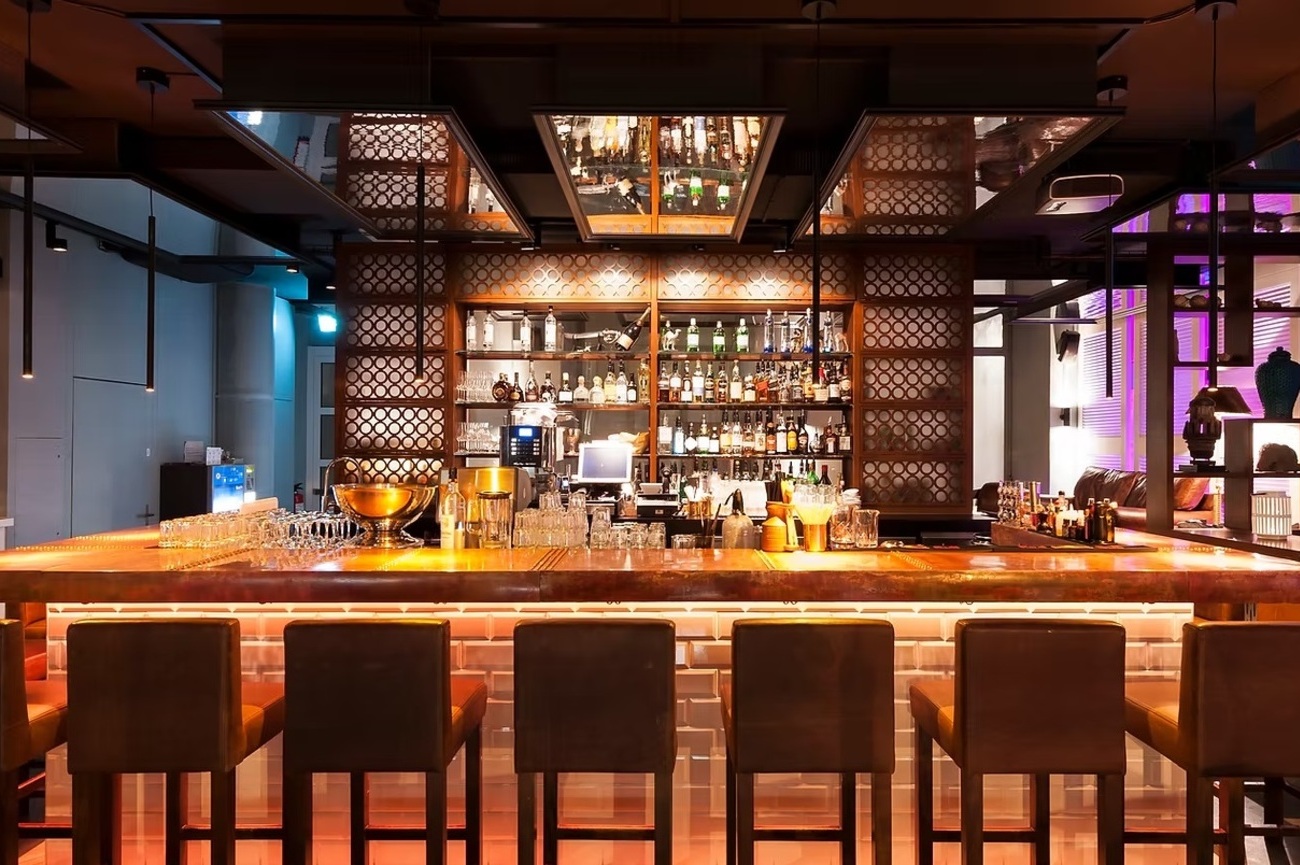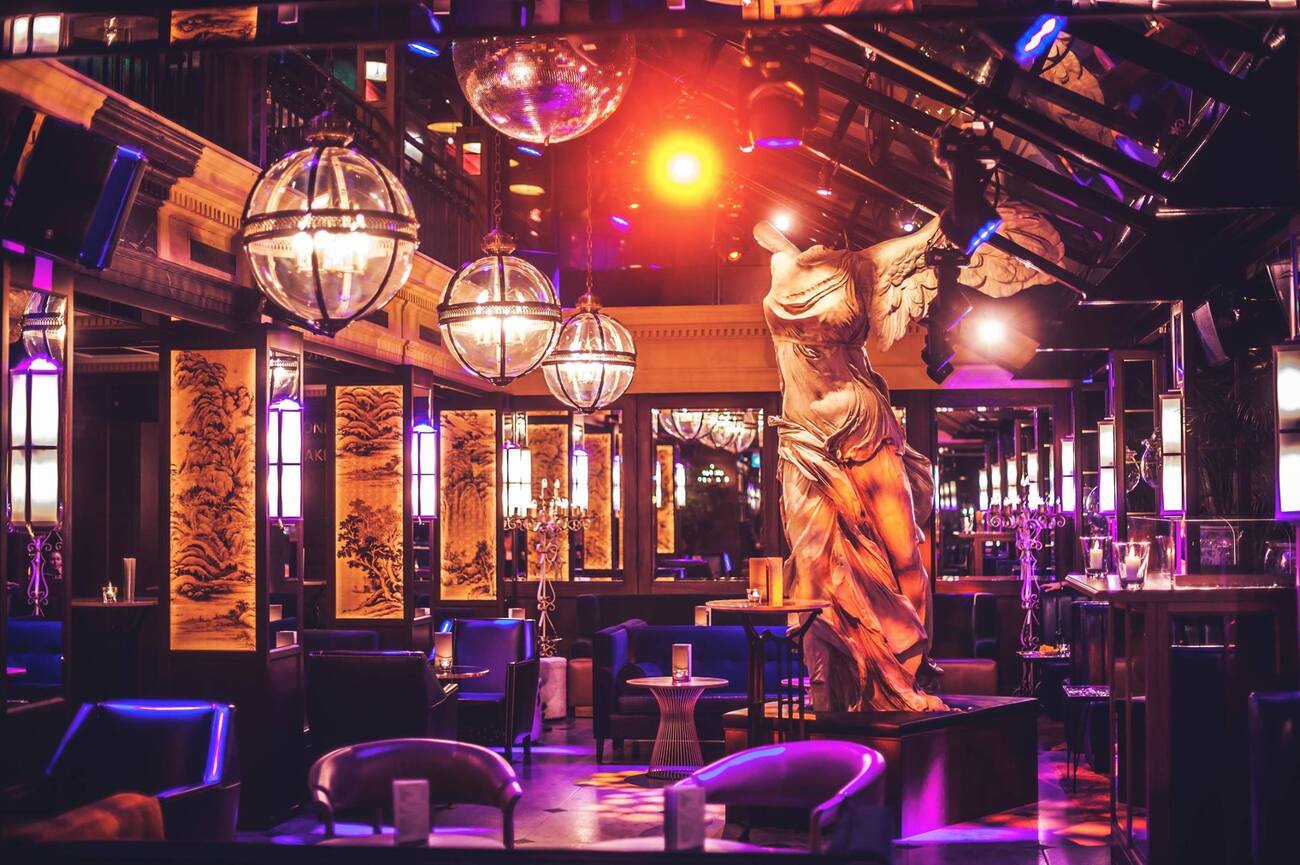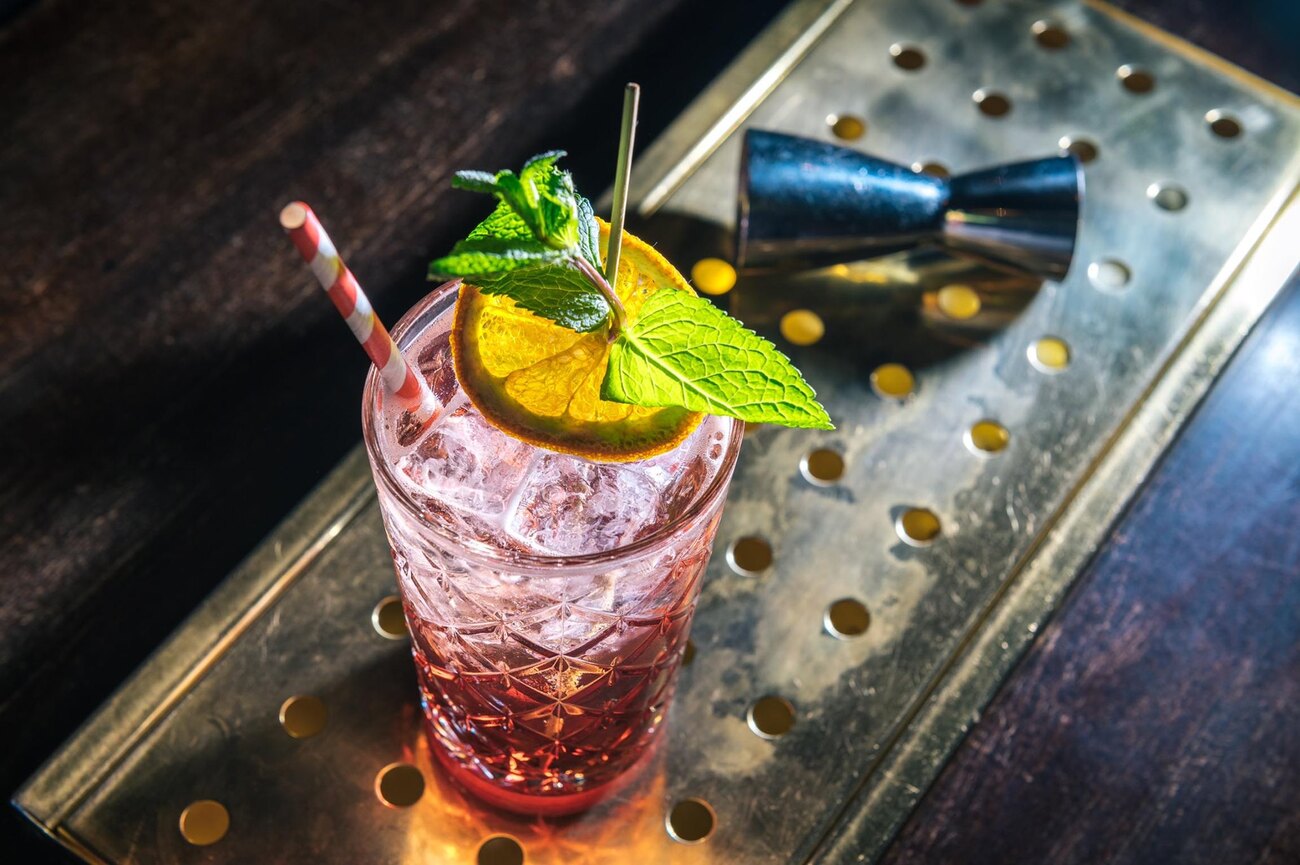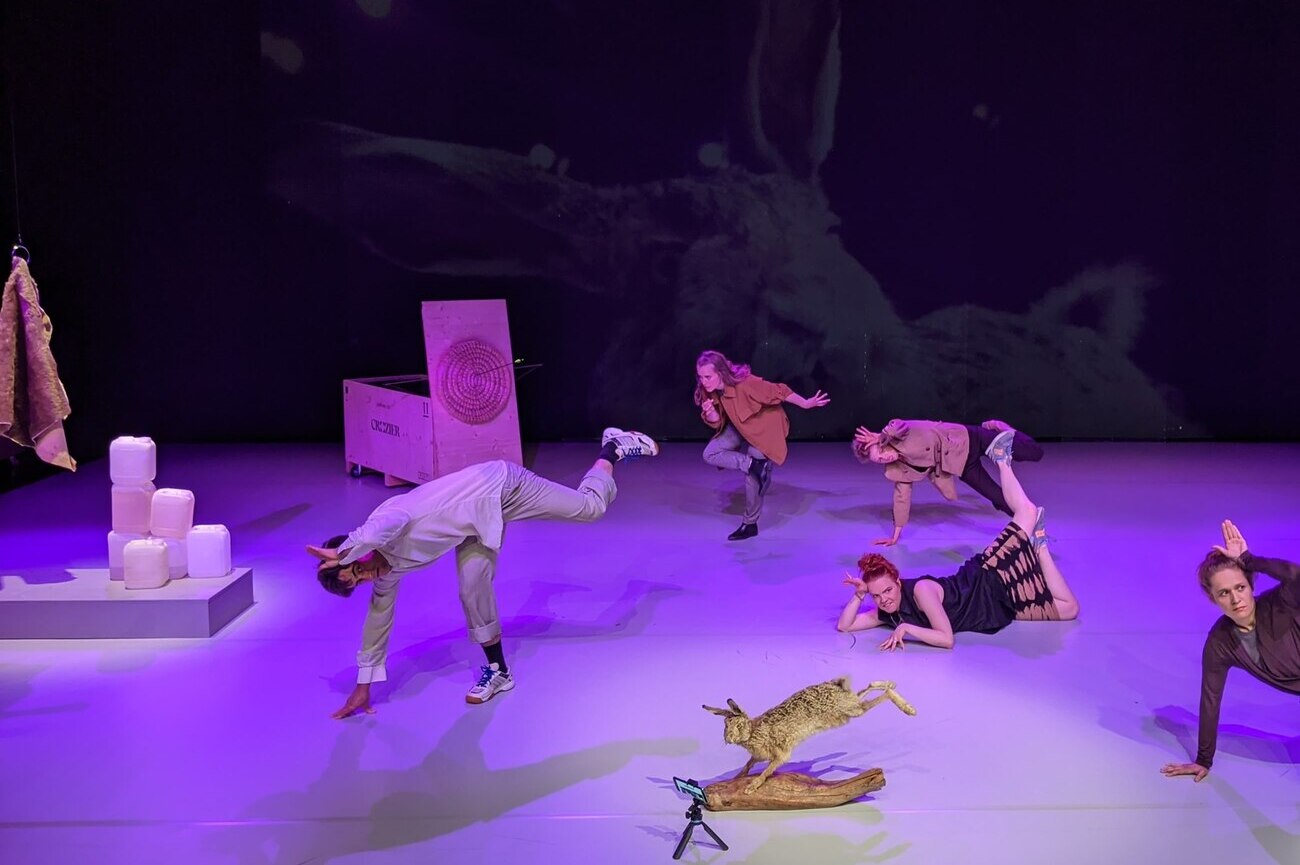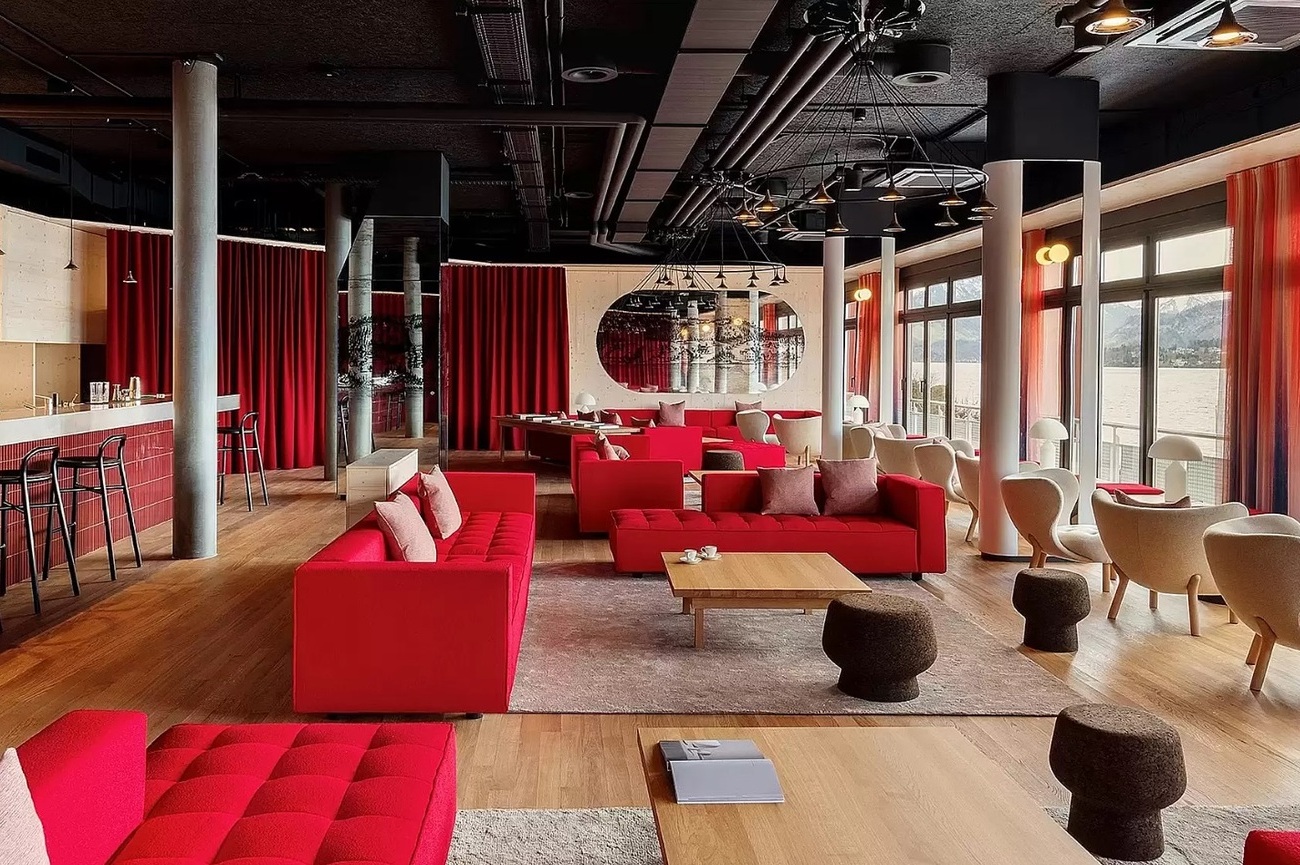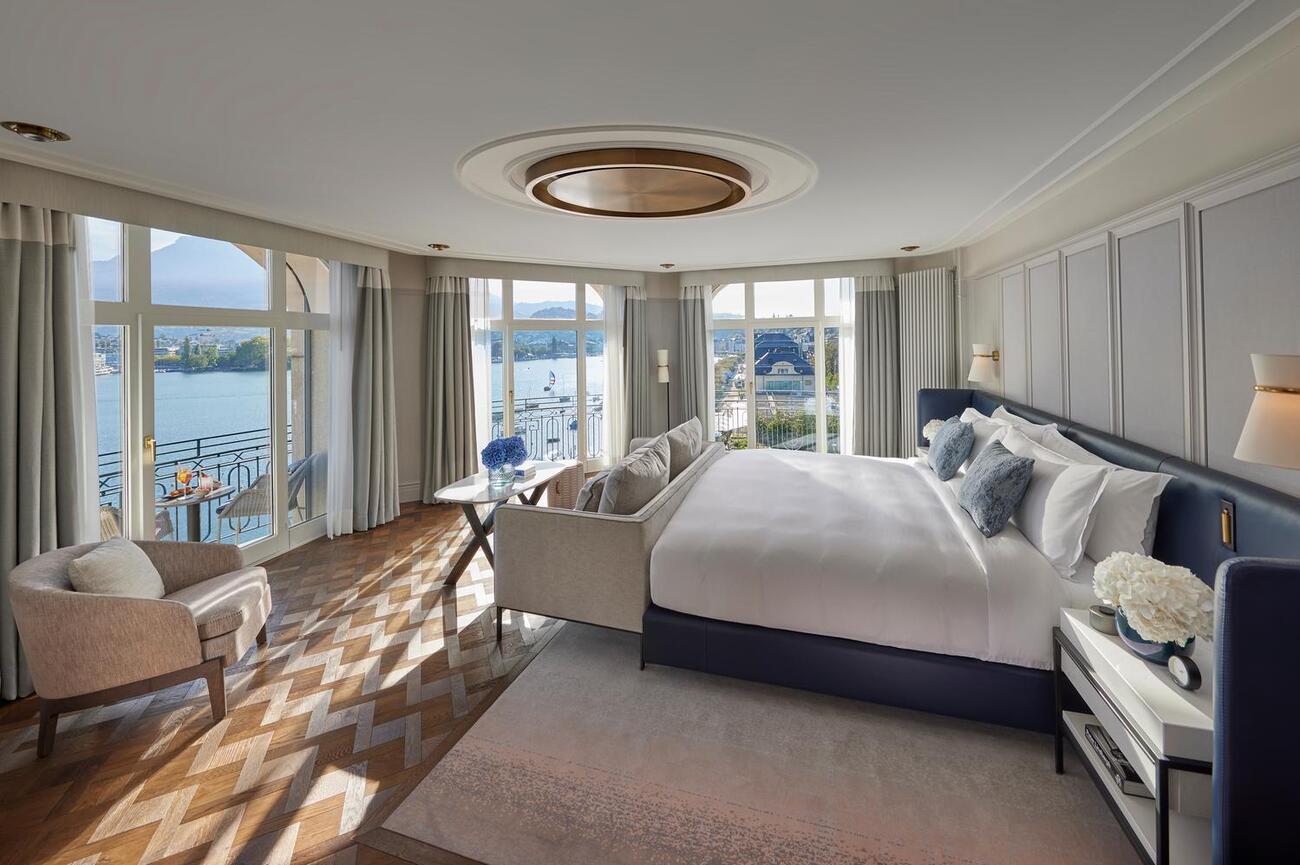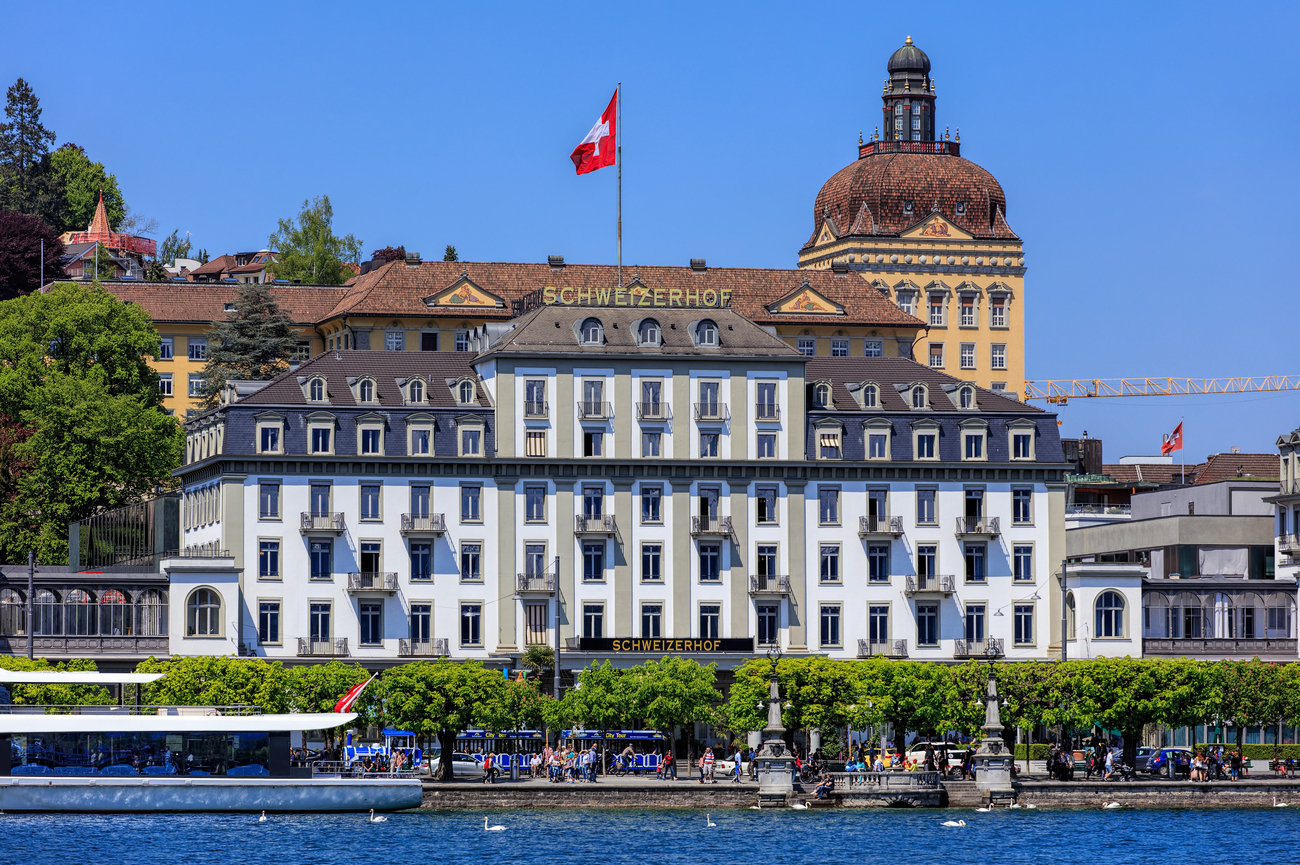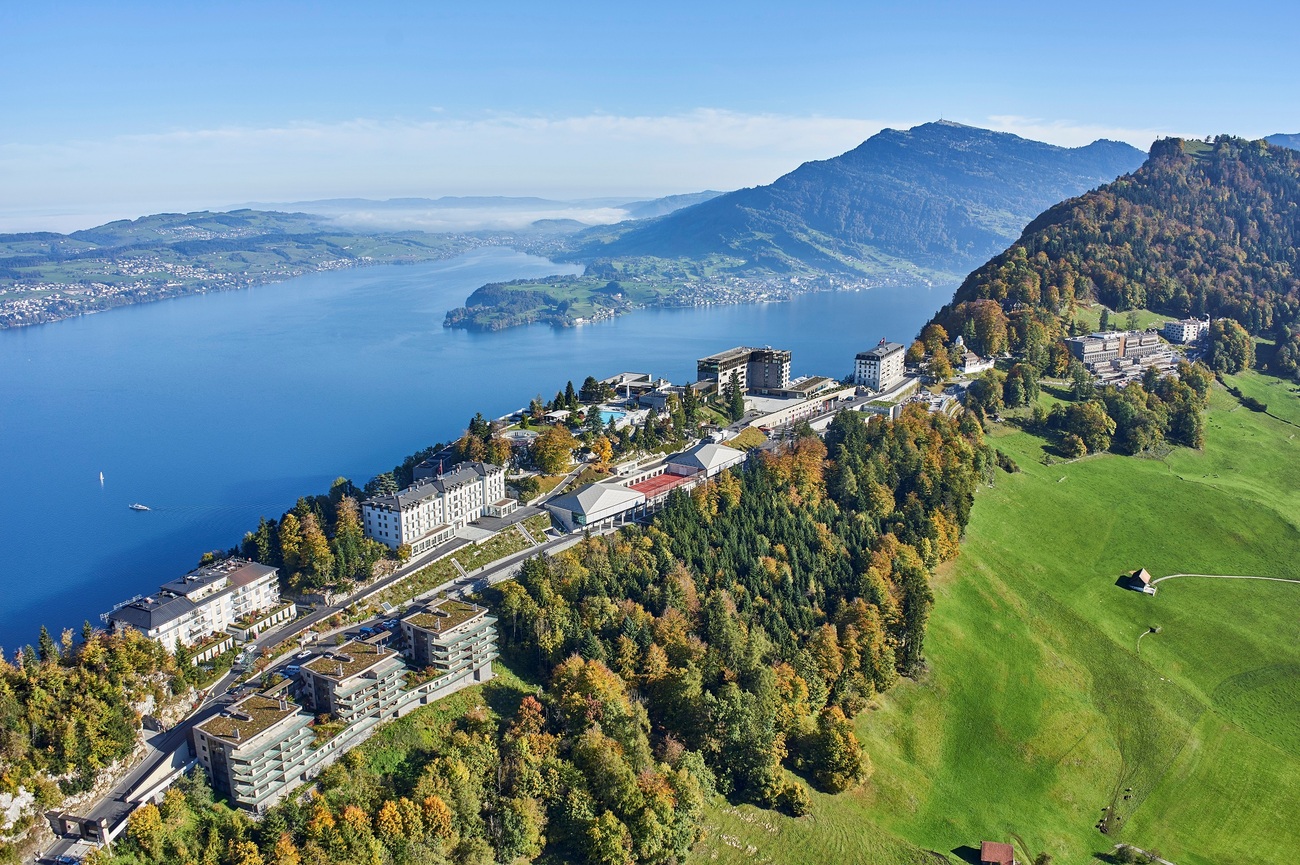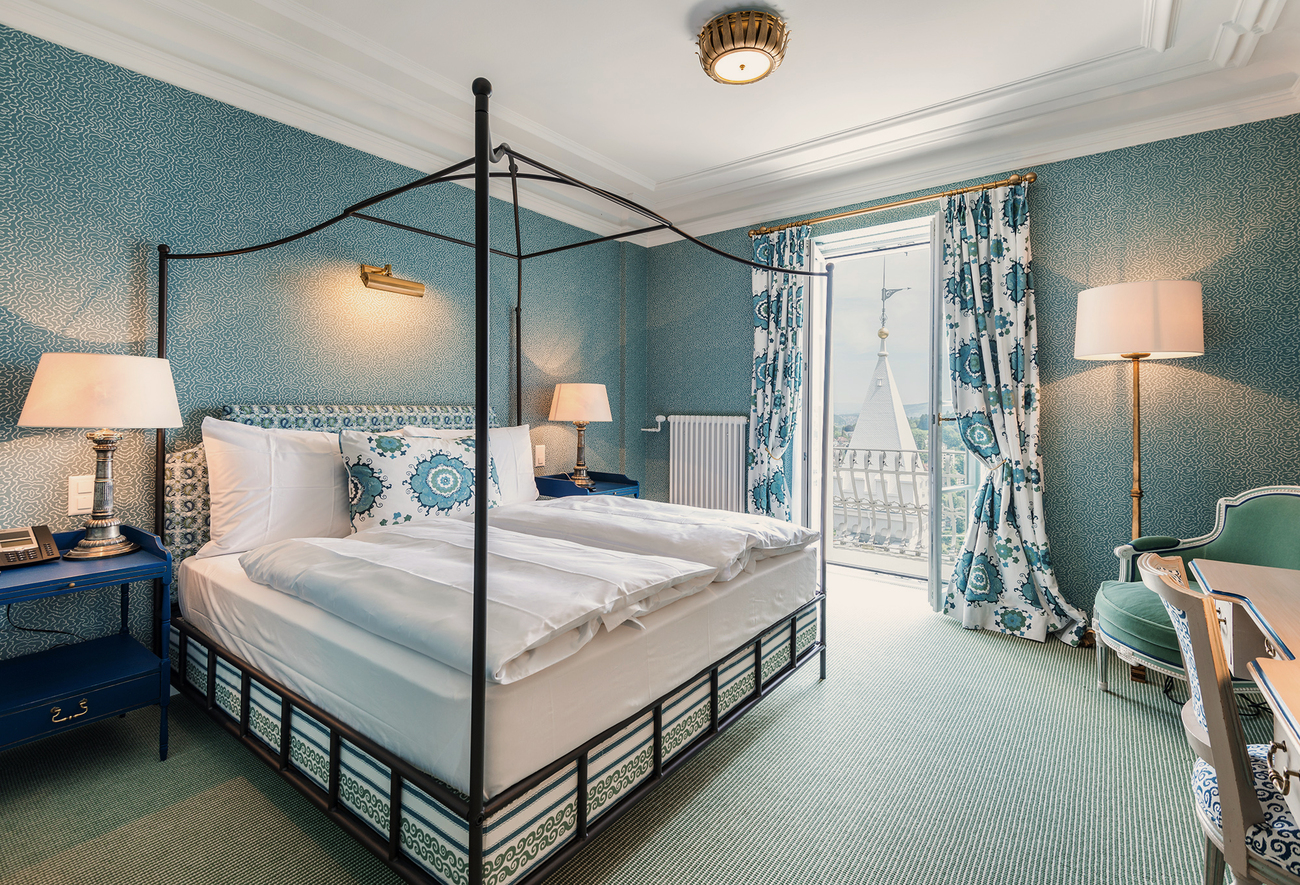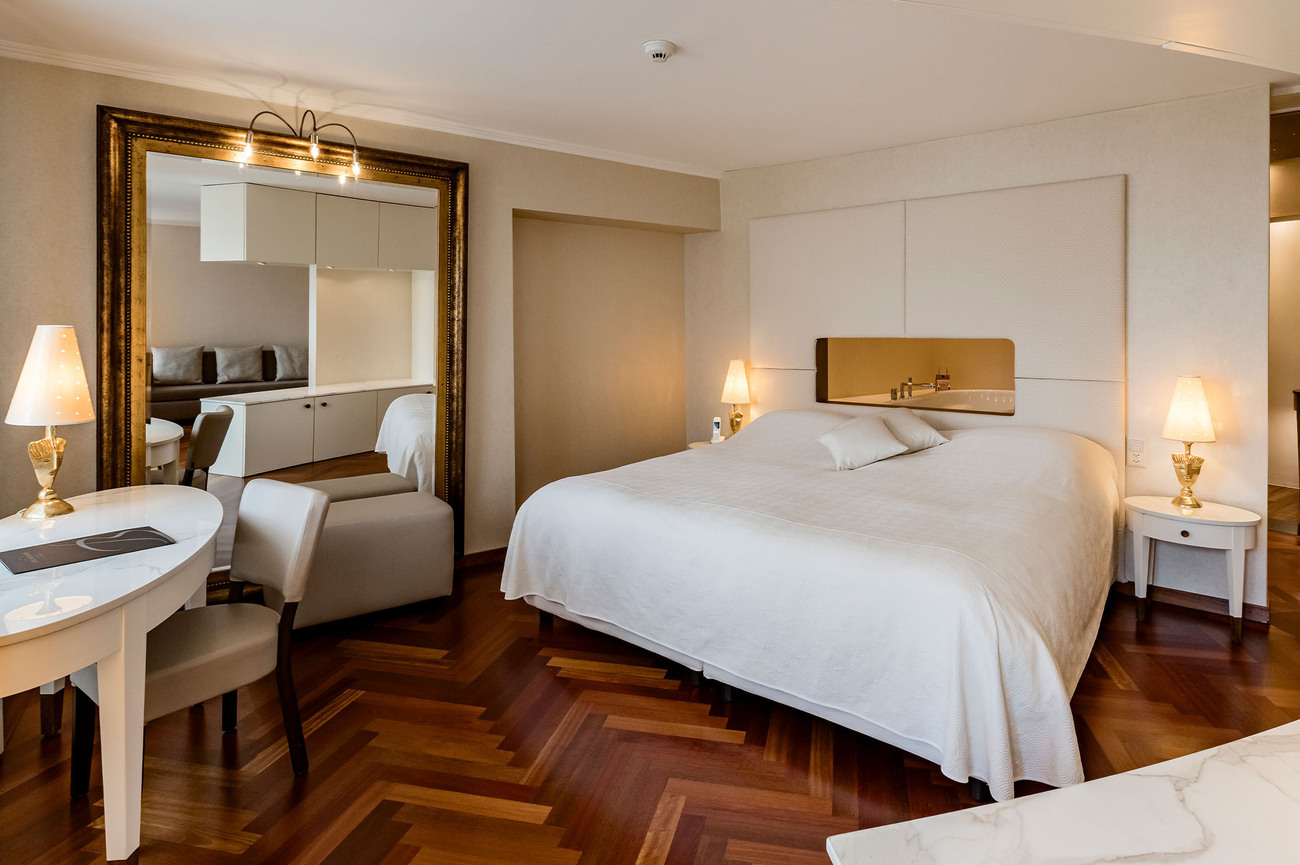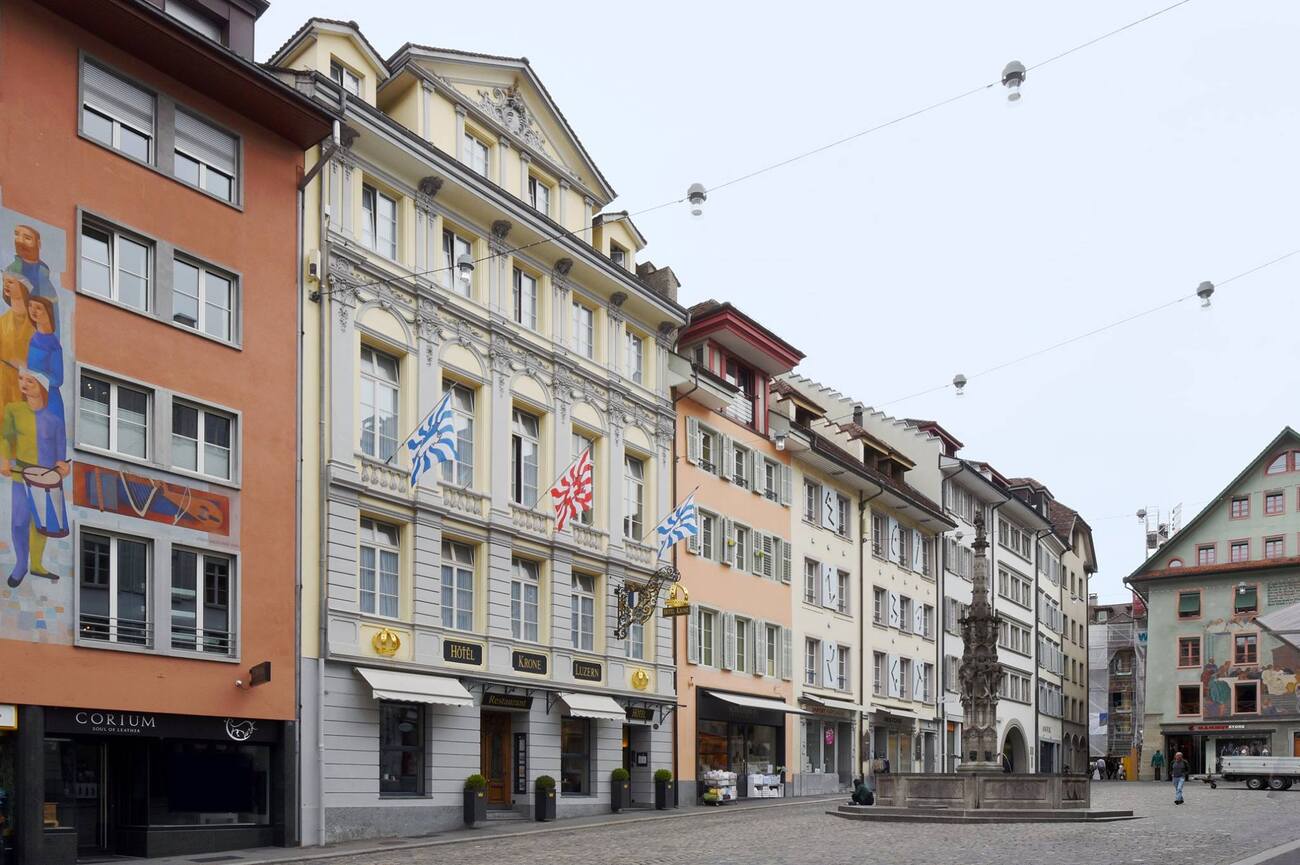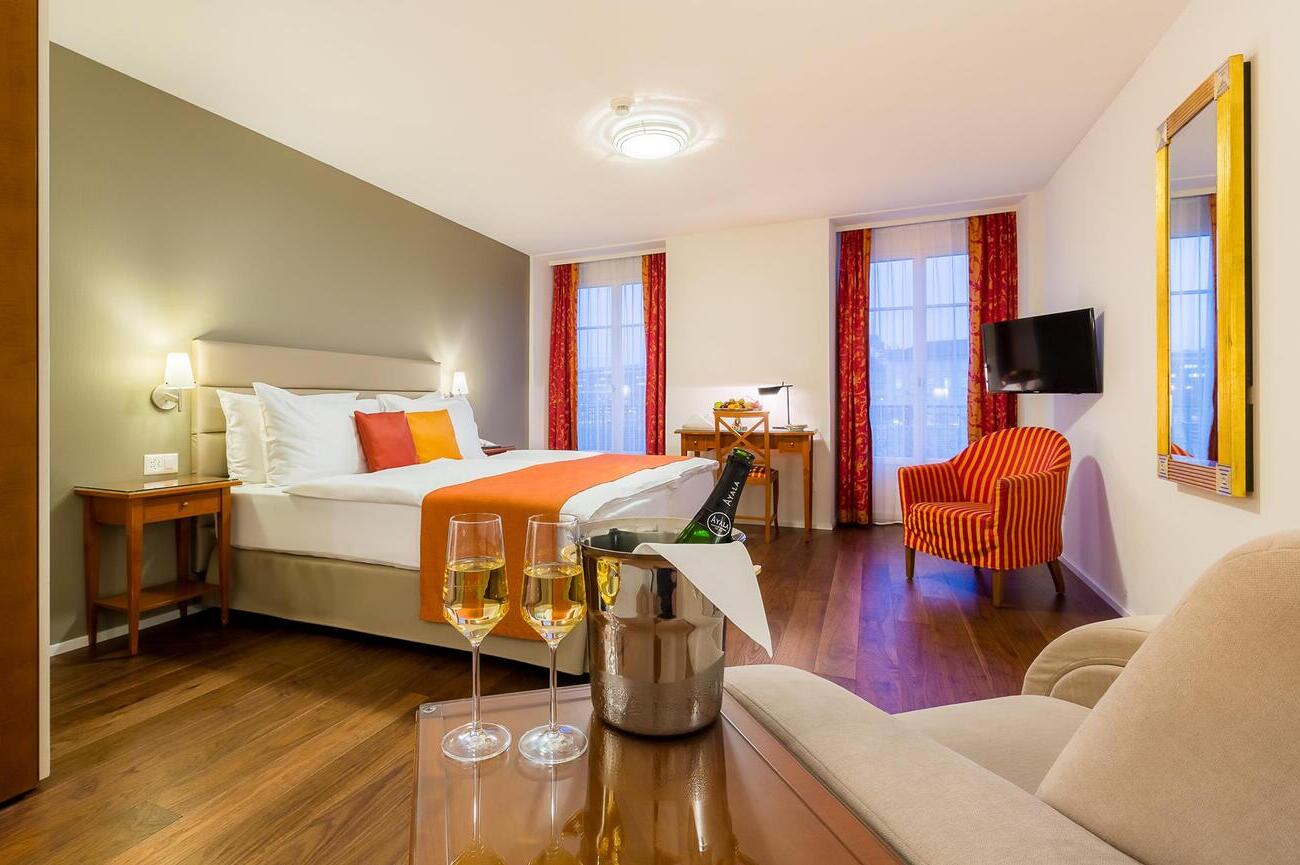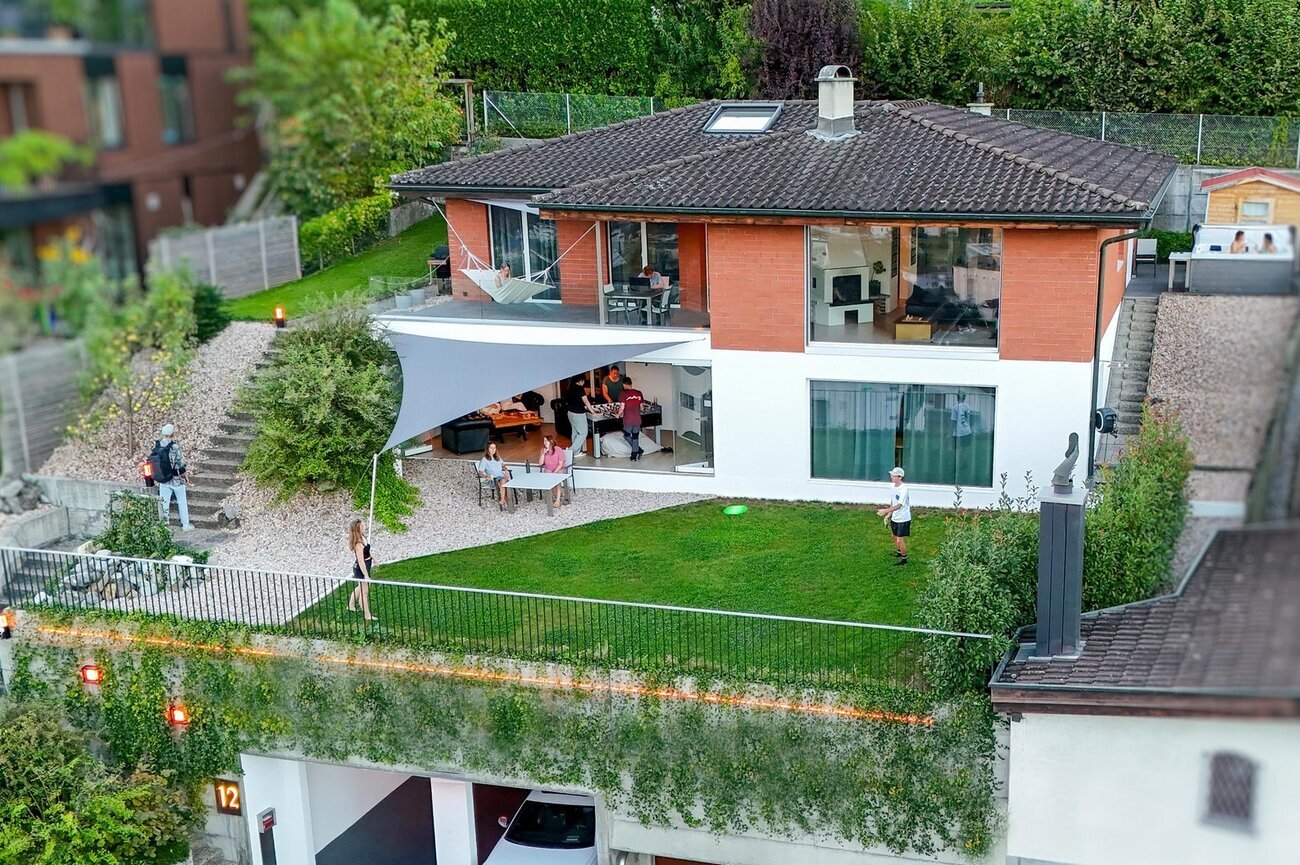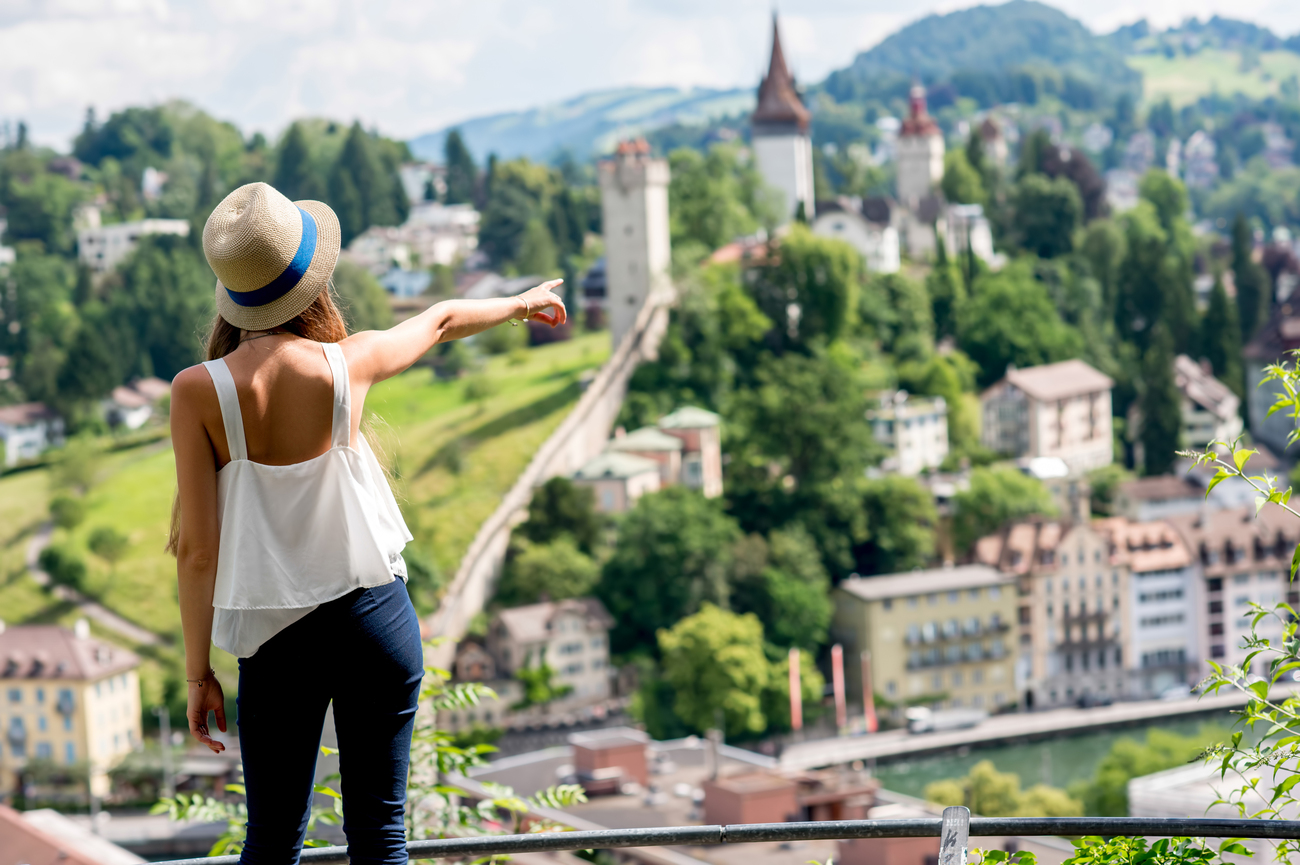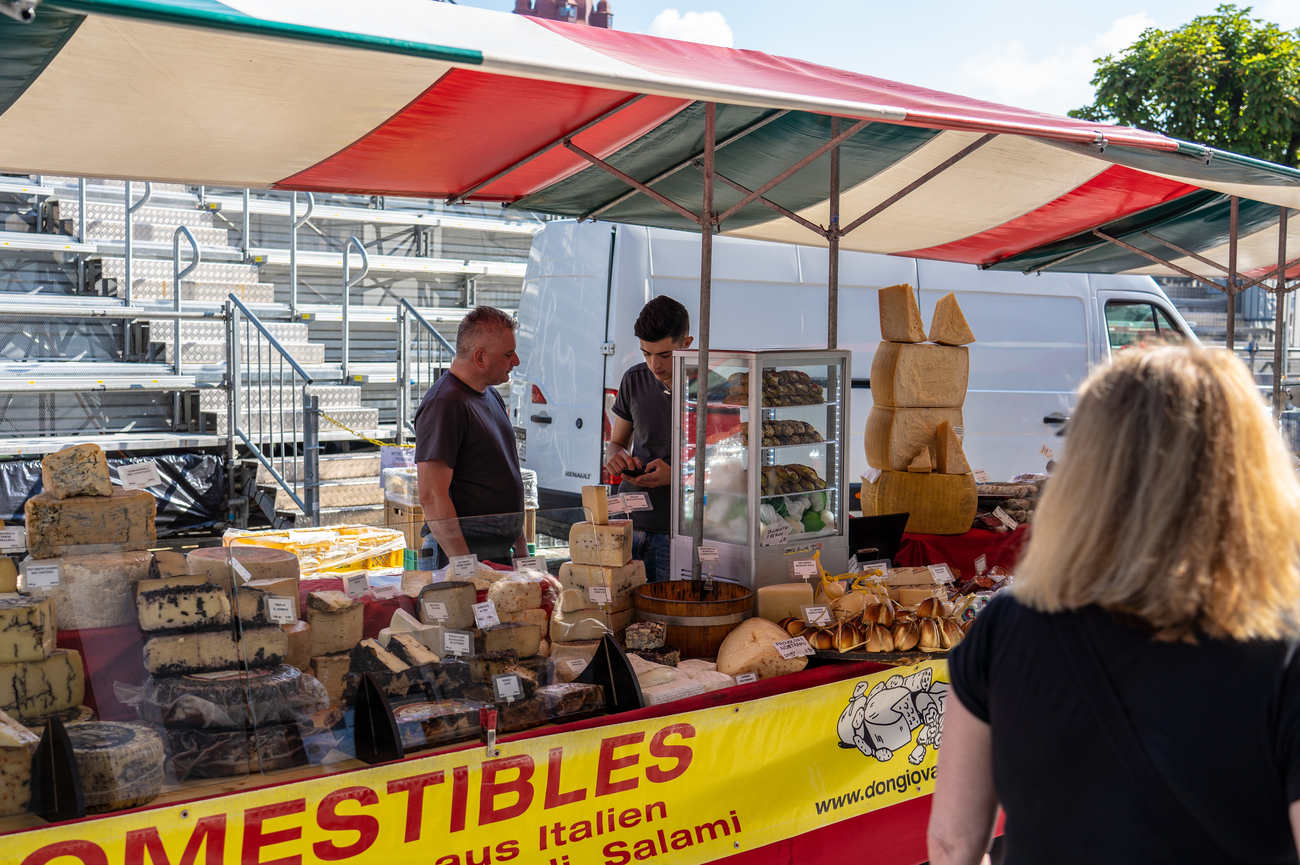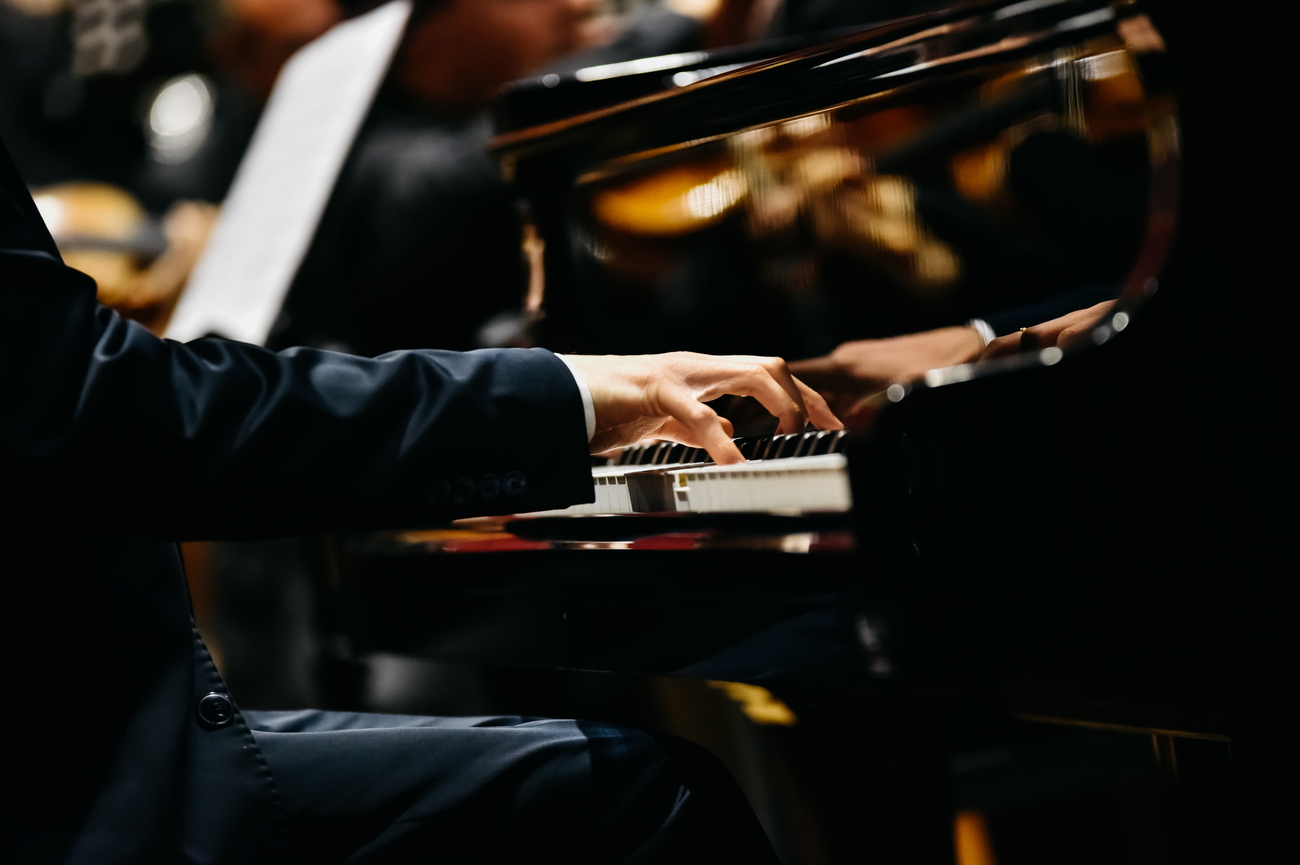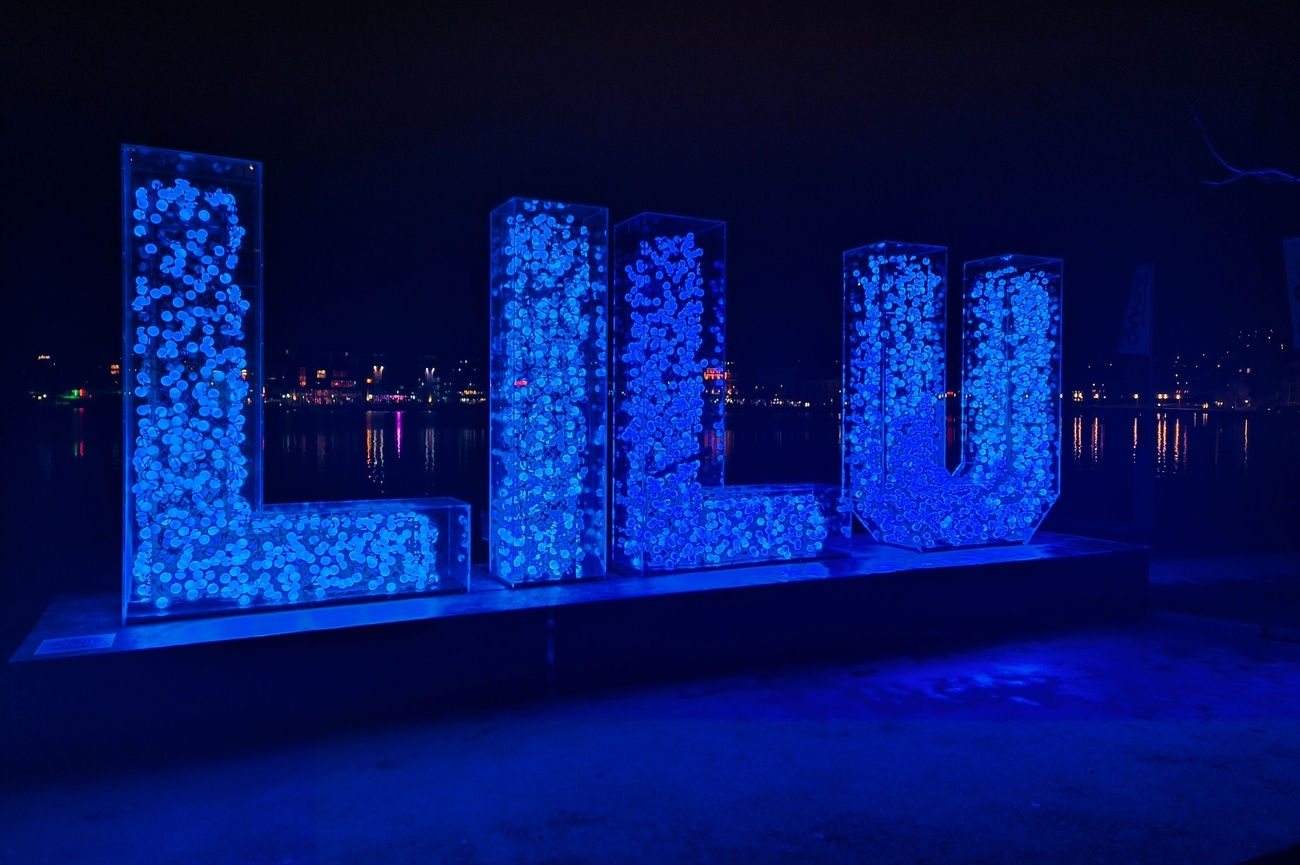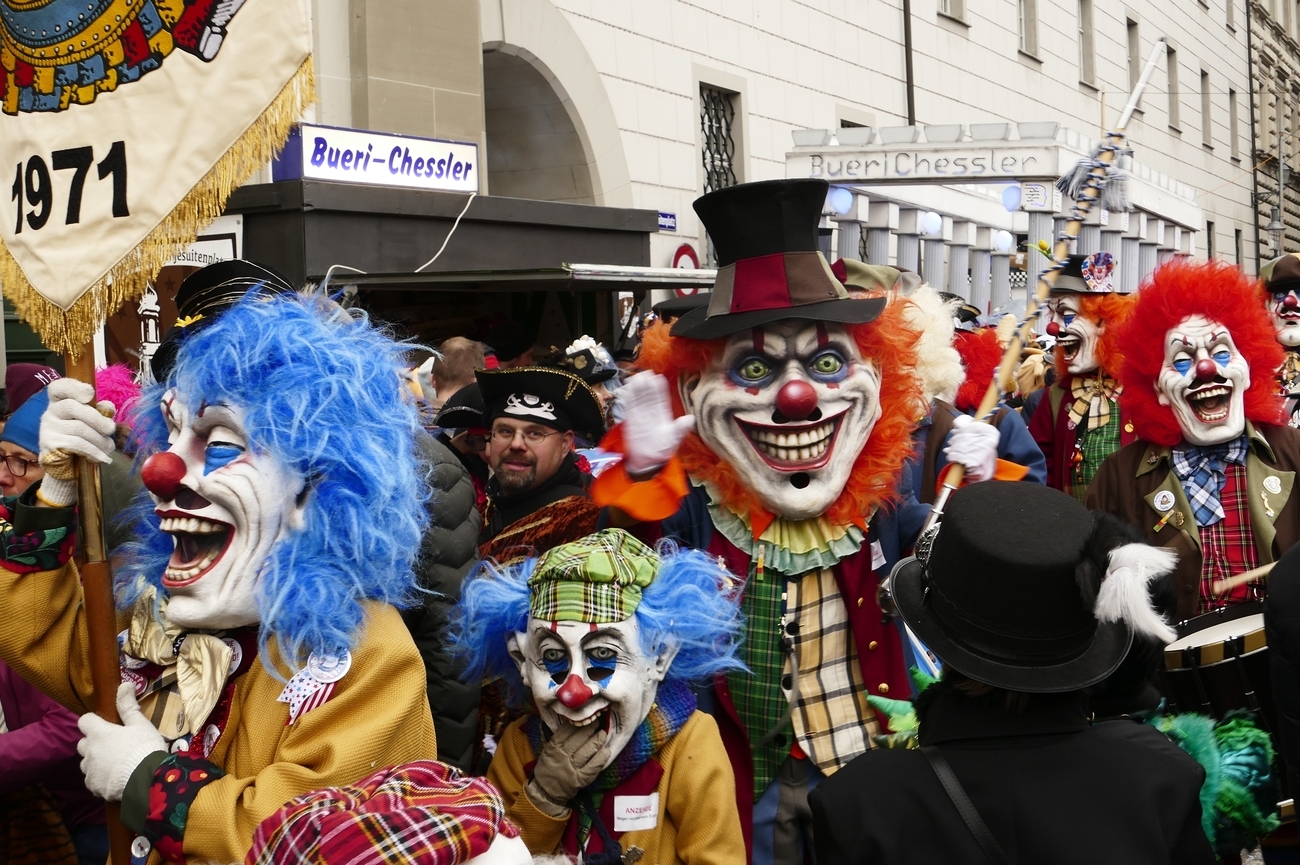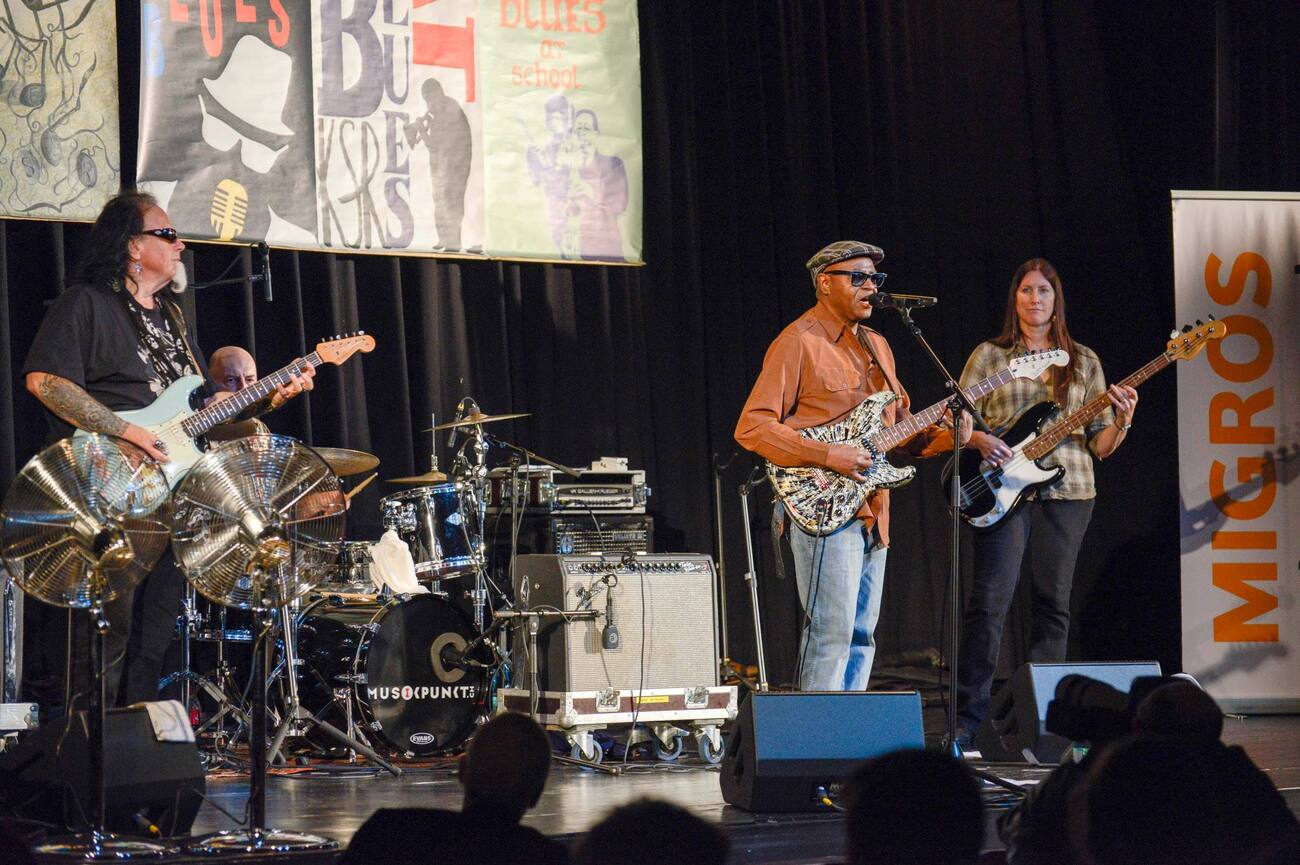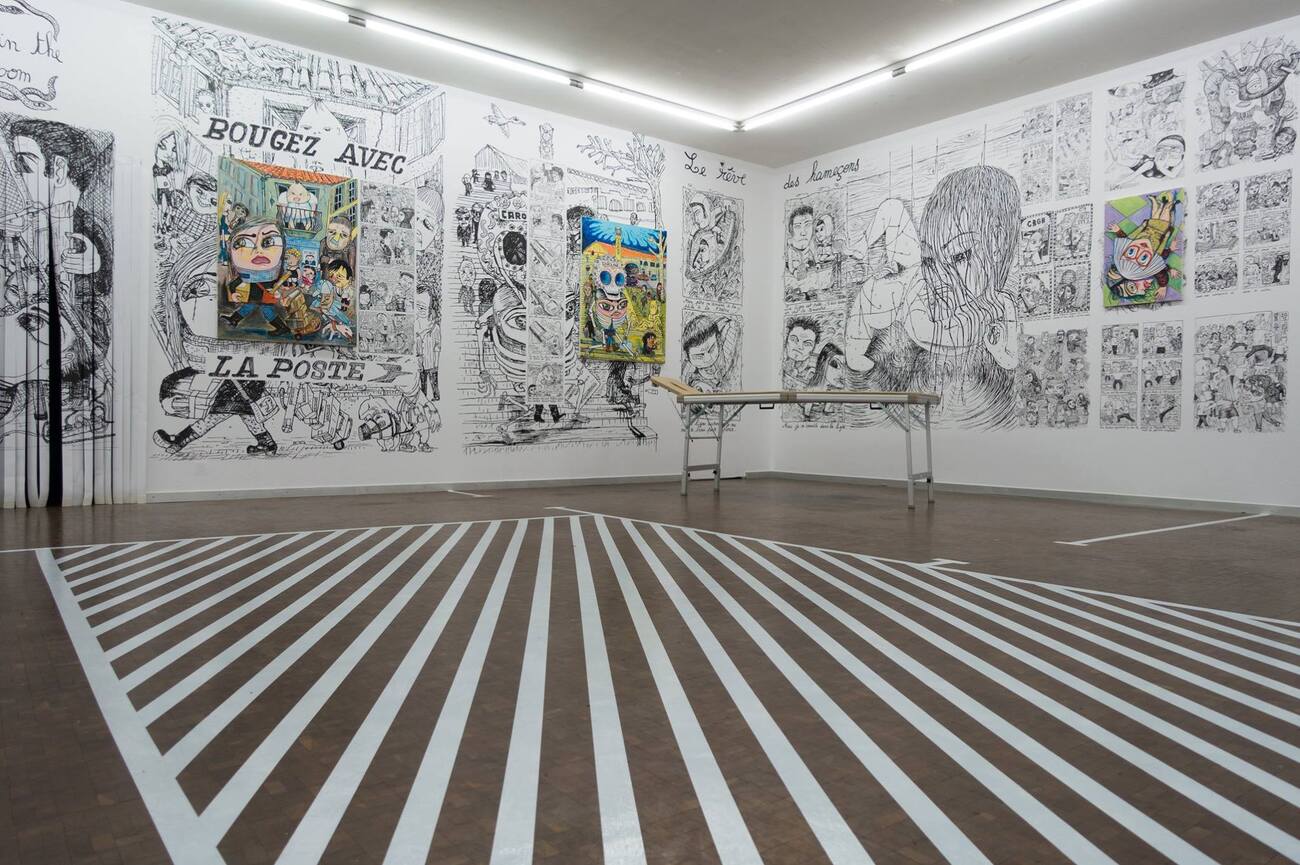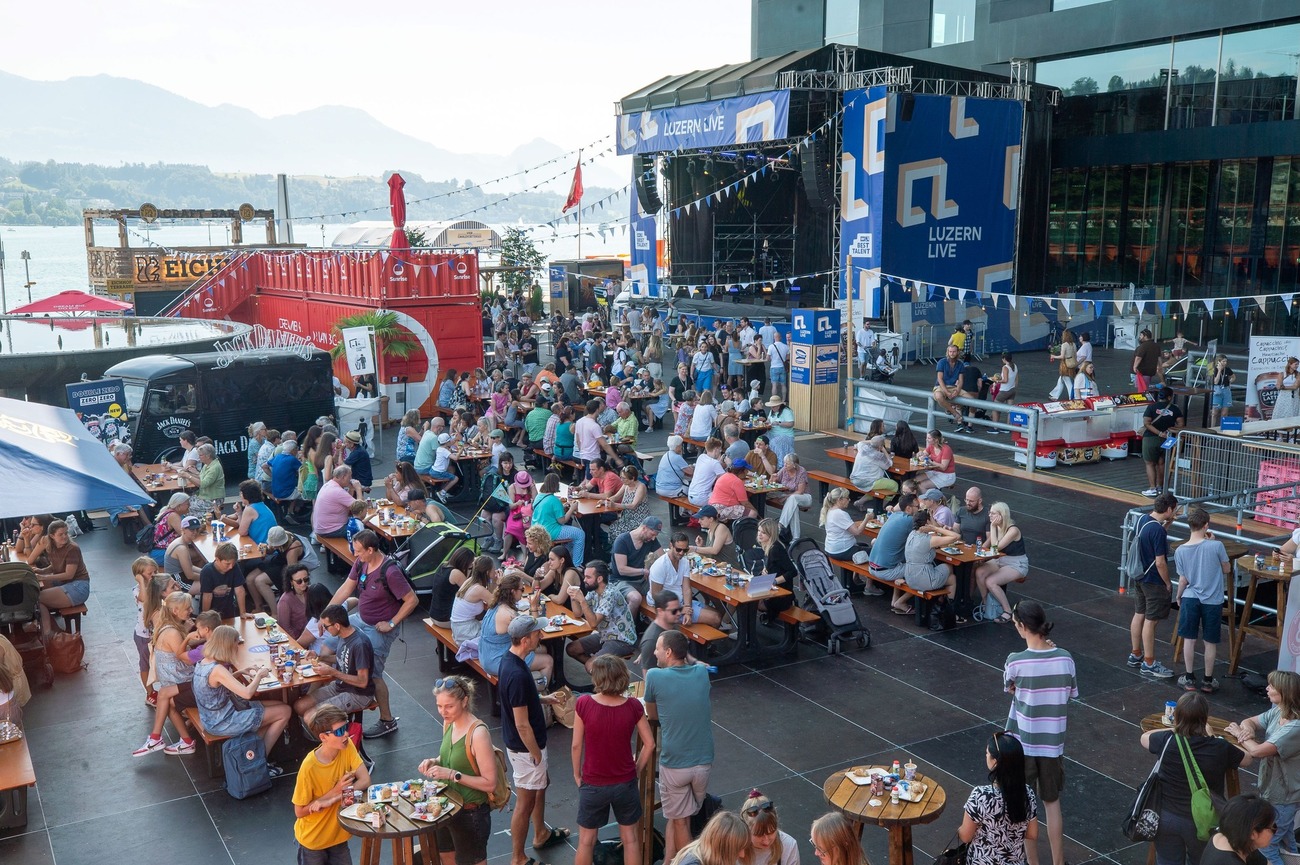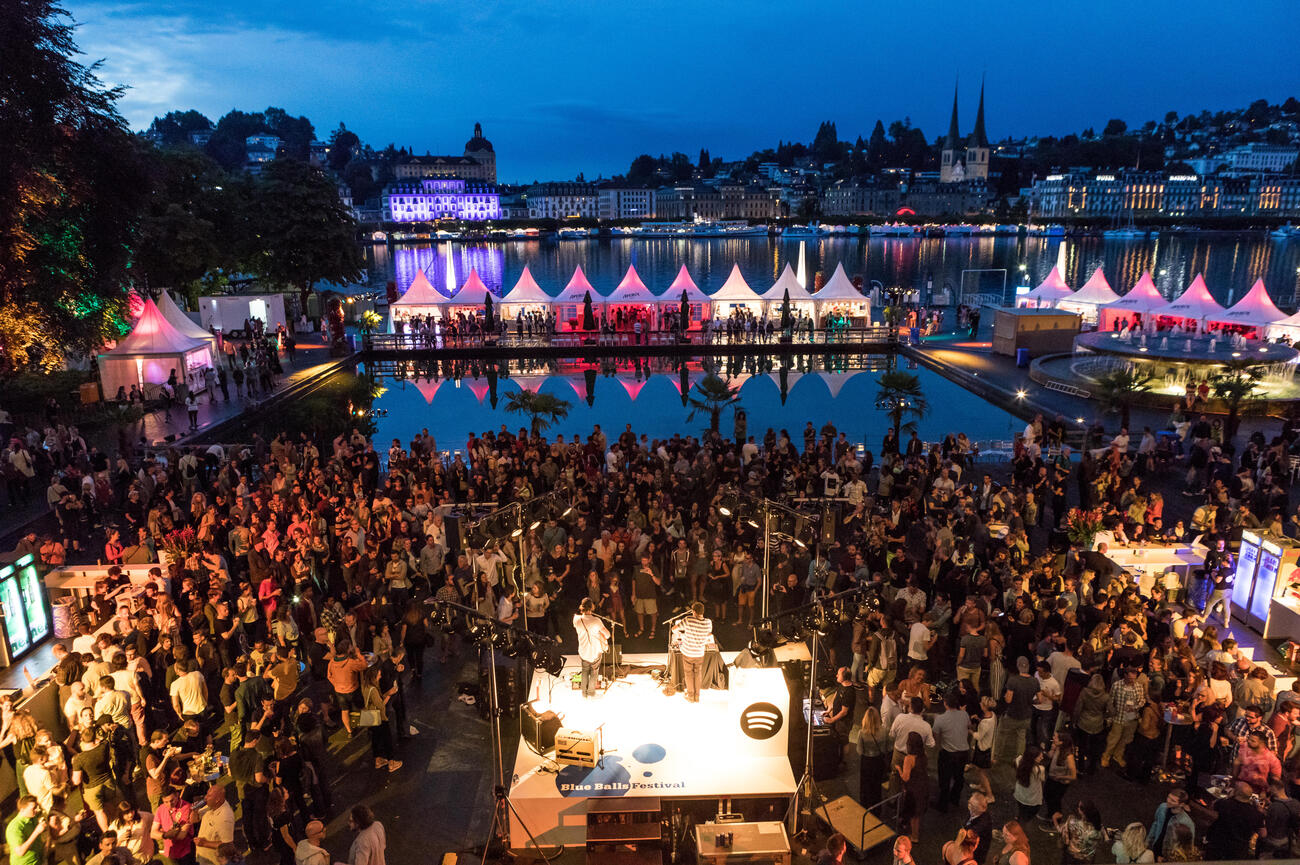Things to Do in Lucerne: 4-Day Itinerary
A walk on a wooden bridge with a view of well-preserved architecture doesn’t sound so bad. But in Lucerne? It feels like stepping onto a movie set. Well, it has been. Lucerne has been the darling of directors, painters, and poets for centuries. Even the great Charlie Chaplin called nearby Corsier home in his later years.
You will truly be stepping back in time as you cross the iconic Chapel Bridge. And just a few steps away, the Lion Monument is a heartbreak carved into stone. Mark Twain once stood here, pen in hand, calling it “the most mournful and moving piece of stone in the world.”
But Lucerne isn’t trapped in the past. It knows exactly how to live in the now. After enjoying the city’s heritage, you will also find yourself walking into the sleek, glass-fronted KKL Luzern. Here, the acoustics are world-class, and the performances are unforgettable. Whether it’s a vintage cogwheel train or a modern cable car, the ride is as much a thrill as the destination.
Lucerne makes it easy to fall in love— again and again. Come see why artists, writers, and dreamers have been coming here for centuries. Join us in our carefully curated 3-day Lucerne itinerary and let the story be yours.
Day 1

Morning:
Old Town
Start your Lucerne adventure where the city’s heart still beats strongest, the Old Town. This is a living gallery. Picture cobblestone streets winding past frescoed buildings, artisan boutiques, and centuries-old guildhalls that once housed the city’s most powerful families. As you stroll past frescoed facades and ornate fountains, you’ll pass centuries-old bakeries just opening their shutters. You’ll get a glimpse of the best of Lucerne on your first day. This is what it means to start your day in style.
Kapellbrücke
From Old Town, Kapellbrücke is just a five-minute walk away. Simply follow the curve of the Reuss River as it glides through the city. You’ll know you’re close when you spot the elegant stone Water Tower rising like a sentinel above the water.
Kapellbrücke isn’t just Lucerne’s most iconic landmark—it’s a piece of art you can walk on. Built in the 14th century, this wooden bridge is the oldest of its kind in Europe and one of the most photographed spots in Switzerland. But what truly sets it apart are the painted triangular panels beneath the roof. Each of it is telling fragments of Lucerne’s history. We have placed it early on the itinerary so that you’ll have the bridge mostly to yourself.
Rathaus
As you step off Kapellbrücke, keep walking along the Reuss River, just a minute or two downstream. Tucked along the waterfront is the Rathaus. This is Lucerne’s proud Renaissance-era Town Hall. You’ll know you’ve arrived when you see its rustic stone base topped with a bold red tiled roof.
The Rathaus was built in the early 1600s as a government building. It has open arcades on the ground floor that once hosted bustling markets and now it still plays host to city events. This area is also dotted with boutique galleries and artisan watch shops. Whether you're an architecture enthusiast or just soaking in the vibe, you’ll enjoy this stop as it offers a glimpse into Lucerne’s culture.
Jesuitenkirche Luzern
Just a five-minute walk from the Rathaus and you’ll spot the unmistakable twin onion domes of Lucerne’s Jesuit Church rising above the skyline. With its soft Baroque curves and pastel façade, it’s like something out of a Rococo daydream.
Step inside, and you’ll be met with a symphony of marble, gold, and light. This was built in the 17th century and it was Switzerland’s first Baroque sacral building. But this isn’t just a church. For classical music lovers, it’s a concert hall in disguise. The Jesuit Church is known for its acoustics, and if you're lucky, you might catch a morning rehearsal by one of Lucerne’s renowned chamber orchestras.
Afternoon: Lucerne Historical Museum
After a quick bite from one of the cafes at the riverside, it’s time to dig deeper into the city’s soul. Just across the Reuss and a short walk from the Jesuit Church, you’ll find the Lucerne Historical Museum. From the outside, it feels like a secret waiting to be uncovered: unassuming, quiet, and nestled along the water’s edge. This museum tells the city’s story with wit, depth, and a touch of drama. You’ll get a feel for how Lucerne evolved from a trade hub to a cultural icon as you walk through medieval weaponry, carnival masks, maps, manuscripts, and portraits of powerful figures.
If you are looking for a more intimate experience, you can book a private tour of the museum. And if you want to explore Swiss heritage in innovative ways, there are also times when the museum hosts rotating exhibits. If your visit lines up with one, it’s worth lingering a little longer.
Natur-Museum Luzern
From the Lucerne Historical Museum, it’s just a short riverside stroll to the Natur-Museum Luzern. Think alpine taxidermy arranged like a scene from a Wes Anderson film. This museum is filled with interactive displays that make geology, biology, and zoology feel cinematic. For those who like their museums with a little more exclusivity, keep an eye out for seasonal exhibitions and behind-the-scenes tours. These private experiences can take you into the museum’s conservation work or show off specimens not displayed to the public.
Lake Lucerne Promenade
A 10-minute walk will take you to the Lake Lucerne Promenade. This stretch along the lake is Lucerne’s front row seat to the Alps. If you’re up for a little soft adventure, the promenade is dotted with private boat rentals and luxury yacht tours. Imagine yourself on a cruise across Lake Lucerne where you can enjoy a loop around the bay as golden light spills across the water. There are also packages available which include having champagne on deck, guided commentary or even onboard tastings of local cheese and chocolate.
Evening: Kornmarkt Square
As the sun dips, go to the Kornmarkt Square. By the time you reach the square, the lanterns are lit. Kornmarkt isn’t just a plaza, it’s a stage where Lucerne’s history and daily life still perform in tandem. The Renaissance-style Town Hall stands proudly at one end while there are guild houses on the other.
Zunfthausrestaurant Pfistern
Just a few steps from the Kornmarkt Square is the Zunfthausrestaurant Pfistern. You’ll recognize it by its beautifully frescoed facade. Once the headquarters of the Bakers’ Guild, today it’s one of the most beloved guild halls turned dining destinations in Lucerne. Inside this, you’ll see vaulted ceilings, wood-paneled walls and candlelit tables. This spot offers private tour packages even include a guided tasting led by a local sommelier. By the time you take your last bite or sip, you won’t just feel full, you’ll feel connected to the city.
Wasserturm
As the evening deepens and the city begins to quiet, take one last, unhurried stroll toward the Wasserturm. This water tower stands proudly beside the iconic Kapellbrücke. You’ve likely passed it earlier in the day, maybe even snapped a photo or two, but now? Now’s the time to really see it. The Water Tower was built around 1300 and it has been many things: a prison, a treasury, and today, an enduring symbol of Lucerne.
If you are looking to end the day on a luxurious note, consider booking a private evening cruise that glides past the Wasserturm. Or maybe you’d prefer to just stand there on the Kapellbrücke. Whichever way you plan to see this, you’ll be reminded that Lucerne does not just live in history books.
Day 1 - Lucerne Tour Map
Day 2

Morning:
Sammlung Rosengart
Start your second day in Lucerne with a slow immersion into its beauty. The Rosengart Collection is a quiet powerhouse of 20th-century art. The museum houses Picasso, Paul Klee, Matisse and Chagall. This is not just an exhibition, it is a curation with love, context, and intimacy.
The museum was founded by Angela Rosengart, daughter of legendary art dealer Siegfried Rosengart. Her father was personally acquainted with Picasso himself and it shows. The museum feels less like a museum and more like a whispered conversation between old friends. The lower floor of the museum is devoted to Picasso’s later works, including drawings, paintings, and intimate photographs of the artist at work.
The museum offers multiple kinds of tours, including public tours and curator’s Sunday tours. And if you want a more luxurious experience, you can book a private tour of the museum. These exclusive tours will allow you to visit the museum outside opening hours. You can also book the museum to have art with aperitifs and receive a welcome drink as you enter the hall.
Helvetiaplatz
Just a few minutes walk from the Rosengart Collection, you’ll find yourself at Helvetiaplatz. This place offers a rare kind of quiet sophistication. This is the place where locals pass on bikes and where you’ll hear the chimes of church bells. There is also a restaurant in the area where you can get a quick Swiss meal.
Richard Wagner Museum
Now it’s time to lean into something a little more poetic. Just a short ride away and you’ll find yourself in the Richard Wagner Museum. Yes, that Wagner. The musical genius and the drama king of operas. This museum is his actual home. From 1866 to 1872, Wagner lived here, wrote here and composed masterpieces like Die Meistersinger and Götterdämmerung. And now, you’ll get to walk through those same rooms. You will be standing in front of his grand piano which was gifted by King Ludwig II.
The museum also offers several kinds of tours. You can join a public guided tour held every Sunday. But if you want something more in-depth, you can book a private group tour available in English, French, or German. And for the true aficionado? There’s a curator-led tour every Tuesday and an ultra-exclusive Director’s Tour on the first Wednesday of each month. That’s right the museum’s own director, Dr. Sven Friedrich, personally walks you through Wagner’s story after hours.
Old Swiss House
But this place is more than just a restaurant, it’s practically a time capsule. The Old Swiss House is an iconic chalet-style building that has been serving up classic Swiss hospitality since 1858. Step inside and you're greeted with wood-paneled walls, stained-glass windows, and a sense of elegance that feels both old-world and timeless. The place is known for its world-famous Wiener schnitzel. You can pair it with a local Lucerne white wine.
Glacier Garden
After that unforgettable lunch, it’s time to visit one of Lucerne’s most fascinating natural wonders: the Glacier Garden. This place is a geologist’s dream. Imagine standing on ground that was once part of a tropical beach, only to be carved by glaciers during the Ice Age. There are also giant glacial potholes that you’ll see here and they’re not replicas. They’re the real deal. Step inside the museum and you'll discover fossilized palm leaves, seashells, and detailed exhibits that explain Lucerne’s ancient history. But the highlight? The Mirror Maze. You’ll laugh, maybe get a little lost, and definitely take some cool photos.
Lion Monument
Just steps away from the Glacier Garden is the Lion Monument. This is carved directly into a sandstone cliff. It honors the Swiss Guards who lost their lives during the French Revolution. This isn't just a monument, it’s a story frozen in stone. And whether you stay for five minutes or fifteen, the moment tends to linger with you longer than expected.
Bourbaki Panorama
Experience a different kind of drama in the Bourbaki Panorama. This isn't your typical museum experience. It's an immersive, 360-degree time capsule.
The Buorbaki Panorama is a massive cylindrical painting housed inside a circular rotunda. It depicts the moment in 1871 when 87,000 French soldiers from the Bourbaki army crossed into neutral Switzerland during the Franco-Prussian War. It was one of the earliest large-scale acts of humanitarian relief in modern history. The level of detail is mind-blowing and the transitions from painted elements to real props on the floor blur the line between artwork and reality.
The Bourbaki Panorama offers a variety of guided tours. You can book a private tour that walks you through the emotional winter of 1871. You can also try the "National Identities" tour. In just 75 minutes, you’ll connect the dots between the Bourbaki Panorama and the nearby Lion Monument.
Evening: Schwanenplatz
It’s time to wander over to Schwanenplatz. This is the place for luxury shopping in Lucerne. You’ll find the world’s most coveted Swiss watch brands here—think Bucherer, Rolex, and Carl F. Bucherer. But there’s more than just sparkle here. Look up, and you’ll see the elegant facades of historic buildings. Look out, and there's Lake Lucerne shimmering right beside you.
KKL Luzern Concert Hall
To end your day on a breathtaking note—both literally and figuratively—make your way to the KKL Luzern (Culture and Congress Centre Lucerne). This is designed by none other than Jean Nouvel. Whether you’ve booked tickets to a classical performance by the Lucerne Symphony Orchestra, an international jazz set, or a cutting-edge multimedia concert, the acoustics in the main hall are world-renowned. We're talking “hear-a-pin-drop” perfection. Even if you’re not catching a show, it’s worth popping in to admire the ultra-modern interiors.
Day 2 - Lucerne Tour Map
Day 3

Morning: Hofkirche St. Leodegar
Day 3 begins with a dose of awe at Hofkirche St. Leodegar. This is Lucerne’s most important church and one of the city's oldest landmarks. The church was built in the 17th century on the remains of a Roman basilica, the Hofkirche. Its architecture is a blend of late Renaissance and Gothic architecture. And if you’re looking for a more immersive experience, there are private historical tours that you can join. You’ll hear about the patron saints, the architectural transitions, and even a few stories that never made it into the guidebooks.
Kurplatz
A 3-minute walk from Hofkirche St. Leodegar will take you to Kurplatz. This open square is nestled between the lake and Lucerne’s grand hotels and it is one of the most photogenic pauses in the city. On sunny days, locals and travelers alike lounge by the promenade.
Inseli Park
Let’s take a moment to pause and breathe in the beauty of nature, shall we? From Kurplatz, a short 10-minute stroll will lead you to Inseli Park. This “Little Island Park” is located on a small peninsula stretching out into Lake Lucerne. The park features expansive lawns, beautiful flowerbeds, and shady spots to relax under mature trees. A great spot for all ages, Inseli Park also has a well-maintained playground for children, ensuring families have a place to relax and enjoy the outdoors together.
Afternoon: Swiss Museum of Transport
Step into the future of travel at the Swiss Museum of Transport. From the moment you walk in, you’ll find yourself surrounded by the wonders of aviation, railways, automobiles, and space exploration. Imagine stepping inside a life-size replica of a 1920s locomotive, feeling the power of a vintage car’s engine, or flying through the sky in a state-of-the-art flight simulator. The museum’s Planetarium also offers another spectacular highlight. There you can gaze up at the stars and journey through the cosmos in a way that’s as educational as it is awe-inspiring.
To enhance your experience, you can join guided tours. You can choose from a range of themes, such as “Exciting Railway Stories,” “Fake News or Good Story,” and “Switzerland in the Air!” Each tour is available in German, French, Italian, and English, and you can opt for either a 60- or 90-minute experience. For those looking for a more personalized experience, private tours and special interest tours are also available.
Hans Erni Museum
Another short walk will take you to the museum that serves as a celebration of the life and work of Hans Erni. The Hans Erni Museum is tucked inside the Swiss Museum of Transport. As you step inside, you’ll witness Erni’s journey from graphic designer to international icon on full display. There are over 300 pieces ranging from his early works to more modern expressions.
Lake Lucerne
From the Hans Erni Museum, it’s just a short walk to the shores of Lake Lucerne. This body of water is surrounded by towering mountains, including Mount Pilatus, Mount Rigi, and the Bürgenstock. As you wander along the promenade or take a boat ride, you’ll discover secluded bays.
If you're looking for adventure, the lake offers plenty of options. You can go kayaking, paddleboarding, or even take a dip. And for those who prefer to stay dry, a cruise around the lake is a perfect way to see the surrounding mountains and villages.
Evening: Chateau Gütsch
Located high above Lucerne, Chateau Gütsch offers a perspective of the city like no other. It was built in the late 19th century by the Swiss architect Rudolf A. W. Schindler. It was originally designed as a private residence for a wealthy industrialist. But in the early 20th century, the castle was converted into a hotel and quickly became a favorite among travelers.
Picture this: a fairy-tale castle perched on a hill, offering sweeping views of the lake and the surrounding mountains. Once you reach the top, the world below is yours to admire.
Gütschwald Forest Path
After soaking in the regal charm of Château Gütsch, it’s time to immerse yourself in the natural beauty that surrounds it. Just a short walk from the castle, you'll find the serene Gütschwald Forest Path. The forest is dotted with small streams and the occasional bench. For those with a bit more time and energy, continue along the path to experience even more of the surrounding nature. This is the ideal way to conclude your day, grounding you in the natural beauty that surrounds Lucerne.
Mühlenplatz
The perfect way to end your day in Lucerne is in Mühlenplatz. This lively square exudes old-world charm with its cobbled streets and historic buildings. It is surrounded by quaint shops, cafes, and traditional Swiss architecture, giving you a taste of the local culture and vibe. The square comes alive in the evening with its welcoming atmosphere. End your day with a cup of coffee from one of the cozy cafes in the area or simply soak in the sights.
Day 3 - Lucerne Tour Map
Day 4

Morning:
Spreuerbrücke
Let’s kick off Day 4 with a bridge that’s more than just a way to cross the Reuss River. The Spreuerbrücke is Lucerne’s darker, more mysterious sibling to the famous Kapellbrücke. It’s named Spreuer—chaff because only this bridge allowed the dumping of chaff and waste into the river.
Built in the 13th century and rebuilt in the 1560s after a flood, the Spreuerbrücke is a medieval wooden footbridge that stands out thanks to a hauntingly beautiful series of 17th-century paintings known as the “Dance of Death” or Totentanz. This bridge is more than just a photo op, as you cross, you are welcomed with a conversation with history and with art.
Musegg Wall & Towers
Just a short walk uphill leads us to one of Lucerne’s most iconic guardians: the Musegg Wall & Towers. The Musegg Wall is a 900-meter-long stretch of history. It boasts nine towers and four of them are open to the public. You can climb the Zyt Tower and meet the oldest city clock. It’s earned the honor of chiming one minute before every other clock in Lucerne. The towers have quirky names like Männli, Wacht, and Schirm. These towers once served as watch posts, granaries, and guardhouses. You can join a 3-hour walking tour to explore local attractions including the Musegg Wall & Towers.
For a touch of luxury, you can book a private walking tour that includes the wall. Some guides offer early-access climbs and others pair it with a tasting of Lucerne’s best local delicacies.
Afternoon: Zunfthaus zu Pfistern
Near the Reuss River, you’ll find a centuries-old guild hall called Zunfthaus. This was once the meeting place of the city’s bakers and millers. As you step inside, you’ll be greeted by cozy wooden interiors, creaky floorboards, and hearty Swiss aromas. Eat in a living museum and try out their Rosti, bratwurst or stew.
Nadelwehr
Nadelwehr, the place where engineering meets poetry. The Water Spikes might just look like a wooden fence in the water. But pause here for a moment. What you’re seeing is one of Lucerne’s quietest yet most brilliant landmarks.
The Nadelwehr was built in the 19th century as a needle dam. It is one of the last of its kind still in operation in Europe. Its secret? A series of slender wooden slats, called “needles”, are manually inserted or removed to regulate the water level of Lake Lucerne.
Weinmarkt Fountain
Now a short stroll from the Water Spikes, you’ll find yourself standing in front of the Weinmarkt Fountain. This fountain is the birthplace of Lucerne’s political soul. This is the spot where the city’s first council took the oath in 1332, formally joining the Swiss Confederation.
This colorfully painted Renaissance-style fountain is crowned with a proud standard-bearer hoisting Lucerne’s coat of arms. As you visit this place, you will be surrounded by medieval guild houses. You can also join city walk tours if you decide to visit this fountain together with other historical spots in town.
Furrengasse
A 15-minute walk from the Weinmarkt Fountain will take you to the storybook charm of Furrengasse. It is one of Lucerne’s most exclusive residential areas. Here, you’ll find grand villas and historic mansions, many dating back to the 19th century when Lucerne blossomed into a luxury destination for European aristocracy. Many of the buildings along Furrengasse are architectural gems too. Some have been converted into embassies, luxury residences, or high-end boutique hotels. Not only will you get the perfect photo for the Gram but you will also get a bit of history.
Evening: Hirschenplatz
As twilight drapes Lucerne, make your way to Hirschenplatz. This is one of the town’s most beloved and bustling squares. Hirschenplatz is named after the “Hirschen” (deer) inn that once stood here. This inn served as a gathering spot for locals and travelers alike since the Middle Ages. Now, the square is framed by beautifully preserved medieval buildings with frescoed facades that almost look like storybooks come to life. Whether you stop here for a glass of wine, a souvenir hunt, or just a quiet moment on a bench, Hirschenplatz wraps up your day with a heartbeat of the city that’s as authentic as it gets.
Gütsch Viewpoint
And finally, what better way to bid Lucerne farewell than from the Gütsch Viewpoint? Just a few minutes’ walk uphill from Hirschenplatz (or a quick ride if your legs are ready to retire), this spot will reward you with sweeping views of the Reuss River, Old Town and even Lake Lucerne. This viewpoint has long been a favorite of poets, painters, and romantics alike. This place will mark the final chapter in a storybook city.
Day 4 - Lucerne Tour Map
Other Things to Do in Lucerne
You’ve walked the Kapellbrücke, admired the Lion Monument, and cruised across Lake Lucerne, but believe us when we say: the city still has layers waiting to be unwrapped. If you’re craving more beauty, more history and more Lucerne, here’s a list of must-visit places that add extra sparkle to your itinerary.
- Mount Pilatus: Just a short journey from the city lies one of Lucerne’s most legendary sights: Mount Pilatus. Rising dramatically above the lake, this craggy peak has inspired centuries of myths—tales of dragons, ghosts, and ancient rulers. Today, it offers a different kind of magic. Whether you choose the world’s steepest cogwheel railway from Alpnachstad or the sweeping aerial cableway from Kriens, the ride up is as breathtaking as the summit itself. At the top, you’ll find sweeping views over Lake Lucerne, rolling Alpine ridges, and even glimpses of the Black Forest on a clear day.
- Meggenhorn Castle looks like it stepped out of a dream. This 19th-century Neo-Gothic estate is surrounded by perfectly manicured gardens, a tiny vineyard, and sweeping views of the lake backed by mountain silhouettes. You can walk the winding paths to the little chapel on the grounds and even spot a few deer in the distance.
- Franziskanerkirche: How to know you’re already in Franziskanerkirche. Silence, that’s your cue. Built in the 13th century by the Franciscan order, this church is steeped in Gothic drama. As you step inside, you’ll be in awe of its wooden ceiling that has been ornately carved and darkened with age.
- Neubad: Imagine an empty swimming pool filled not with water, but with poetry, art installations, and espresso-drinking locals. That’s Neubad. One week it’s a photography exhibit. Next, a jazz concert. The drained pool basin itself often hosts cinema nights or wild experimental theatre. There is also a cafe upstairs.
- Ufschötti Park: Oof-sho-tee. That’s a mouthful right there. This lakeside park may have an odd name, but it’s the ultimate chill zone. This place will make you feel one with the locals. People bring guitars, snacks, paddleboards, and sometimes their entire extended families.
- Peterskapelle is the city’s oldest Catholic church. This might be easy to miss if you’re not looking. As you step inside, you’ll be entering another world: cool stone walls, flickering votive candles, and a sense of history. This place is a tangible link to Lucerne’s spiritual and architectural evolution.
- Voralpen-Express: Hop on the Voralpen-Express in Lucerne and let it whisk you away to St. Gallen in just about two and a half hours. It’s a journey that feels unhurried and deeply Swiss, perfect for travelers who want to savor the scenery as much as the destination. By the time you arrive in St. Gallen, you’ll already feel like you’ve taken a book tour through the heart of the countryside.
Day Trips from Lucerne
Let’s be honest, Lucerne is gorgeous. But here’s the thing, Switzerland is compact and there are also other cities worth dropping by. Just grab your camera and hop on a train or a car. These are our favorite day trips, each one a short ride away. You don’t need to repack your bags.
- Mount Rigi: Half an hour from Lucerne and you’ll find yourself in Mount Rigi. This place is known as the “Queen of the Mountains” and it truly lives up to its name. You can start this day trip by riding a boat cruise across Lake Lucerne, then riding the historic cogwheel railway to the summit. At the top, the Rigi Kaltbad Mineral Baths & Spa invites you to soak in warm, mineral-rich waters while the Alps unfold before your eyes.
- Engelberg: Just 45 minutes away from Lucerne is a gateway to high-altitude luxury. Once you’re there, you can ride the world’s first revolving cable car, the Titlis Rotor. You can also brave Europe’s highest suspension bridge, the Titlis Cliff Walk, to experience adrenaline with a view. And if that’s not enough thrill, you can join private glacier excursions and snowshoeing tours which are available year-round.
- Bern: Only an hour away and you’ll discover a city where UNESCO-listed history meets modern elegance. Book a private walking tour of Bern’s Old Town, where medieval towers hide artisan boutiques and rooftop views. You can also book a private walking tour or perhaps visit a chocolate workshop. And if you didn’t get enough of Paul Klee’s art in Sammlung Rosengart, then you can also drop by Zentrum Paul Klee.
- Zurich: And if you want a trip in Zurich’s luxury scene, go on a trip to Zurich. You can start your day with shopping on the Bahnhofstrasse, home to boutiques like Hermès, Chanel, and Breguet. Art lovers can also take private tours through the Kunsthaus Zurich or the Museum für Design. And meals could also be a luxurious experience too if you choose to dine at the Restaurant at The Dolder Grand, a two-Michelin-starred dining experience perched on a hilltop.
- Ballenberg: This is where Swiss tradition meets luxury. Just over an hour from Lucerne, this open-air heritage museum sprawls across meadows and forests near Interlaken. Elevate the experience with a private horse-drawn carriage ride through the grounds.
- Abbey of Saint Gall: A two-hour drive from Lucerne brings you to one of Europe’s most captivating treasures: the Abbey of Saint Gall. This UNESCO World Heritage Site is a baroque masterpiece. During your visit, you can explore the ornate Rococo library which is home to 1,200-year-old manuscripts. Aside from visiting this monastery, you can also join a textile tour in St. Gallen. You can book a private visit to the Textile Museum, where vintage haute couture pieces and intricate needlework are displayed like art.
- Lavaux Vineyard Terraces: This is a wine lover’s dream, only two hours away from Lucerne. Imagine sipping world-class Chasselas in the same vineyards once praised by Voltaire. You can book a private tour in century-old estates where you can also enjoy a tasting session with a view.
- La Chaux-de-Fonds: Another UNESCO World Heritage Site awaits you just 2.5 hours away. This is the birthplace of Le Corbusier, the pioneer of modern architecture, and a city built with such precision and planning that it feels like walking through a living blueprint. You can also visit his first residential design, the Maison Blanche. Unlike other Swiss towns, La Chaux-de-Fonds was designed with watchmaking in mind—broad avenues and grid-like streets. And there’s no other way to enjoy this place other than to book a private tour of the International Watchmaking Museum.
Things to Do with Kids in Lucerne
Let’s face it, family travel can be magical… or mildly chaotic. But in Lucerne? It’s pure magic. Here’s a list of stops you can visit, whether your kids dream of knights and dragons or love anything that moves.
- Mirror Maze: Step into a kaleidoscope of fun right beside the famous Lion Monument. The Mirror Maze is a timeless hit for kids and grown-ups alike. Imagine 450 mirrors and just enough confusion to get everyone laughing. It’s like a magic trick you walk through.
- Gütschbahn Funicular: All aboard the mini mountain railway! This charming funicular whisks families up to the hilltop Gütsch area in just a few minutes. Despite a short ride, you will be rewarded with a panoramic view of Lucerne.
- Lido Beach: Yes, Lucerne has a beach! Lido is the city’s ultimate summer playground. The spot is complete with kid-friendly swimming zones, waterslides, and shaded picnic spots. And while the little ones splash around in Lake Lucerne, parents can enjoy the nearby cafes.
- Verkehrshaus Park & Outdoor Playground: After zooming through the Swiss Museum of Transport, don’t miss the action-packed outdoor zone. There are mini cranes, climbing structures, and water features. This playground feels like a construction site made for fun.
- Dreilindenpark: Dreilindenpark is a park with postcard views. This spot gives you front-row seats to Mount Pilatus and Lake Lucerne. The kids can run through the open fields and explore the installations while you enjoy the alpine air.
- Tierpark Goldau is a wildlife park set in a lush, mountainous landscape, just 40 minutes by train from Lucerne. It’s a place where kids can roam freely among deer and wild boar in spacious enclosures, while you stroll shaded paths framed by forest and rock. From lynx to bears, the animals live in settings that feel close to nature - perfect for a peaceful family outing beyond the city.
Ski Spots in Lucerne
Lucerne may not have skip slopes but don’t let that fool you. This lakeside city is surrounded by some of Switzerland’s most scenic and accessible winter playgrounds. A short ride will take you to beginner-friendly slopes and high-altitude glaciers perfect for thrill-seekers. You can think of Lucerne as an elegant basecamp before you set off to your snow-filled adventures.
- Engelberg Titlis: A 45-minute trip will take you to a place where things get serious. Engelberg is the largest ski resort in Central Switzerland, with over 80 km of runs and some of the most reliable snow in the region. Titlis Glacier guarantees skiing from October to May. This spot is ideal for intermediate and expert skiers, but beginners are welcome too.
- Klewenalp-Stockhütte: A cable car from Beckenried takes you straight into a winter dream. Klewenalp is a hidden gem—less crowded, incredibly scenic, and perfect for families. There’s sledding, snowshoeing, and après-ski spots with open terraces that make you want to stay until sundown.
- Sorenberg: An hour and 15 minutes away from Lucerne and you’ll find yourself in what feels like a secret escape. It offers gentle slopes for beginners and a handful of tougher runs for those chasing speed. This spot is less flashy and more heartwarming.
- Stoos: Take the steepest funicular in the world to reach this peaceful mountaintop village. Stoos is compact but mighty, with 35 km of ski runs and jaw-dropping views of the Fronalpstock ridge. This place is also car-free so you’ll get to enjoy the pure mountain air.
- Andermatt: Just under an hour and 15 minutes from Lucerne, Andermatt is Switzerland’s most ambitious ski resort revival. Once a sleepy military town, it’s been transformed through a billion-dollar investment into a luxury alpine destination. Today, you’ll find high-end chalets, sleek five-star hotels, elite ski schools, and Switzerland’s largest ski area linked via the Andermatt-Sedrun-Disentis connection. The vision? A world-class resort that rivals St. Moritz or Verbier — but with a modern, sustainable twist.
Golf Courses in Lucerne
Lucerne may not be a golf capital in itself, but it’s got a secret: within an hour’s drive, you’ll find some of the most picturesque and refined golf courses in Central Switzerland. Here’s a list of where to tee off in style near the city:
- Lucerne Golf Club: The only golf club in Lucerne and the third oldest golf club in Switzerland, this members-only club occasionally welcomes guests through select partnerships and events. Its parkland-style course is immaculate and serene. There is also an elegant clubhouse where you can get drinks.
- Golf Meggen: If you're short on time but still want to tee off in an unforgettable setting, this 9-hole executive course is where you go. While you’re making a swing, you’ll also get a view of Lake Lucerne. It’s a peaceful and beautifully maintained course that’s ideal for practicing your short game or introducing a friend to the sport.
- Golf Sempachersee: This is Switzerland’s largest golf resort and it doesn’t disappoint. Just a 25-minute trip will take you to two 18-hole championship courses, “Woodside” and “Lakeside.” This resort caters to both the strategic golfer and the scenery chaser. The courses flow through gently undulating terrain with views of Lake Sempach and the Alps in the distance.
- Golf Club Küssnacht am Rigi: This 18-hole championship course is located between Lake Lucerne and the iconic Mount Rigi. This spot is known for its wide fairways, manicured greens, and forgiving roughs. You can also enjoy gourmet cuisine and unobstructed views from the clubhouse terrace.
- GolfClub Engelberg-Titlis: Now this is a high-altitude 18-hole course. At 1,000 meters above sea level, you're literally playing golf in the clouds, surrounded by glaciers, wildflower meadows, and towering peaks.
Race Courses in Lucerne
Let’s clear the paddock—there are no horse racing tracks within the city limits of Lucerne. But fear not, just a short drive away and you’ll enter Switzerland’s racing scene.
- Schachen Racecourse ( Pferderennbahn Schachen Aarau): An hour's drive will take you to Aarau, Switzerland’s crown jewel of horse racing. This racecourse is located along the River Aare. It boasts a packed calendar of events, including gallop and trotting races. With a classic grandstand atmosphere and hospitality areas offering wine and gourmet platters, this place blends sports and luxury.
- Frauenfeld Racecourse: 1.5 hours away from Lucerne and you’ll find yourself in Frauenfeld. This place is known for hosting one of the oldest and most prestigious horse racing events in the country: the Maienfeld Derby. Here, you can dress to the nines, sip champagne, and feel the excitement ripple through the crowd as the horses bolt out of the gate.
- St. Moritz White Turf: Now hop on a train and look for something truly extraordinary. Every February, the frozen lake of St. Moritz transforms into a racecourse for the White Turf. During this event, horses pull jockeys on skis across ice.
Vineyards in Lucerne
Behind the storybook streets and serene lakes of Lucerne, there’s a wine revolution. Even though there are fewer vines in this city, the experiences may be richer. Think small-batch bottles, family-run estates, and intimate tastings with Alpine views. Skip the supermarket shelf and go straight to these sources.
- Seeburghof is a charming organic farm that combines viticulture with agritourism. The vineyard cultivates Solaris and Johanniter grape varieties, producing award-winning white wines. You can join their regular tastings and events held in the renovated barn. This vineyard also participates in the Open Wine Cellars event, where vineyards invite you to enjoy their wines.
- Sitenrain Organic Vineyard: Situated on the outskirts of Lucerne in Meggen, Sitenrain is one of the largest organic vineyards in German-speaking Switzerland. They offer guided wine tastings at the vineyard during the warmer months and in their Enoteca "Zur neuen Apotheke" in Lucerne's Neustadt during winter. If you decide to join their tastings, you get to try out five wines plus an apéro platter. And for groups of eight or more, you can also book tastings that can be customized with additional meals.
Michelin-Starred Restaurants in Lucerne
Food lovers take note: this city also knows how to serve up serious culinary magic. While it’s not overflowing with Michelin stars, what it does have is pure gold. There are only three Michelin-starred restaurants in Lucerne, but each one punches well above its weight.
- Colonnade: This 2-Michelin-star restaurant is located inside the Mandarin Oriental Palace. Colonnade is where refinement meets imagination in the hands of a world-class culinary team led by Executive Chef Gilad Peled. The menu changes seasonally and reads like a love letter to European flavors: line-caught turbot bathed in Champagne beurre blanc, duck à l’orange reinterpreted with citrus gels and delicate fennel pollen.
- Maihöfli: This 1-Michelin-star restaurant is where tradition gets a modern twist. The unassuming exterior gives way to a warm, contemporary space that feels like a neighborhood secret. Chef Stefan Heilemann is known for crafting plates that highlight local ingredients with international techniques. The menu is both comforting and adventurous. With every bite telling a story of heritage, passion, and precision. You can also enjoy a wine list that spans boutique Swiss vineyards to European favorites.
- Lucide: Lucide is a 1-Michelin Star restaurant that is a destination itself. With sweeping views of Lake Lucerne and a contemporary-chic dining room to match, this restaurant offers an unforgettable sensory experience. Chef Michèle Meier, one of Switzerland’s top culinary talents, is known for her bold and elegant cuisine. Every dish is a thoughtful composition of texture, flavor, and presentation. Imagine Piemontes Beef Sentrecote from Jumi or Ribelmais Pollarded Ravioli.
Restaurants in Lucerne
Lucerne also has the perfect blend of traditional Swiss flavors and international cuisines. Whether you're in the mood for hearty local dishes or gourmet experiences, the city has something to satisfy every palate.
- Wirthaus Galliker: A cherished family-run establishment for over 140 years, Wirtshaus Galliker continues to delight patrons with traditional Swiss cuisine. This spot is known for dishes like Tête de veau, pot-au-feu, tripe, and liver, alongside classics such as cordon bleu, puff pastry pies, and bratwurst sausages with potato rösti.
- La Cucina: This restaurant is located inside the Hotel Astoria. This restaurant allows a full Italian experience. The open kitchen adds a layer of excitement as chefs prepare antipasti, risottos, freshly kneaded pizzas, and perfectly grilled meats right before your eyes.
- Zunfthausrestaurant Pfistern: Dining at Pfistern is like opening a history book. Housed in a 16th-century guild hall, this restaurant oozes old-world character, complete with painted ceilings, antique furniture, and views of the iconic Kapellbrücke. Pfistern honors the culinary traditions of the region while updating them.
- Olivo: Located within the Grand Casino Luzern, this Mediterranean fine-dining restaurant is all about luxury. Chef Hugues Blanchard weaves together French finesse and Mediterranean flair. He crafted dishes like grilled seabass with herb oil, saffron risotto, and slow-cooked lamb shoulder that melts in your mouth.
- Burgerstube: This historic restaurant is located in Hotel Wilden Mann. With its warm wood-paneled walls, stained glass windows, and candlelit tables, Burgerstube feels like dining inside a Swiss chalet from centuries ago.
Where to Drink in Lucerne
In Lucerne, the art of sipping is taken seriously. This place may be known for its fairy-tale architecture and lake views, but come sundown, it’s all about clinking glasses and soaking in the soul of the city, one drink at a time.
- Das Weisse Schaf: A staple in Lucerne's nightlife since 2005, Das Weisse Schaf is renowned for its extravagant ambiance and award-winning cocktails. The bar offers a diverse range of drinks, including its own unique creations. The bar won the "Best Bar & Lounge" category at the Best of Swiss Gastro Awards 2019.
- Penthouse Roof Top Bar: The Penthouse Roof Top Bar provides a 360° panoramic view of Lucerne and the Alps. This stylish venue offers an international bar menu with both classic and innovative cocktails.
- Bar Capitol: Bar Capitol is a beloved local spot known for its welcoming atmosphere and exceptional cocktails. With over 365 premium spirits on offer, the bar caters to both classic cocktail enthusiasts and those seeking inventive new flavors.
- Südpol: Südpol is Lucerne’s cultural hub. It combines a bar with a performing arts venue. This spot hosts a variety of events, from experimental jazz performances to indie film screenings.
- Hermitage Bar: Situated within the Seehotel Hermitage, the Hermitage Bar offers a sophisticated setting with panoramic views of Lake Lucerne and the surrounding mountains. It's an ideal spot for both aperitifs and nightcaps. It features a curated selection of champagnes and refined small dishes.
Where to Stay in Lucerne
- Mandarin Oriental Palace (5 stars): Located on the serene shores of Lake Lucerne, the Mandarin Oriental Palace is a masterpiece of Belle Époque architecture. Guests are treated to panoramic views of the Swiss Alps and four exceptional restaurant,s including the Michelin-starred Colonnade.
- Hotel Schweizerhof Luzern (5 stars): Hotel Schweizerhof is a testament to five generations of family-owned excellence. This hotel was established in 1845. One sets this hotel apart is its uniquely themed rooms. Rooms are decorated to tell stories of renowned personalities like Karl Frey, Richard Wagner and Leo Tolstoy who have graced the halls of the hotel.
- Bürgenstock Resort (5 stars): This resort is perched 500 meters above Lake Lucerne. Bürgenstock Resort has been drawing royalty, Hollywood stars, and world leaders since 1873. The resort includes four hotels including the the 5-star Bürgenstock Hotel. But the real showstopper? The Bürgenstock Alpine Spa, complete with an outdoor infinity-edge pool.
- Château Gütsch (4 stars): This hotel is a fairytale come to life. Château Gütsch is a 19th-century castle-turned-boutique hotel. Each of the rooms and suites uniquely designed, many with balconies that open up to breathtaking views of the city and lake below. Even though you will feel world away during your stay, this castle is just 10 minutes away from the city center.
- Art Deco Hotel Montana Luzern (4 stars): This hotel marries Art Deco flair with modern luxury. The hotel was established in 1909-1910 on the former site of the Nidlenpalast. Guests revel in panoramic views, rooftop jacuzzis, and a jazz bar that keeps the nights lively.
- Hotel des Balances (4 stars): This hotel used to be a guild hall but now it's a boutique beauty that sits gracefully on the Reuss River. It has 56 rooms and suites that offer a view of the Chapel Bridge,the Jesuit Church and Mount Pilatus.
- Altstadt Hotel Krone Luzern (3 stars): Altstadt Hotel Krone Luzern is housed in one of the city's oldest buildings. It stands out with its Neo-Baroque facade and thoughtfully furnished rooms.
- Hotel Des Alpes (3 stars): Another hotel that’s located near the Reuss River, Hotel Des Alpes is also just a 3-minute walk from the train station and boat landing. Rooms are well-appointed, some featuring balconies that overlook the river and historic pedestrian zones.
- Young Backpackers Homestay: Let’s be honest: not every traveler wants chandeliers and bellhops. Some of us crave connection. That’s exactly what you’ll find at Young Backpackers Homestay. This hotel has simple and clean rooms with dorm options as well as private rooms.
Best Time to Visit Lucerne
Let me paint you a picture. The snow has just melted from the surrounding Alps, the lake sparkles like glass, and the scent of fresh blooms floats through the cobbled streets. It’s not too hot, not too cold. This is Lucerne in Spring.
This is Lucerne at its most magical. From late March to early June, the crowds are still thin, the mountain views are crisp, and the energy is unmistakably fresh. You’ll take the first boat cruises of the season on Lake Lucerne or enjoy the city’s outdoor cafes.
Unlike other cities in Switzerland that shine the brightest in winter, Lucerne’s soul peeks out in spring. It is just the perfect time to visit, without the hurried buzz of summer tourism. Spring offers all the luxury of Lucerne—its culture, its food, its views— without the peak season prices. This is the season of balance. Imagine experiencing the best of both worlds in Lucerne: mountain air without the frostbite, sunshine without the crowds.
You can definitely visit Lucerne at any given time. But spring? Spring is when you can be one with the locals. You’ll definitely feel like every path, paddle, and pastry is yours to discover.
Festivals in Lucerne
- Lucerne Cheese Festival: In mid-October, the Kapellplatz (Chapel Square) in Lucerne's city center hosts the Lucerne Cheese Festival. This event features the biggest cheese market in central Switzerland. It includes over 200 varieties of cheese and live demonstrations of cheesemaking.
- Piano Festival: The Lucerne Culture and Congress Centre (KKL) hosts the Lucerne Piano Festival every May. Dedicated to the beauty and versatility of the piano, this festival attracts renowned pianists and emerging artists alike.
- Lily Light Festival: Each January, Lucerne transforms into a luminous wonderland during the Lilu Light Festival. For ten enchanting nights, the city’s historic facades, alleyways, and lakefront shimmer with imaginative light installations created by artists from around the world. Wander through this open-air gallery where light dances across medieval architecture, casting the Old Town in a completely new glow. The festival also features captivating indoor performances, such as “Eternity” at the Jesuit Church, where projection mapping and live music create an immersive, soul-stirring experience. Whether you're strolling beneath illuminated arches or attending a light show in a centuries-old venue, Lilu offers a magical escape from the midwinter chill.
- Fasnacht: Fasnacht or Lucerne Carnival is when Lucerne's Old Town transforms into a vibrant spectacle of color and sound. Every late February to early March, festivities commence with the "Urknall" (big bang) at 5 a.m., signaling the start of days filled with parades and lively Guggenmusik bands.
- Lucerne Blues Festival: The Grand Casino Luzern becomes the epicenter of blues music during the Lucerne Blues Festival. In early November, this internationally acclaimed event hosts legendary artists and emerging talents.
- Fumetto: Fumetto is the International Comix Festival where artists and enthusiasts from around the globe come together. Various venues come alive with exhibitions, workshops, and discussions celebrating the art of comics and graphic storytelling. This even takes place every April.
- Lucerne Live: In July, the lakeside promenades and plazas of Lucerne come alive with Lucerne Live. Imagine walking down the lakeside where open-air concerts and performances are bringing different genres to the city.
- Blue Balls Festival: Held each July, this lakeside music and arts festival features world-class performances across multiple genres. Its mix of concerts, film, and art installations draws thousands.
Our offices:
